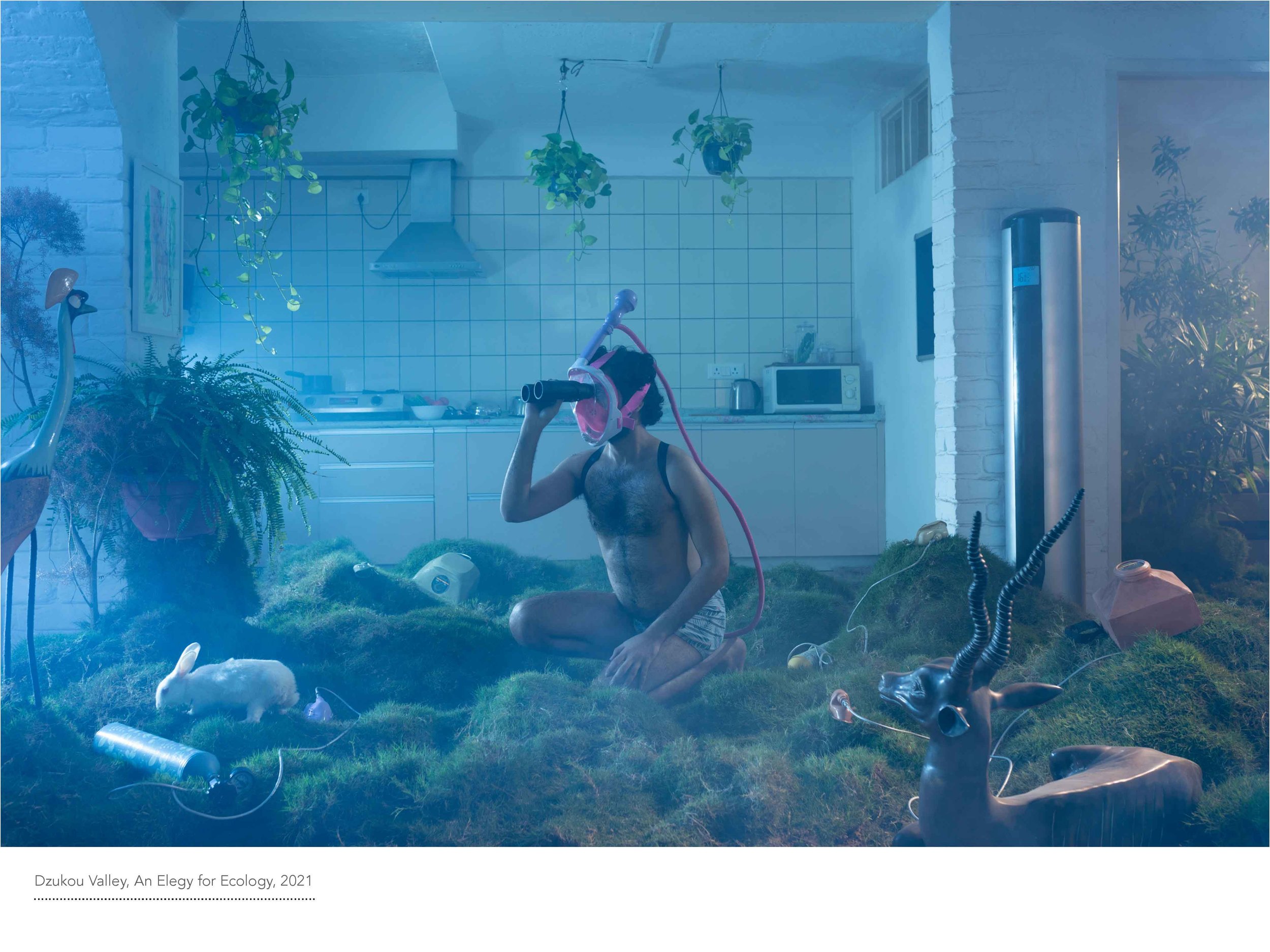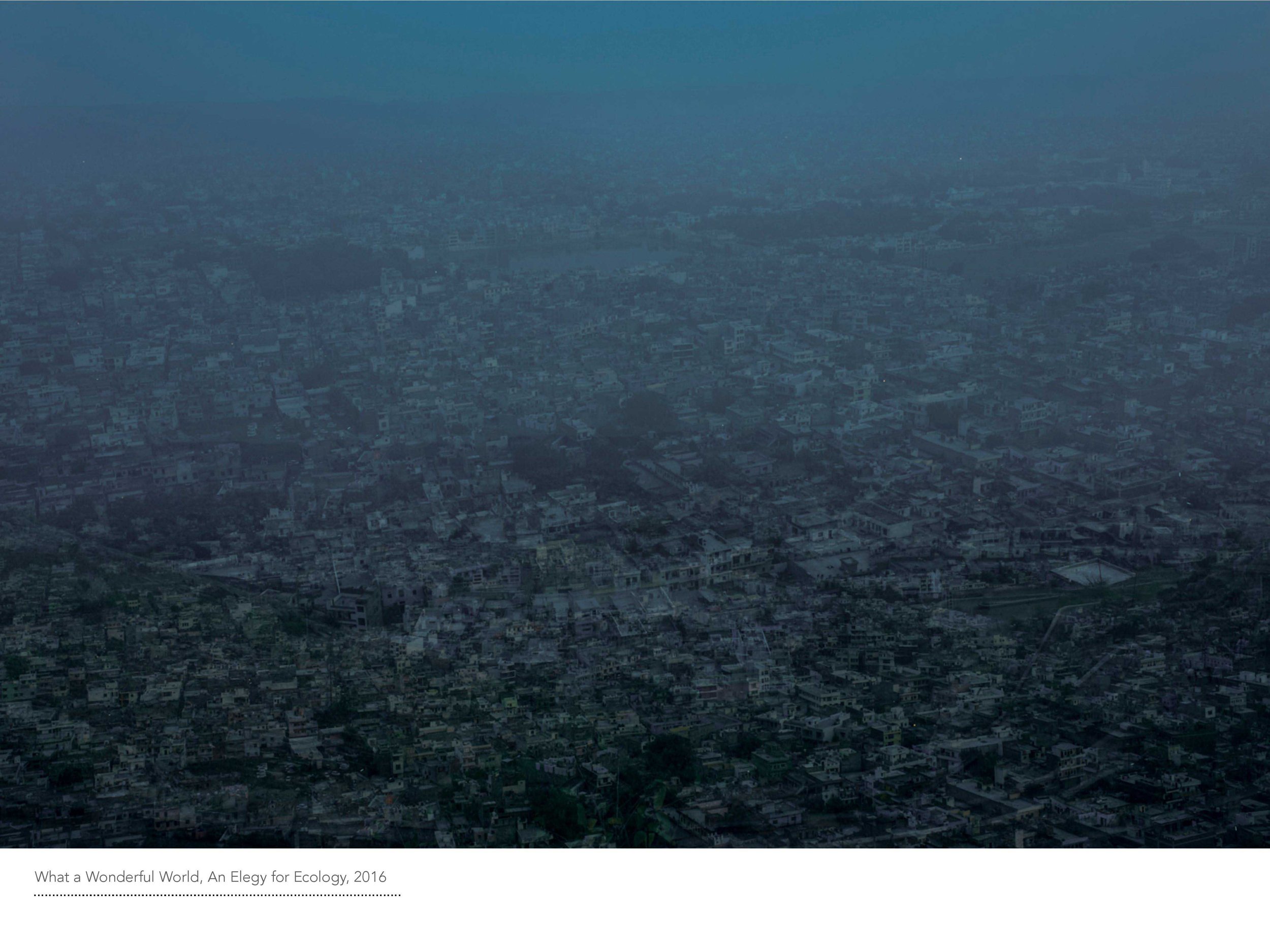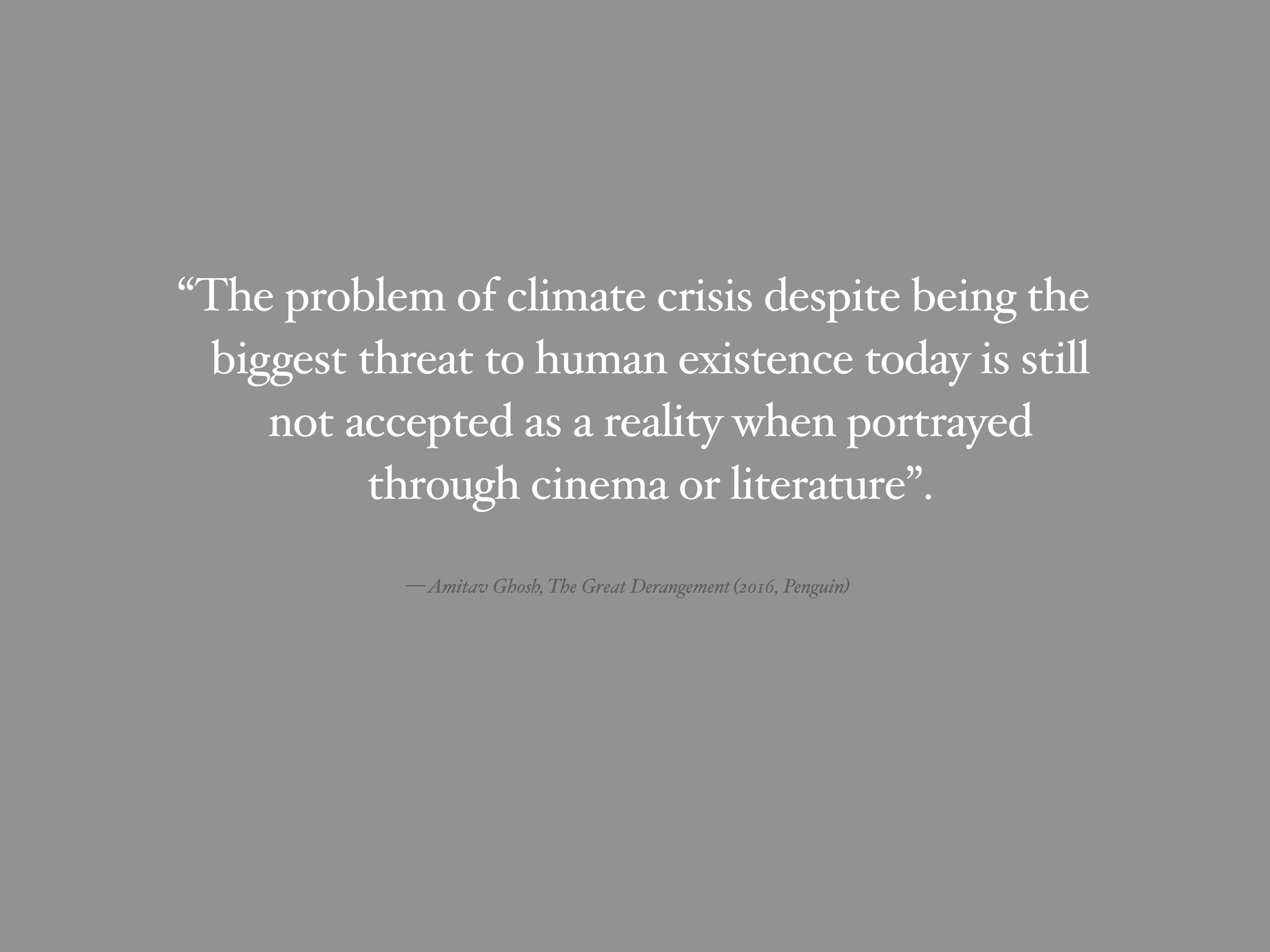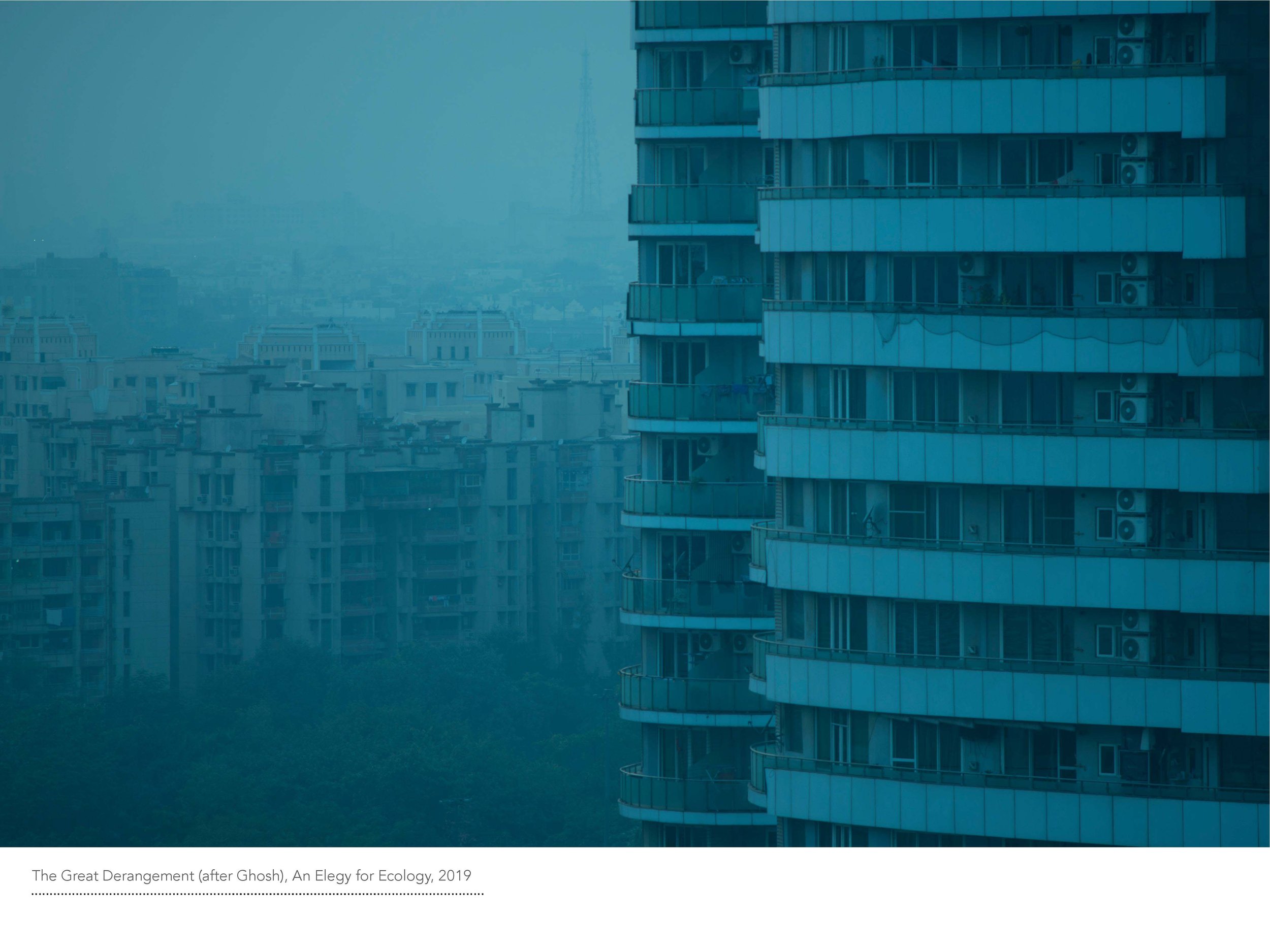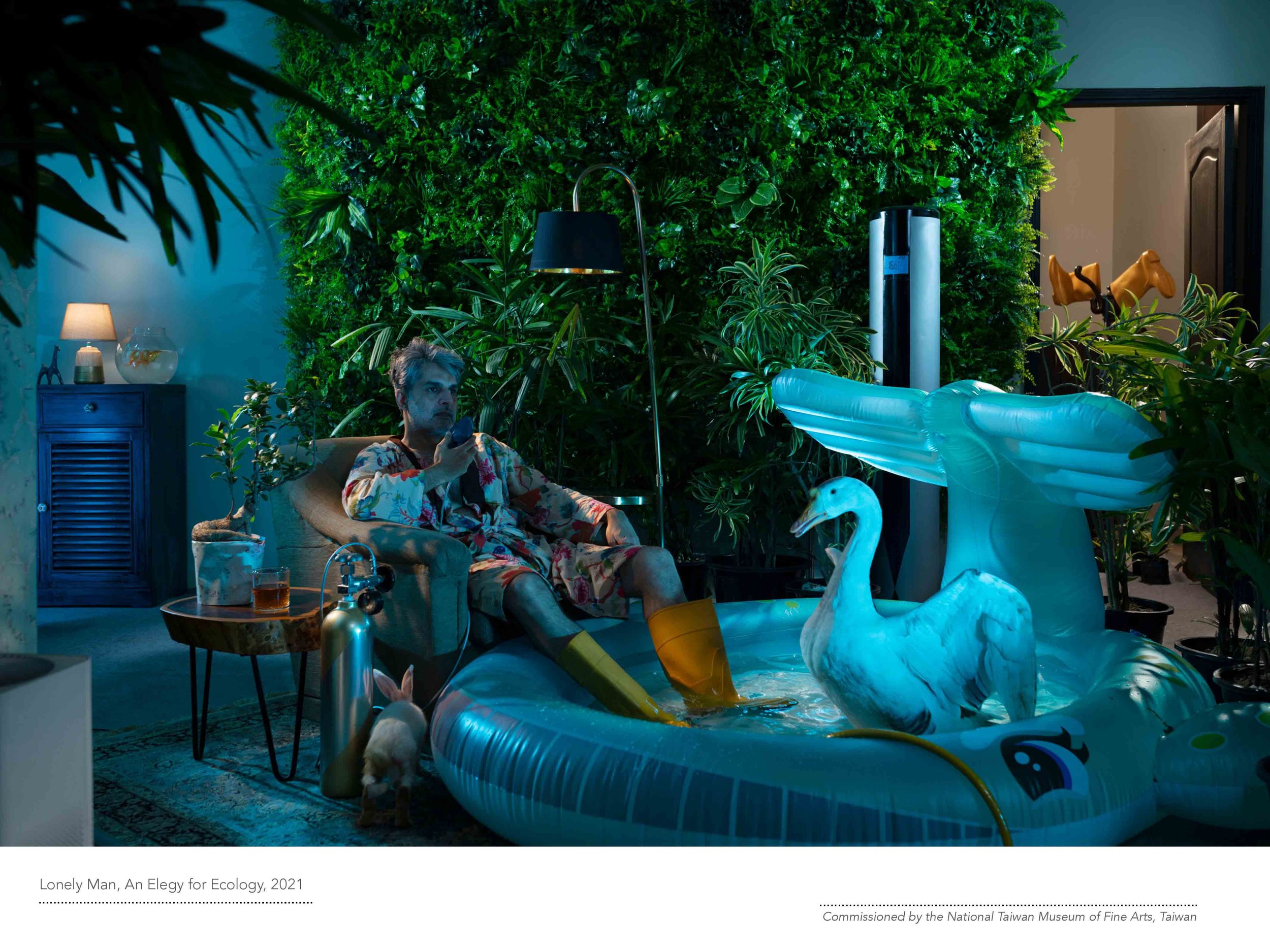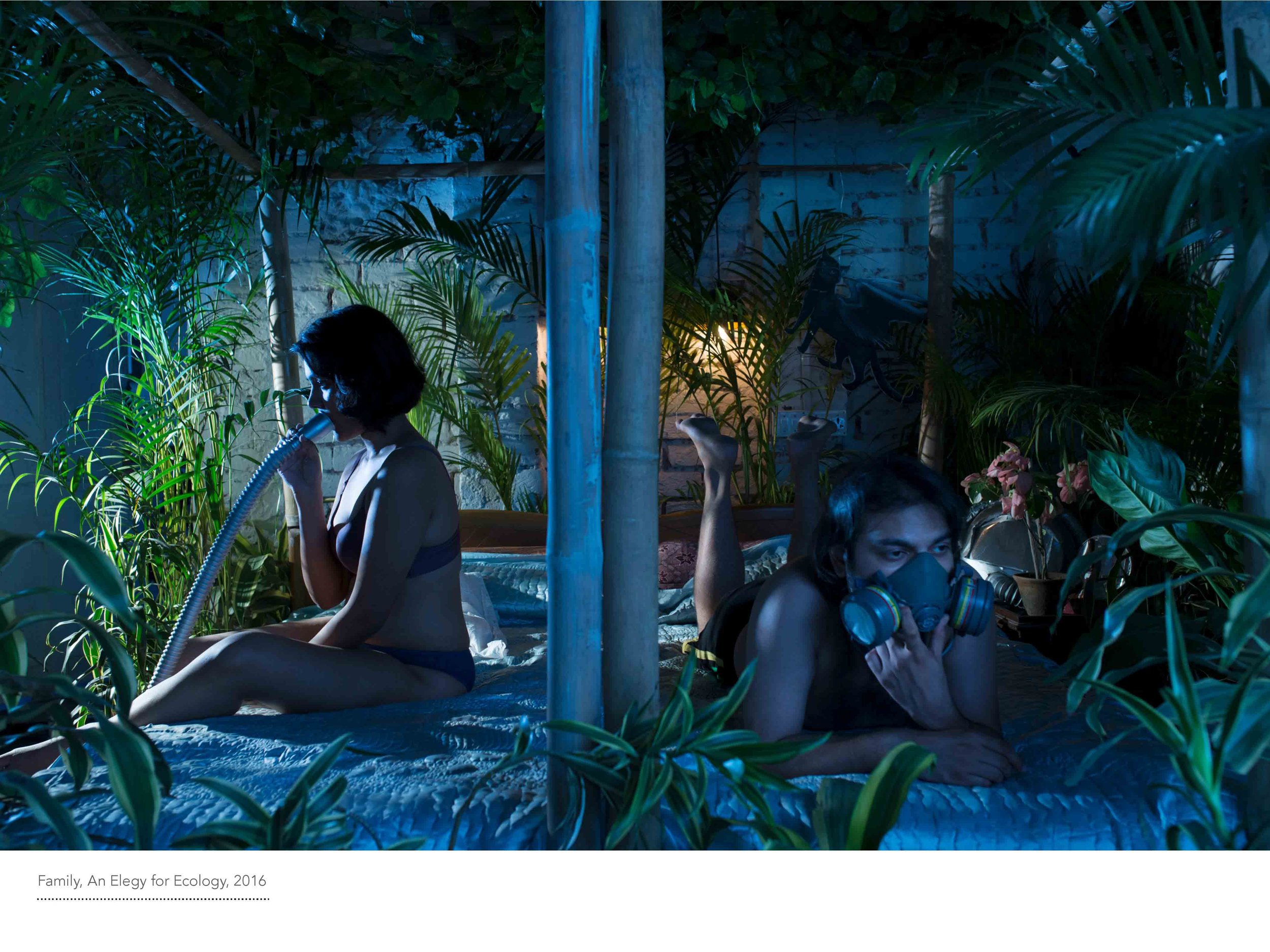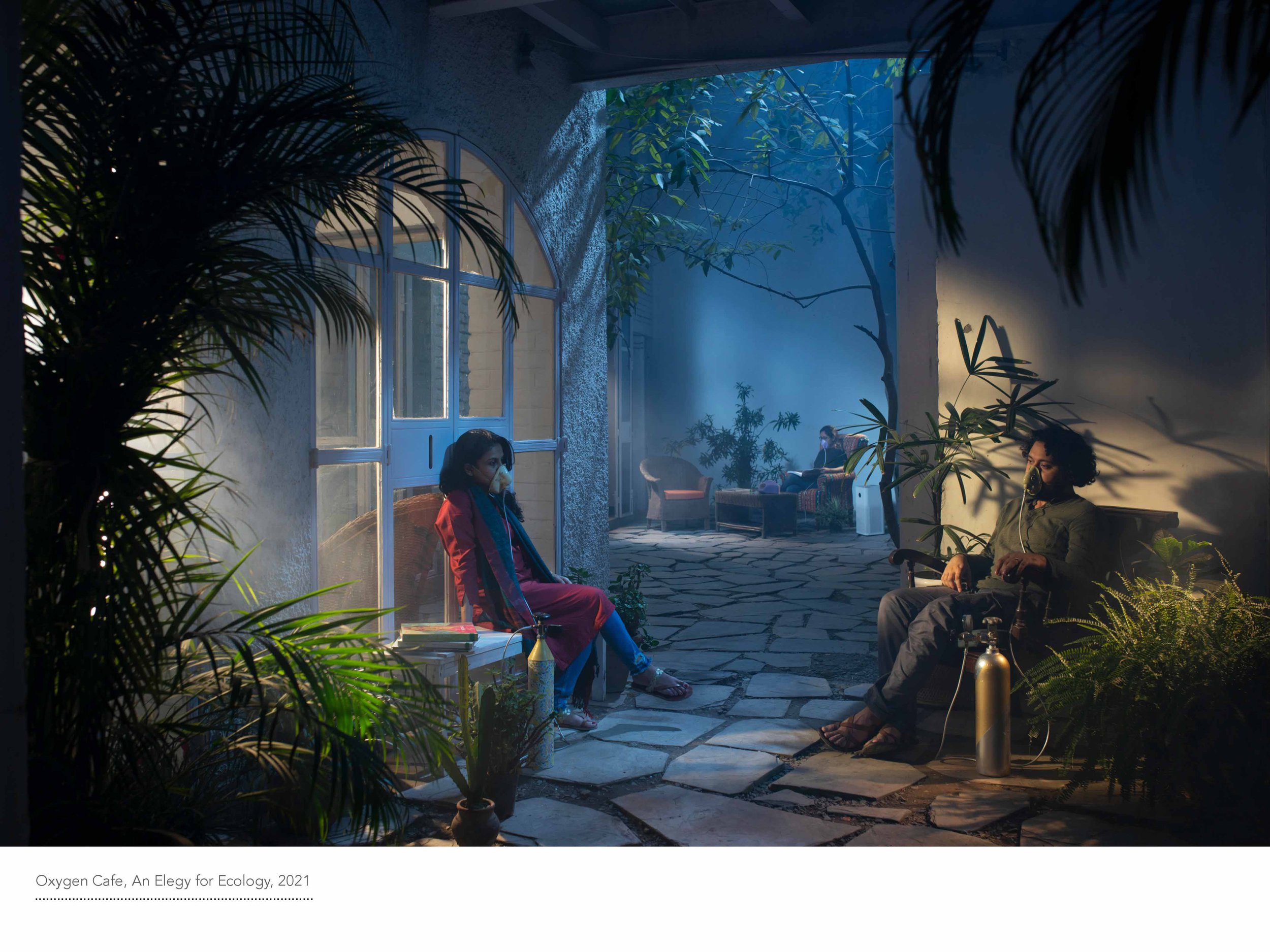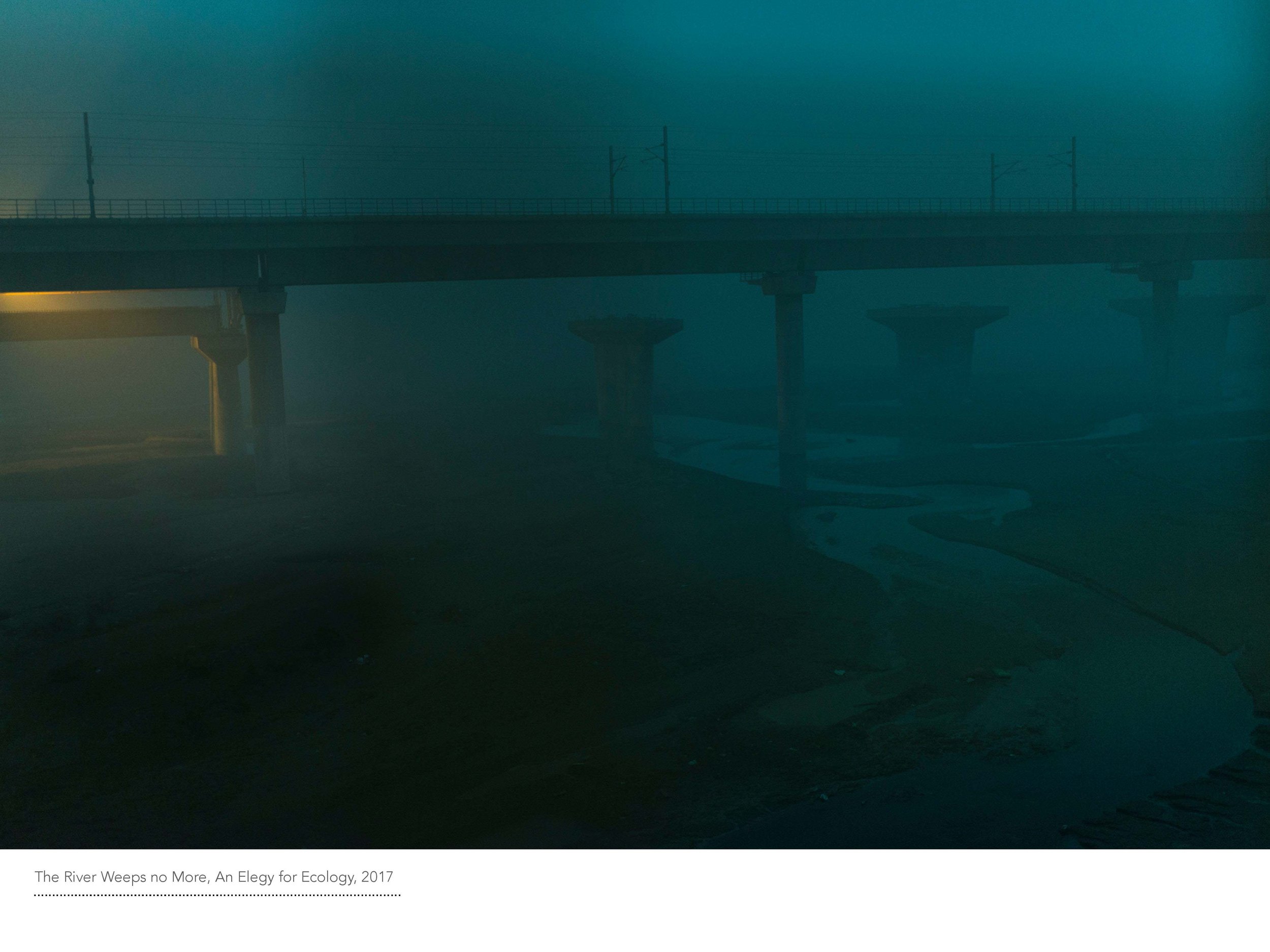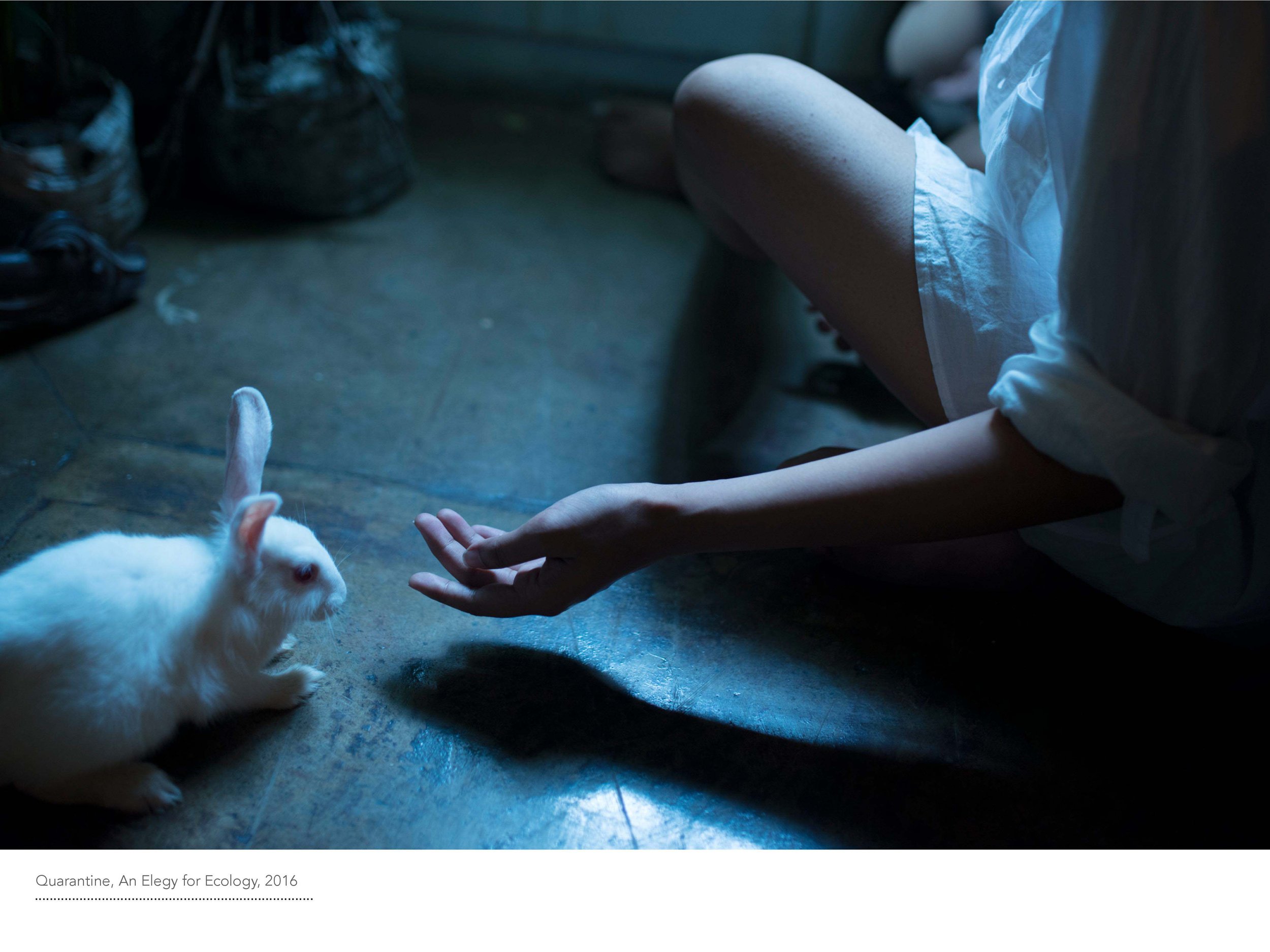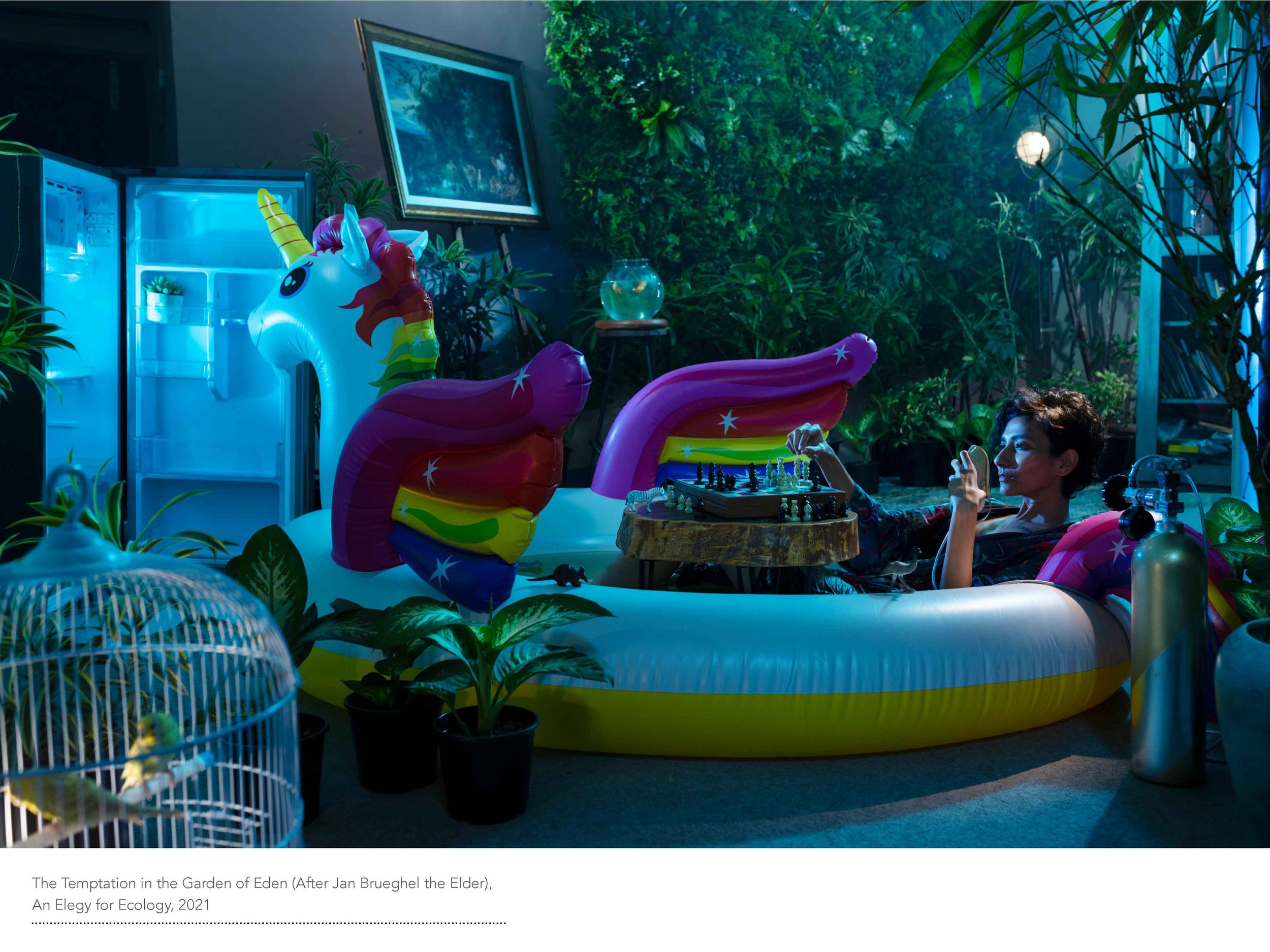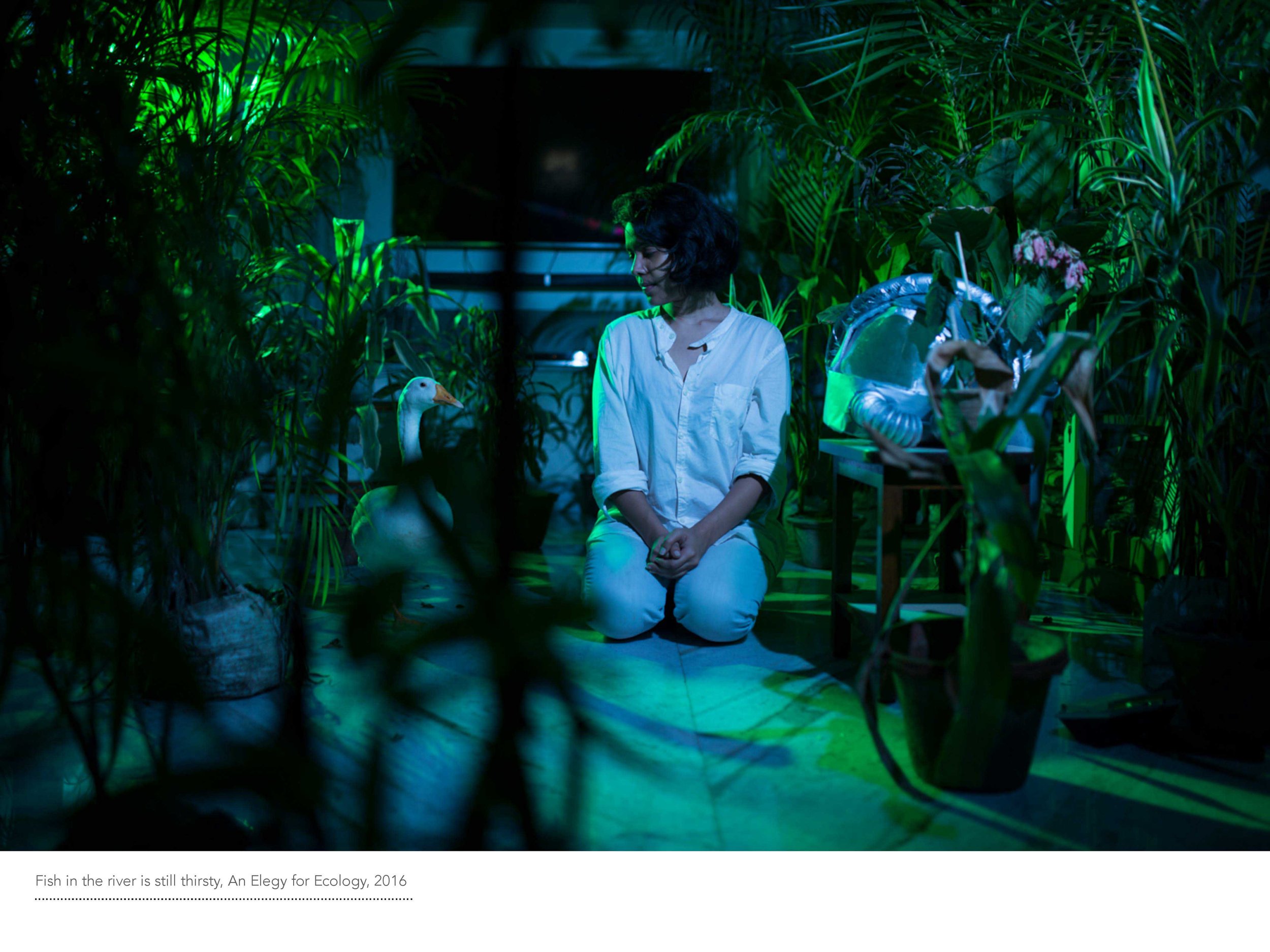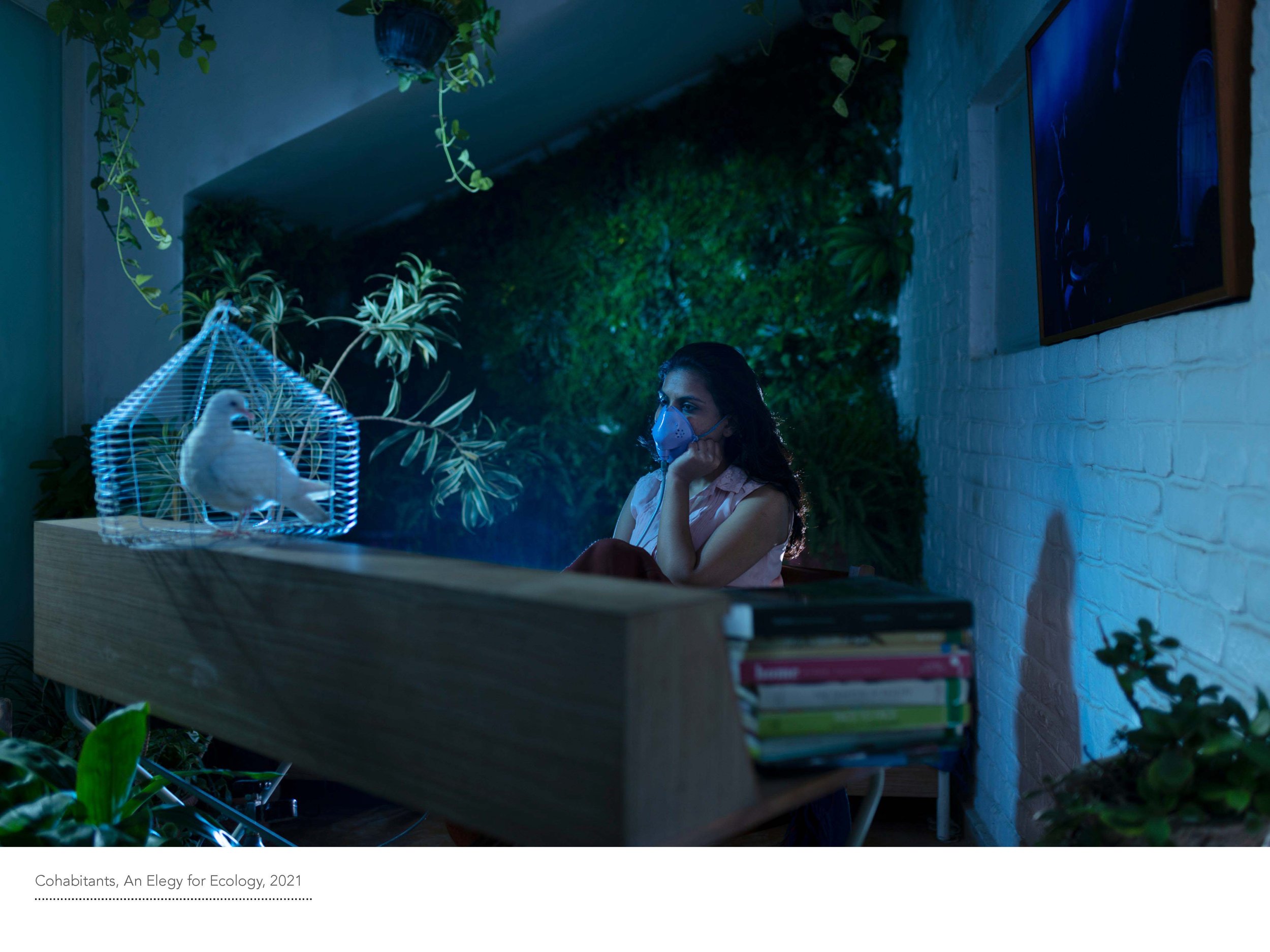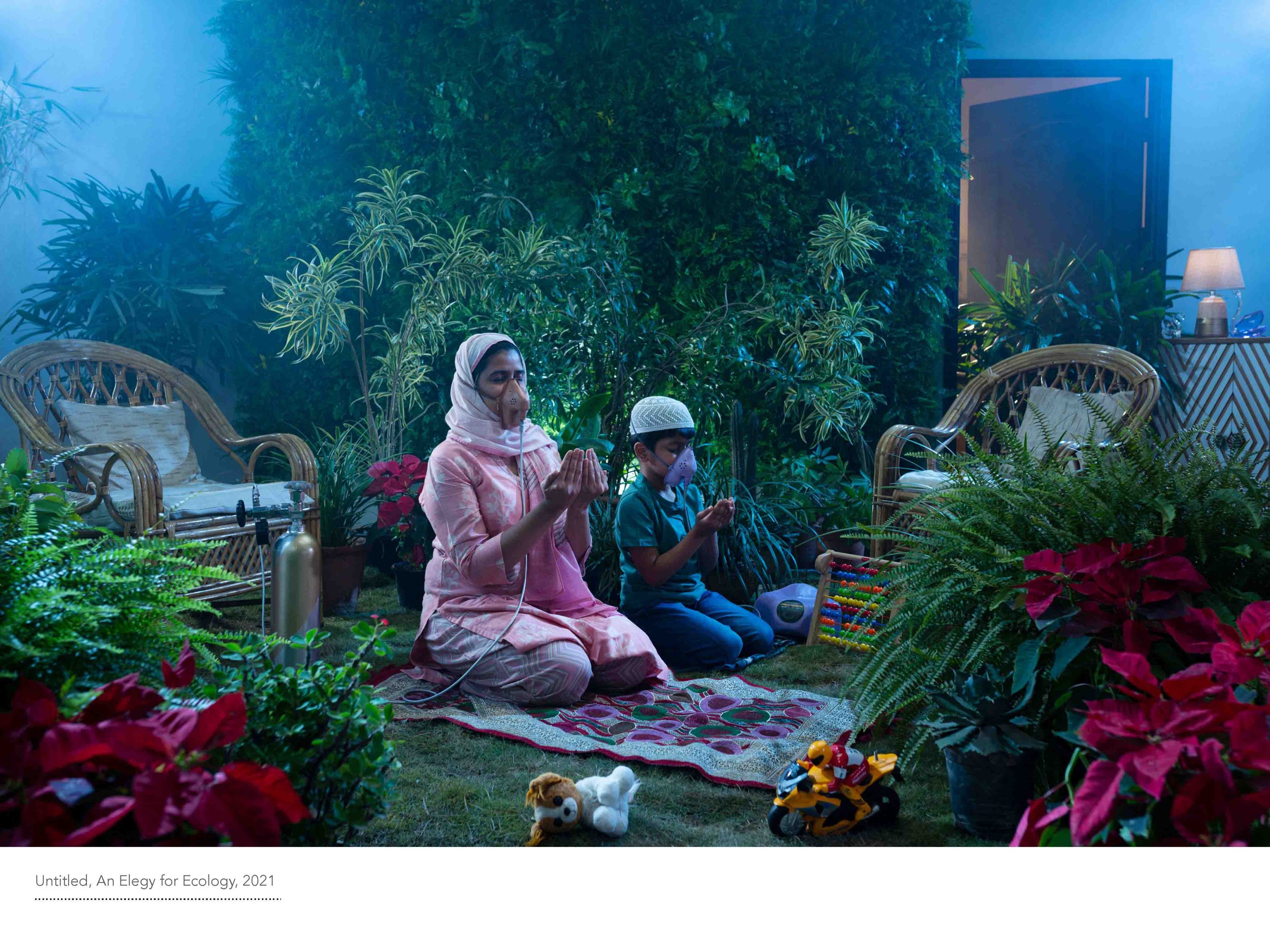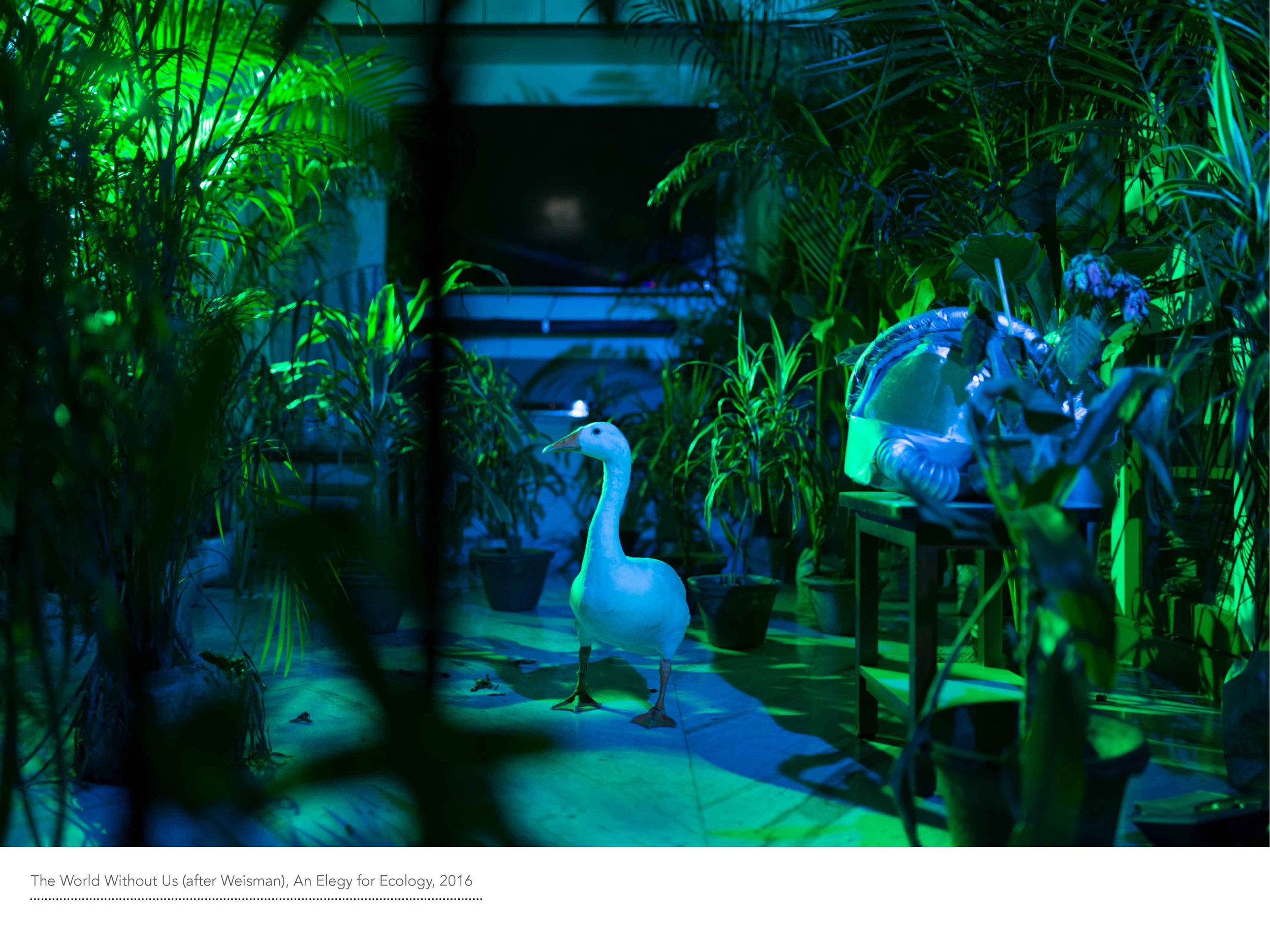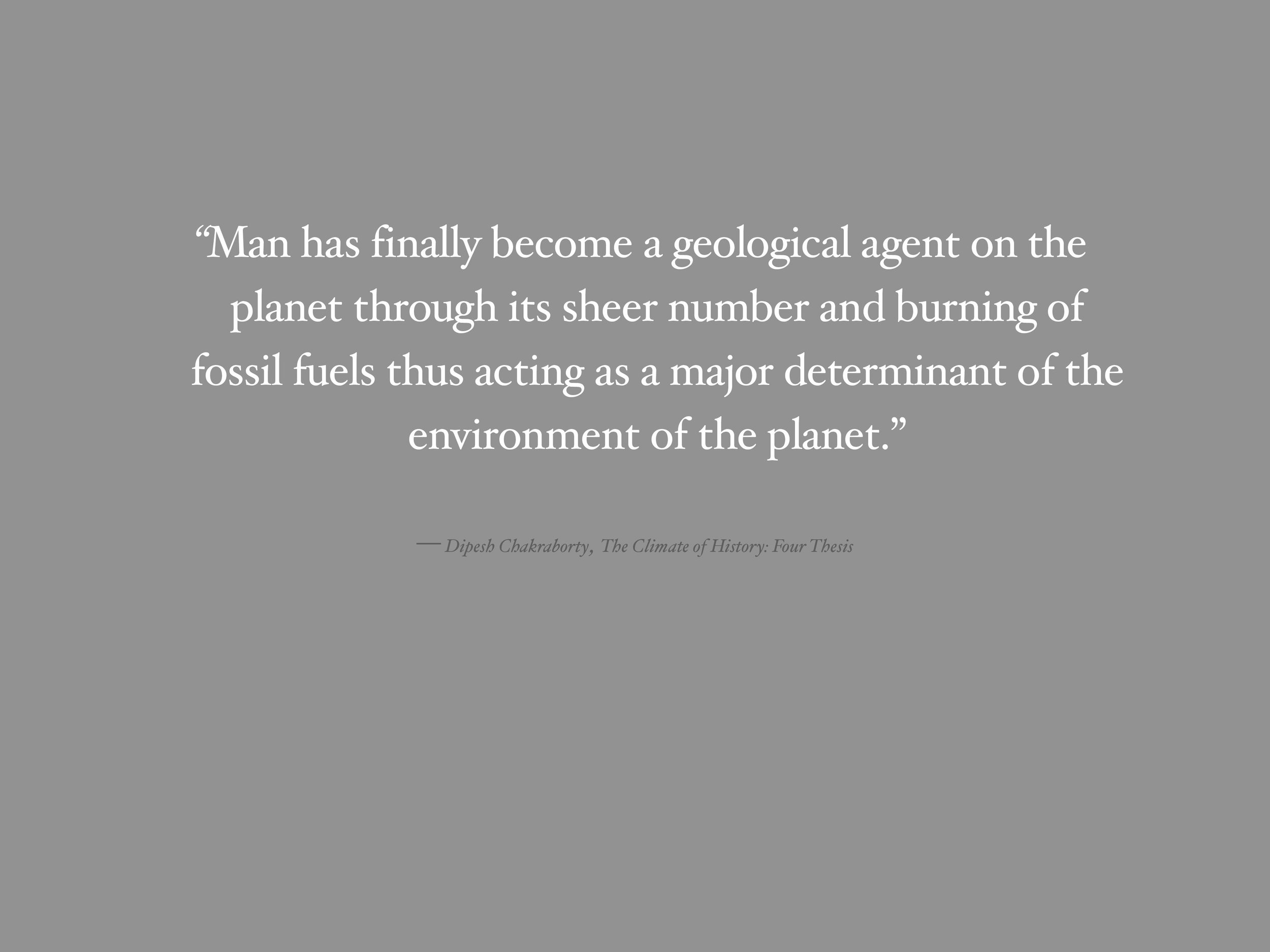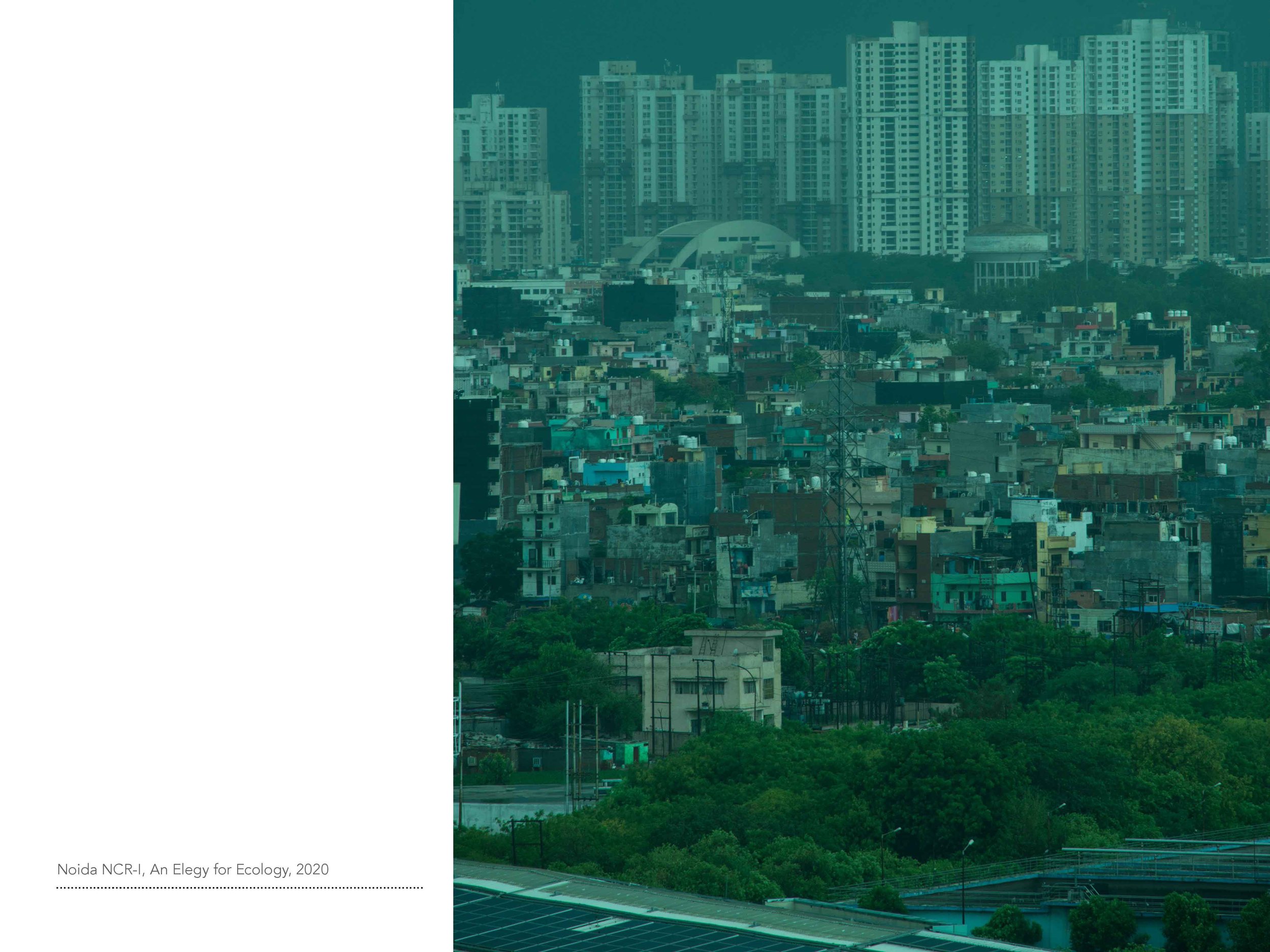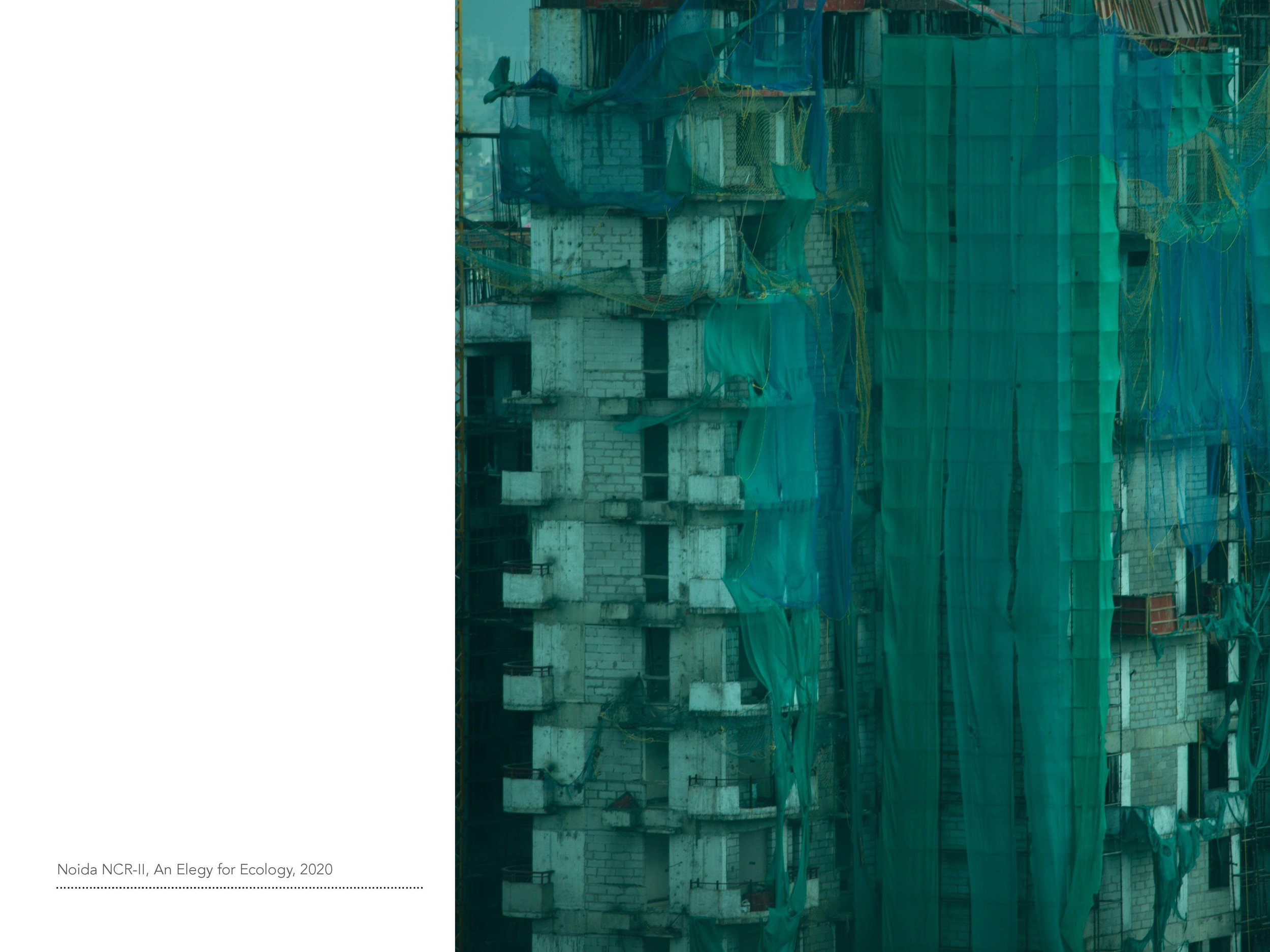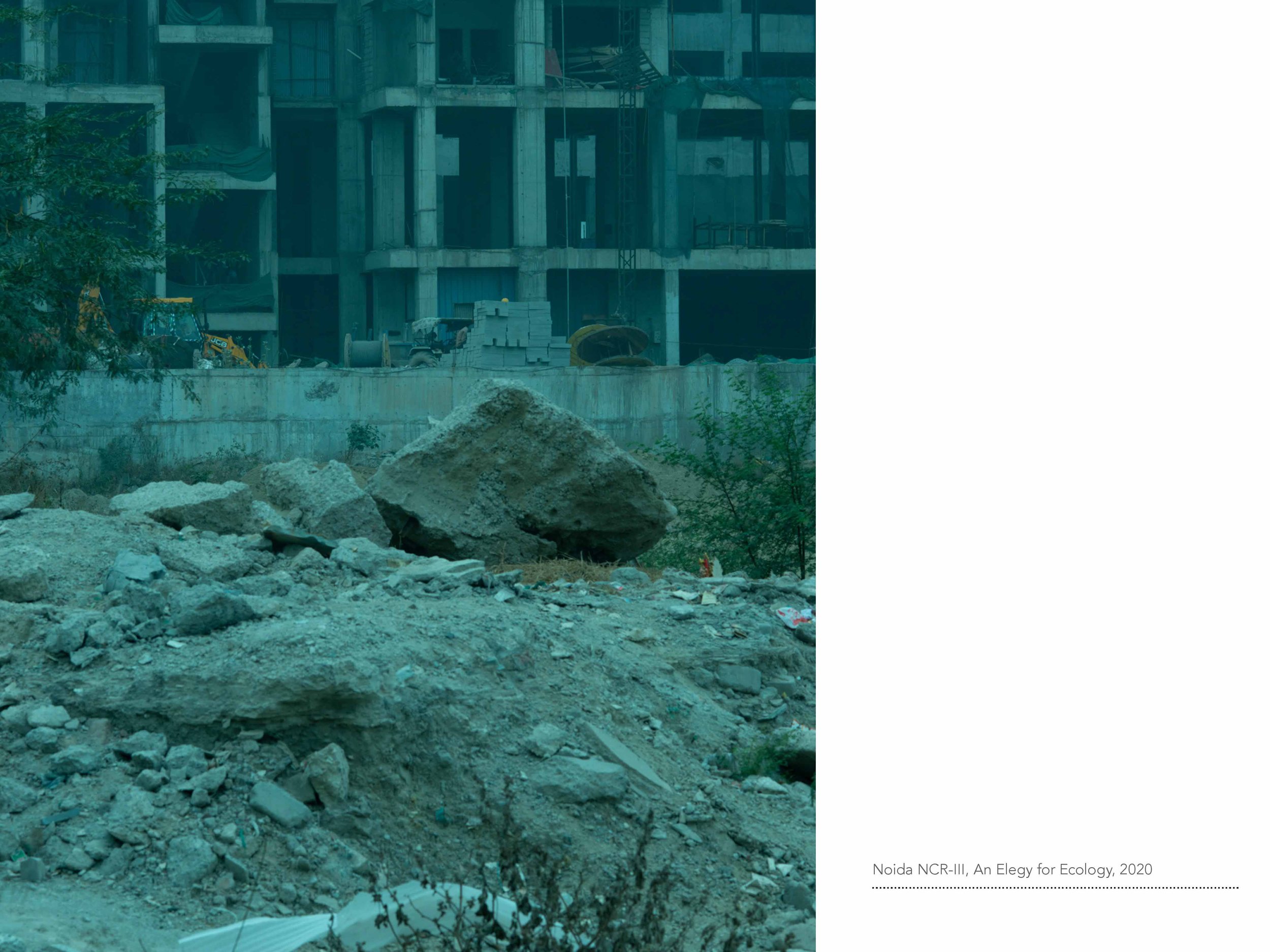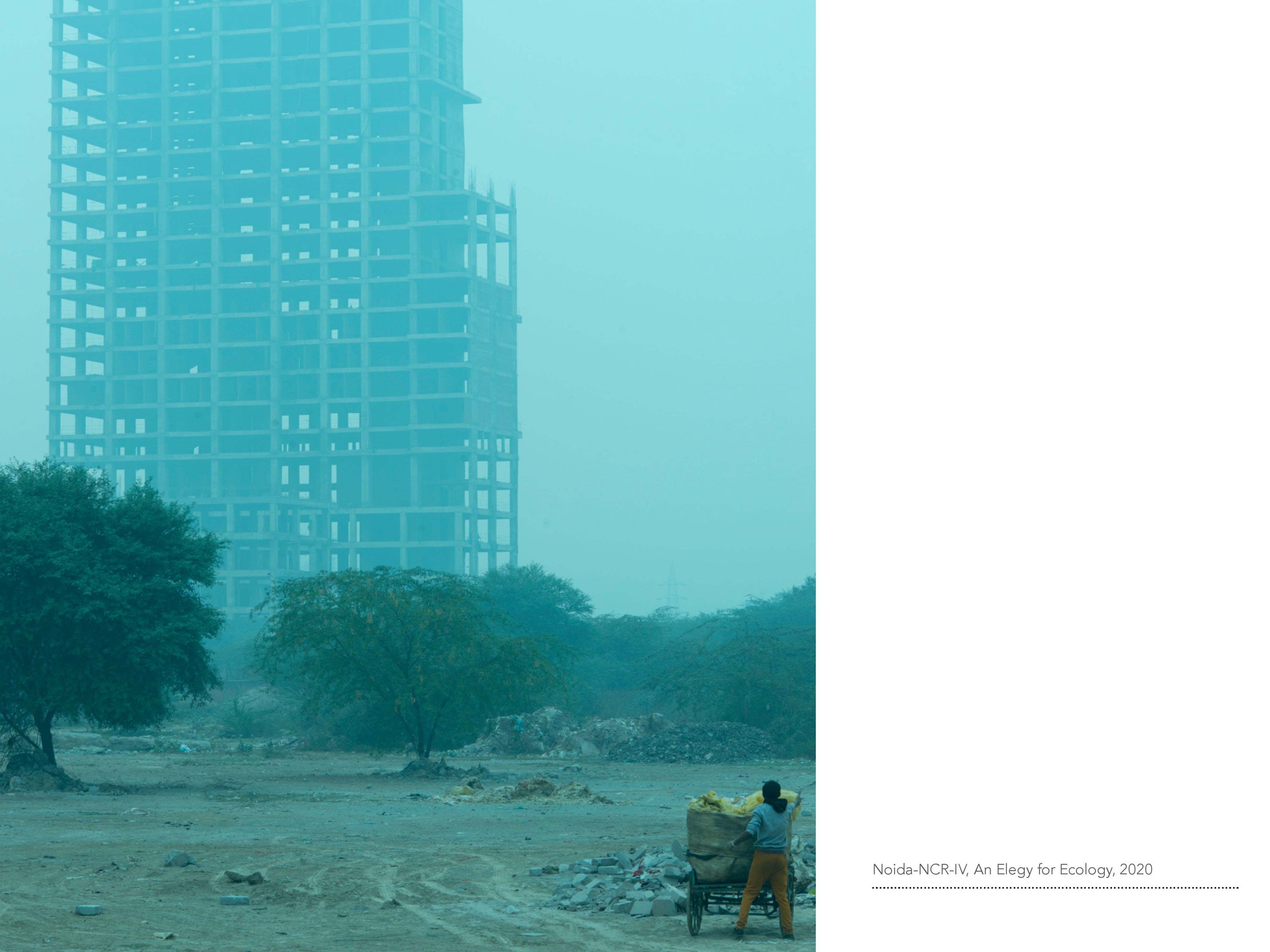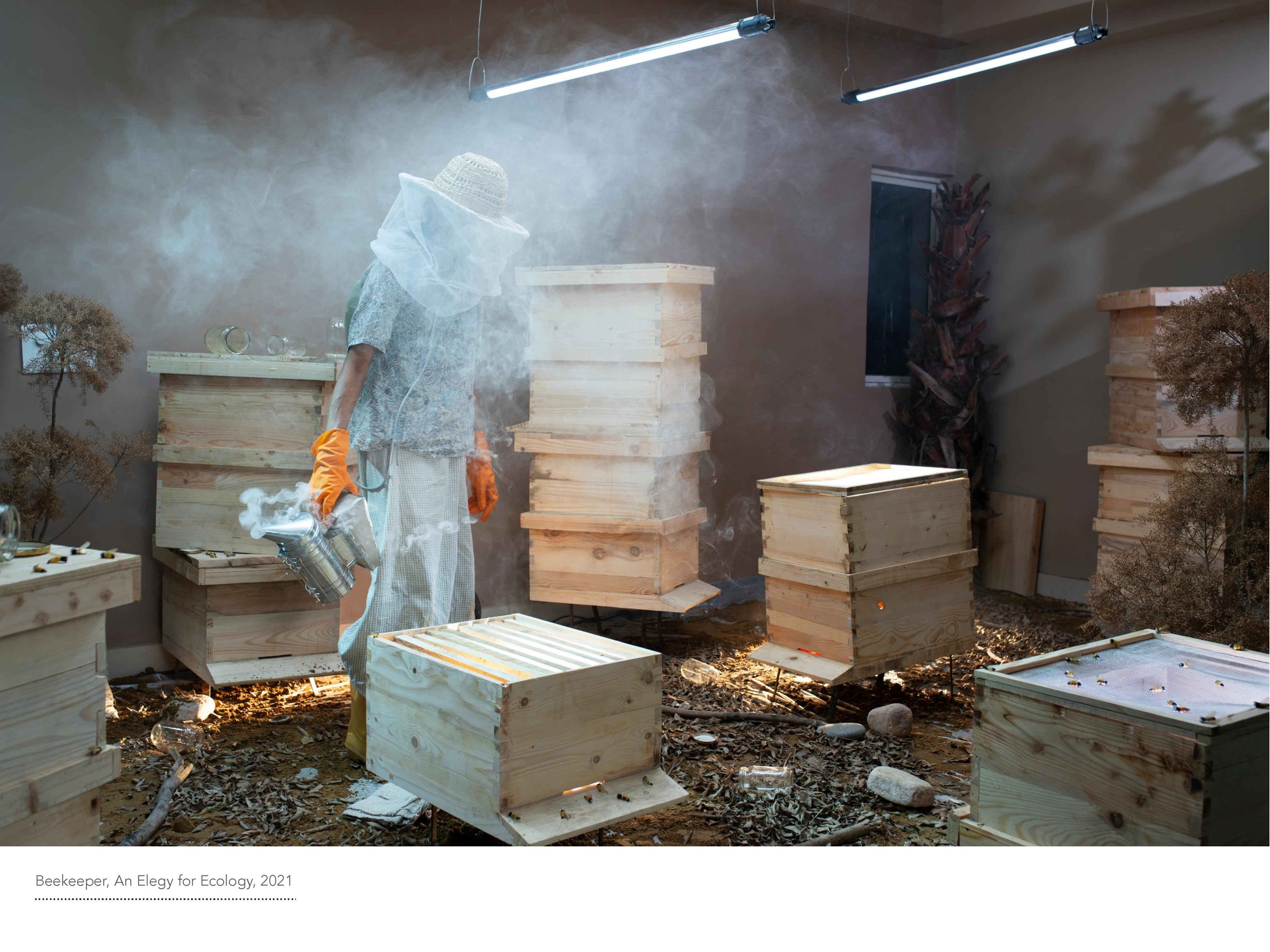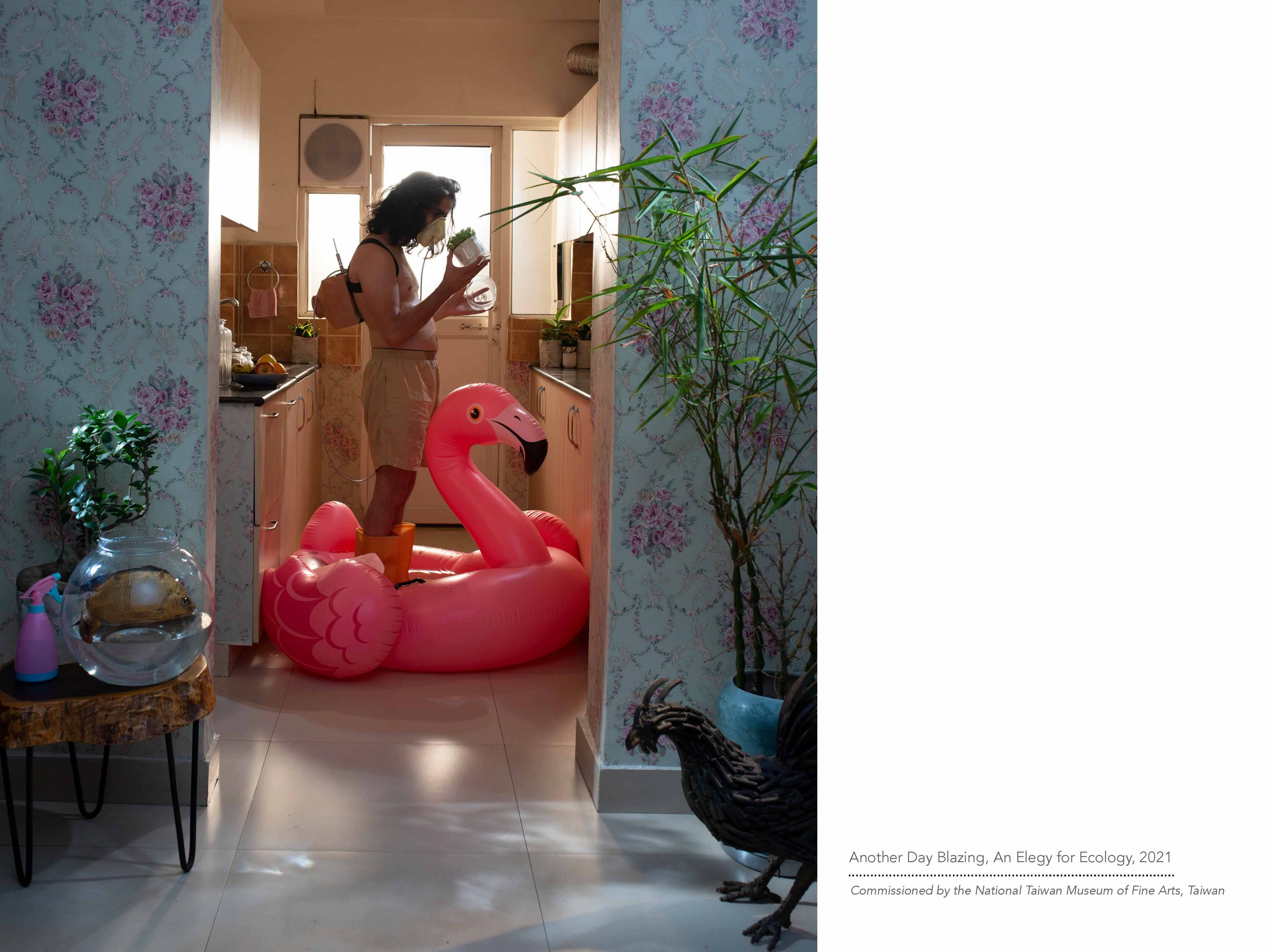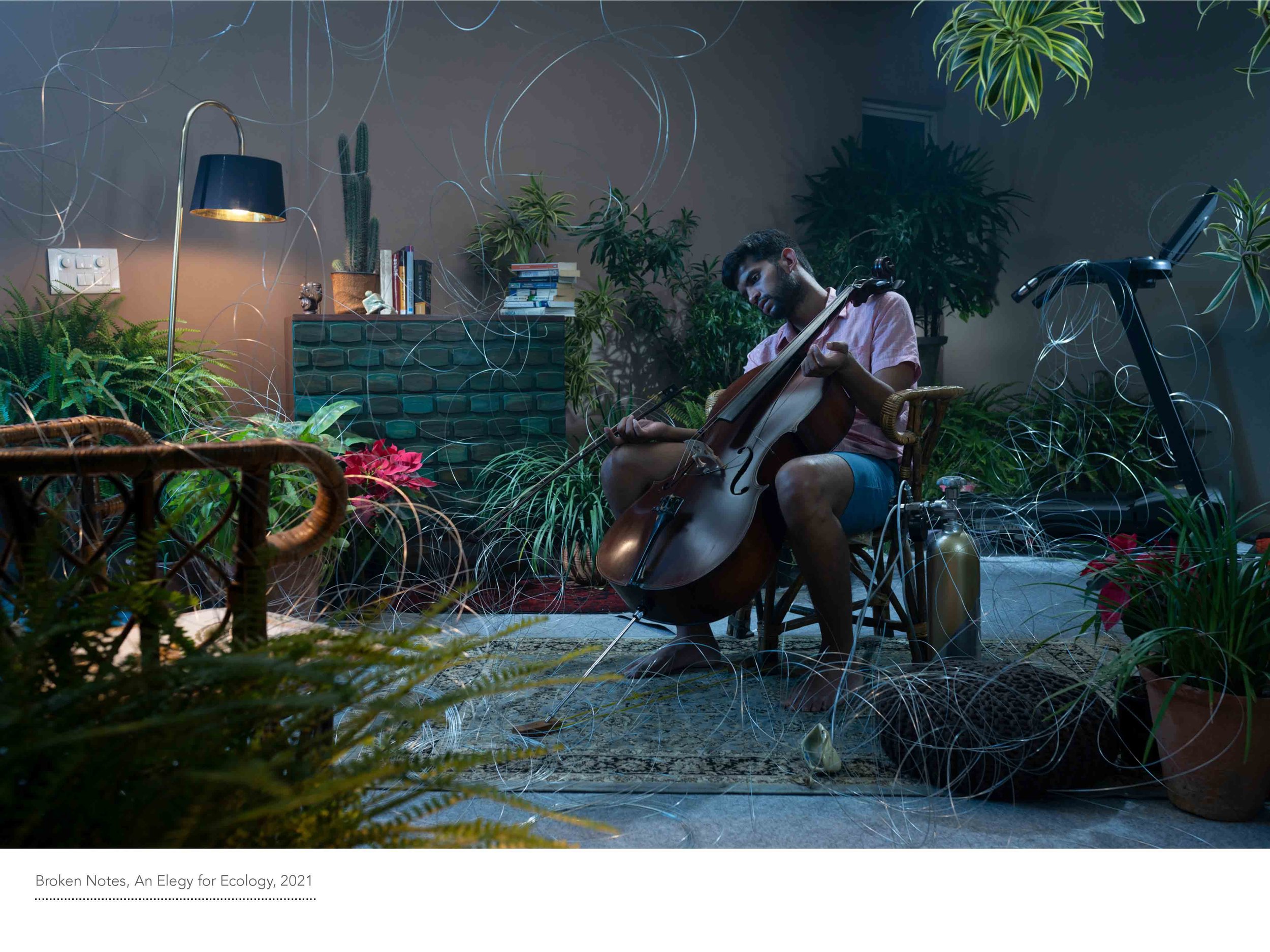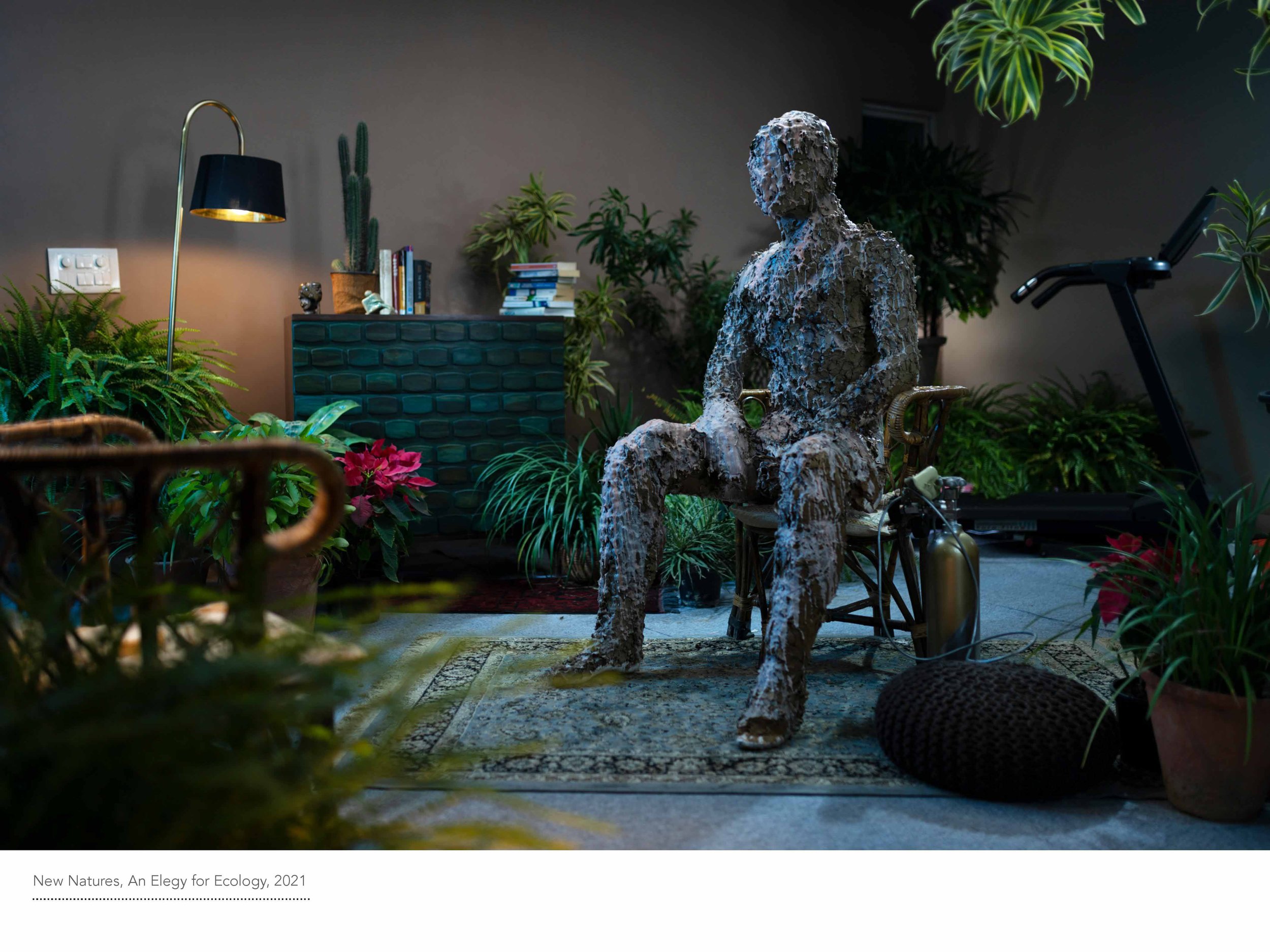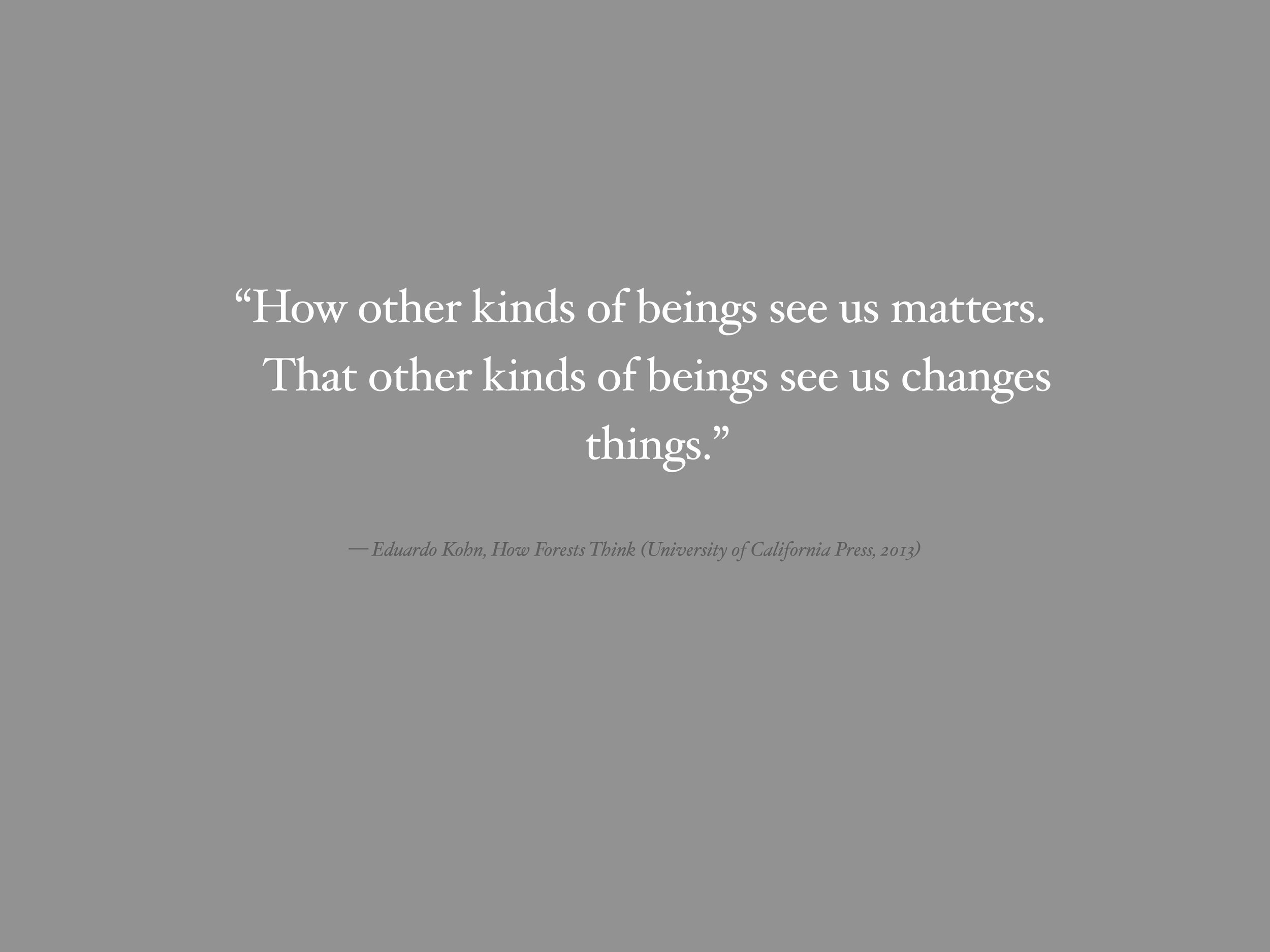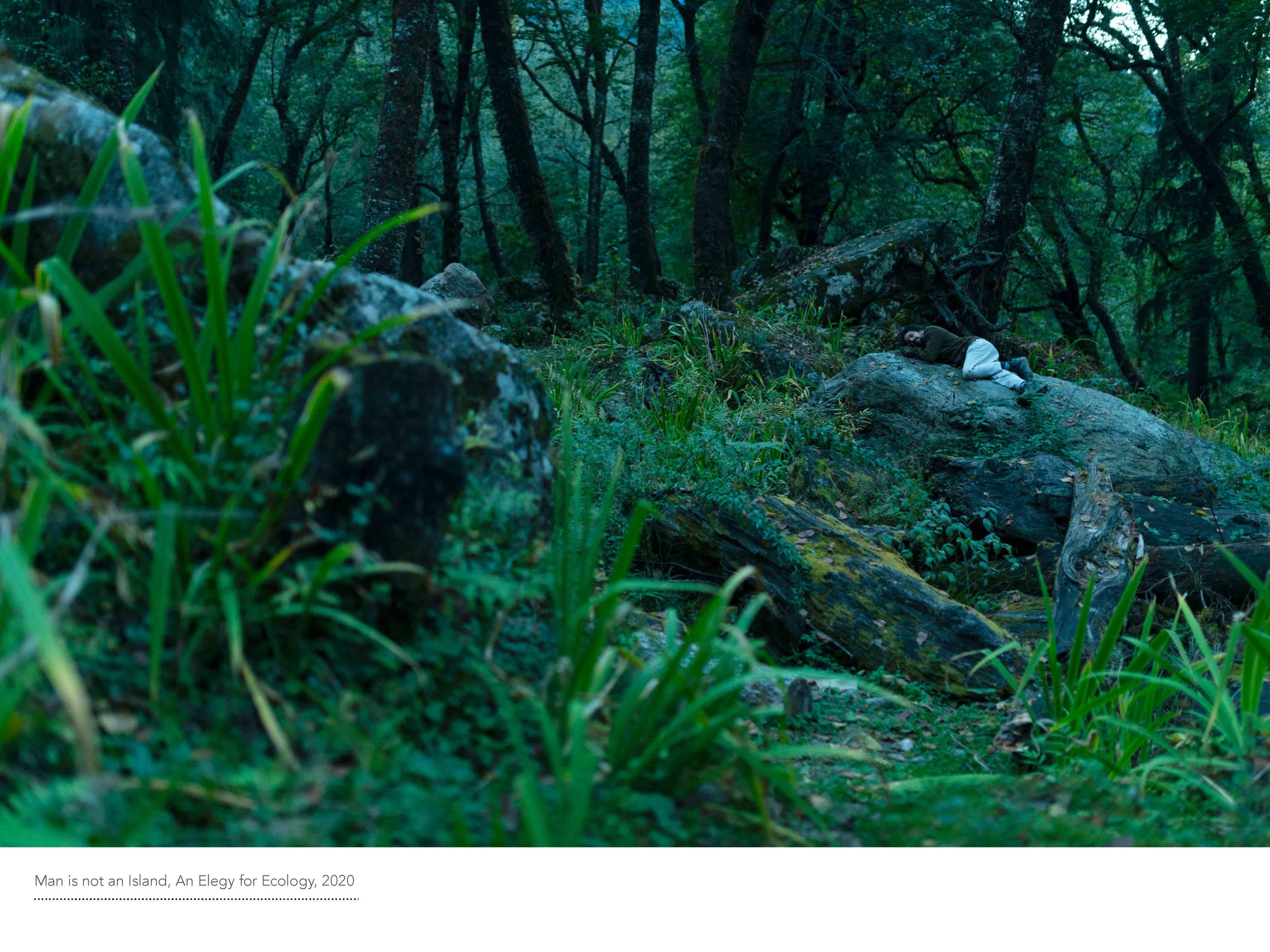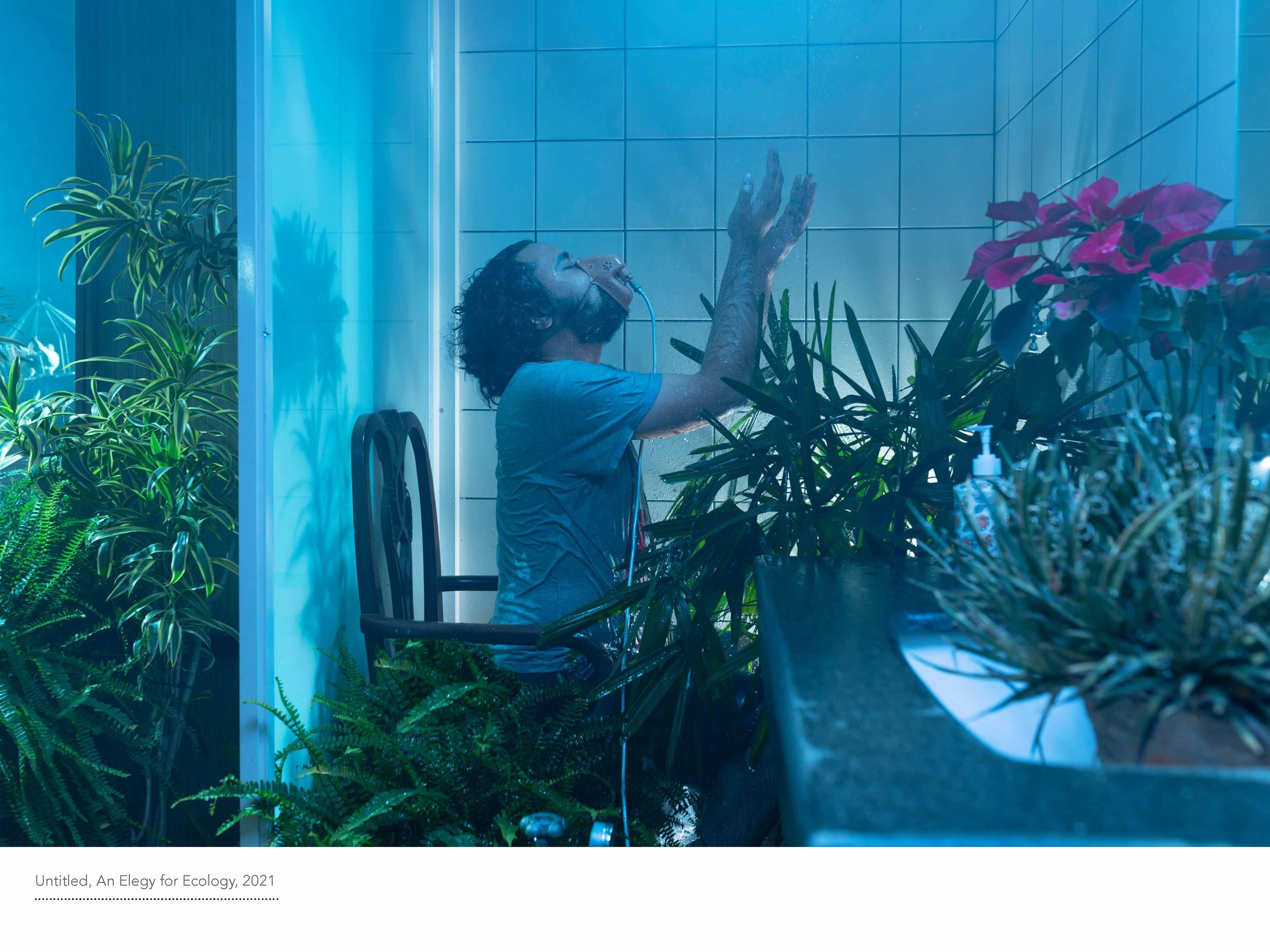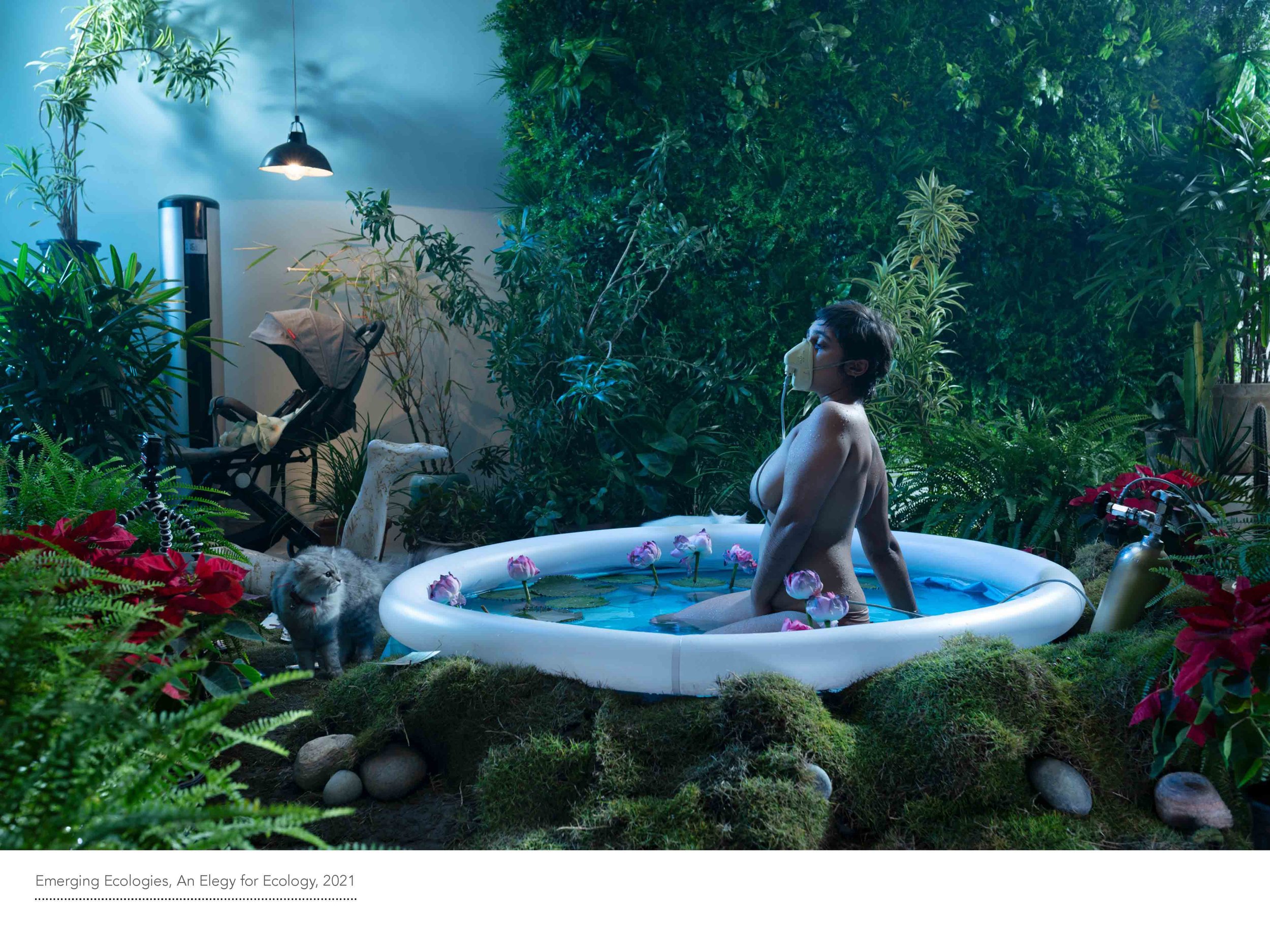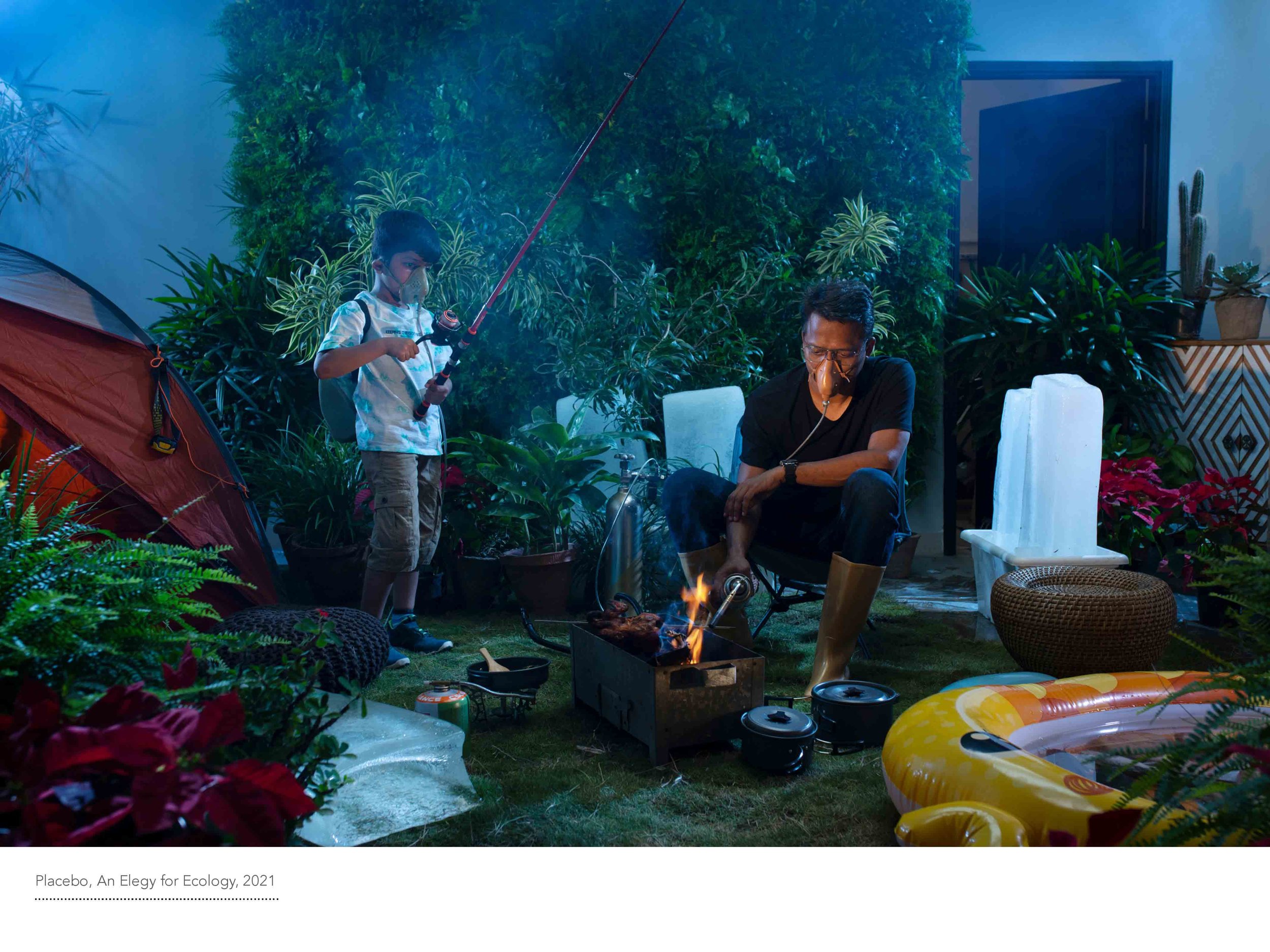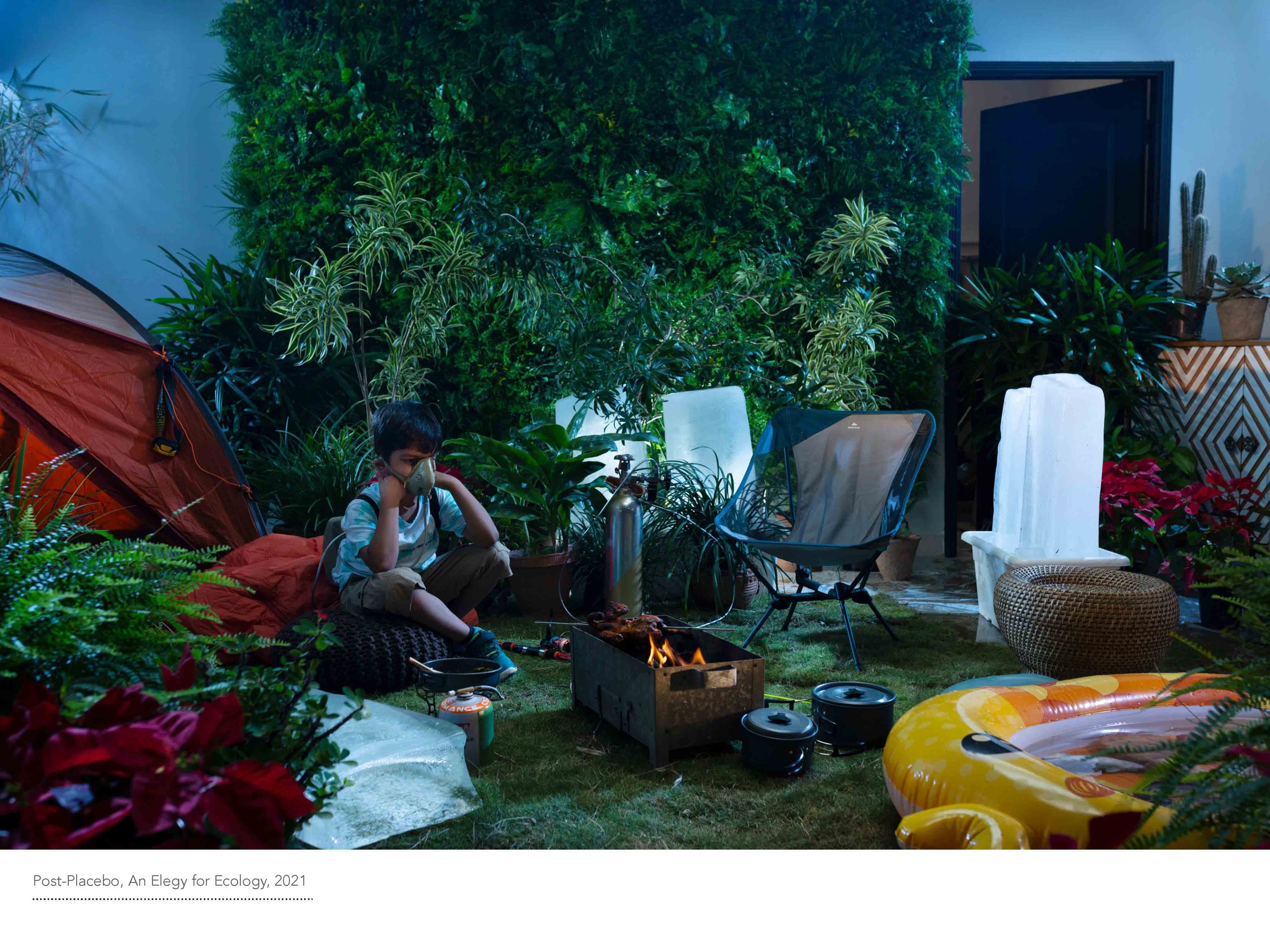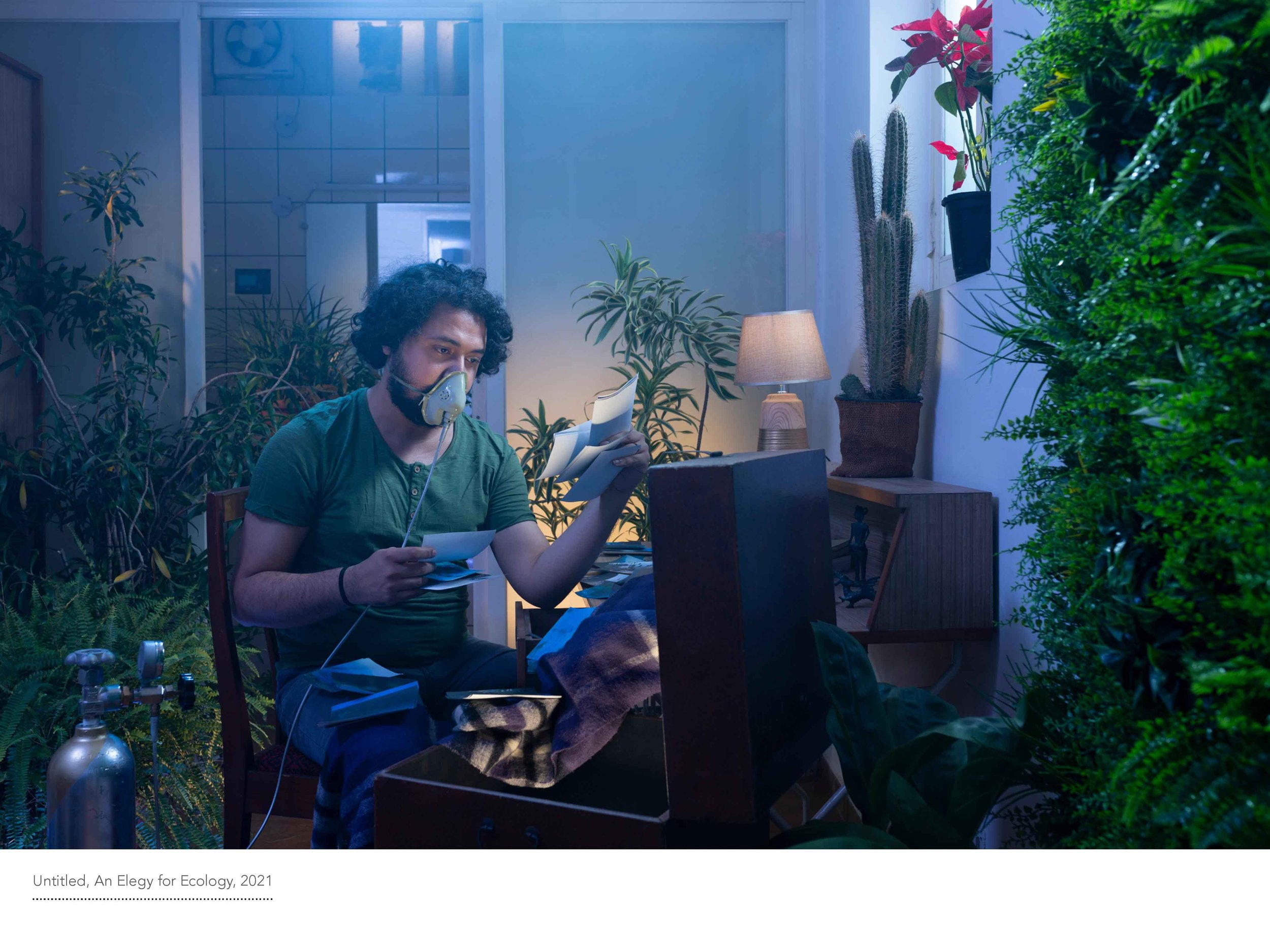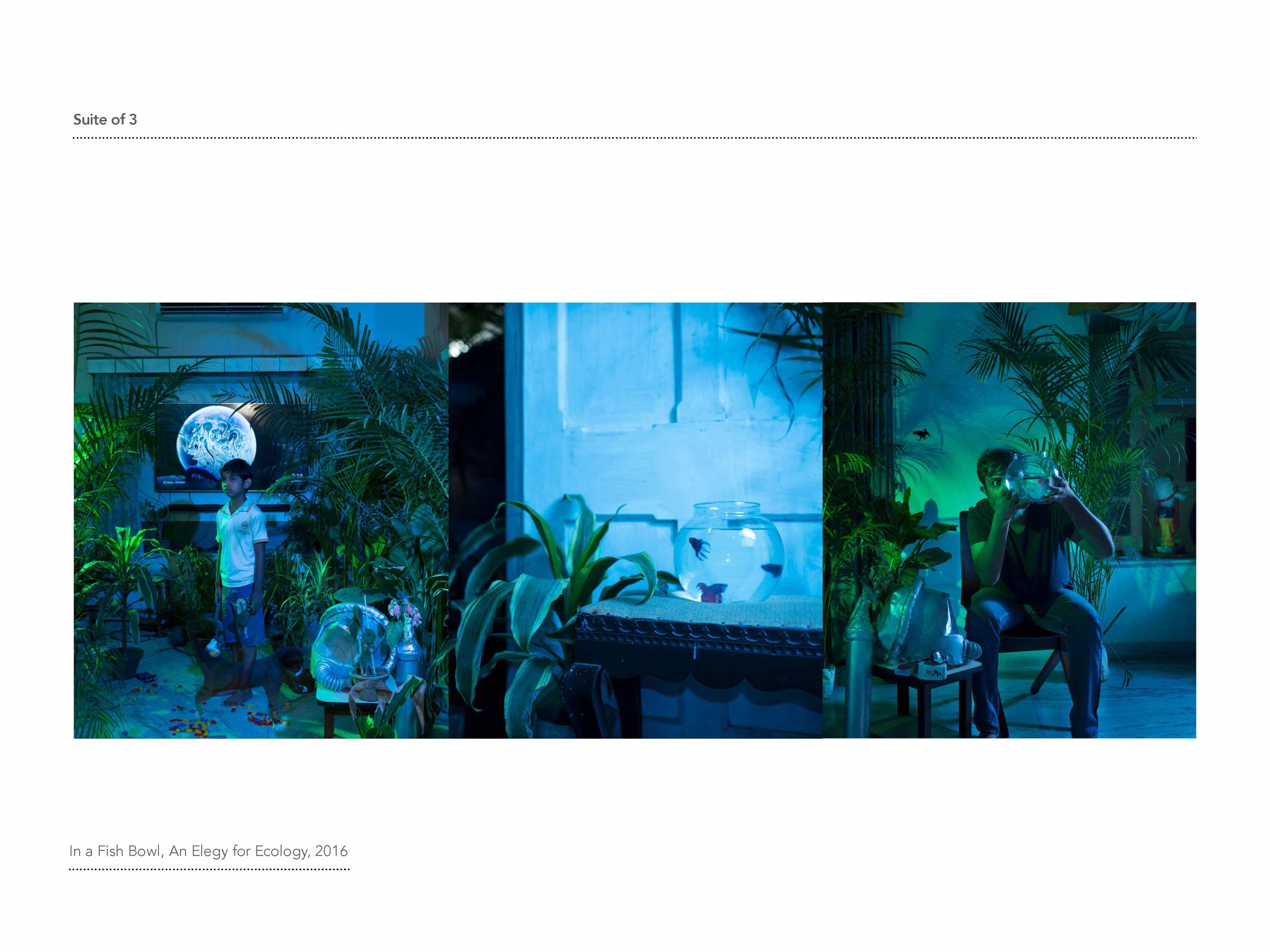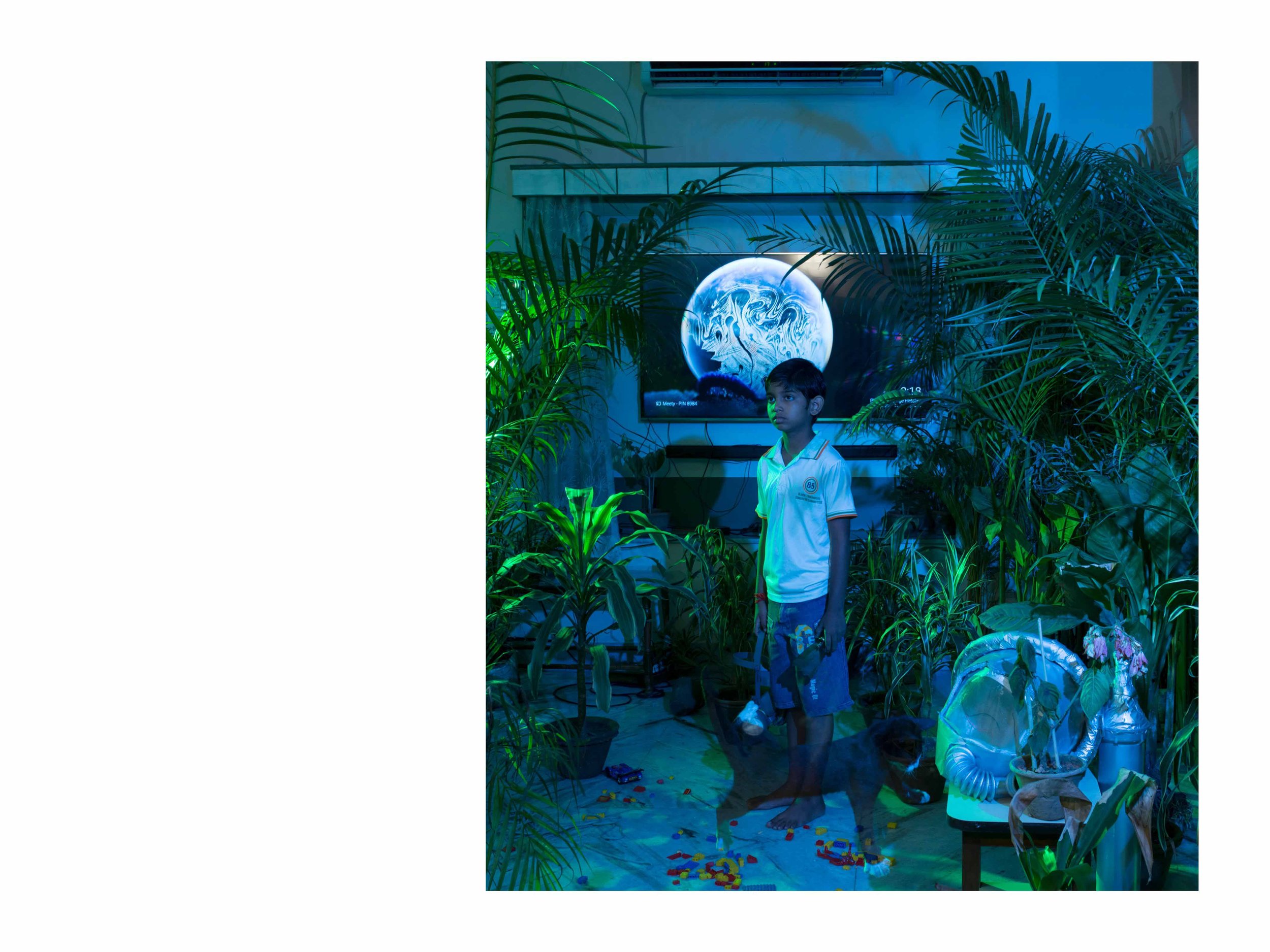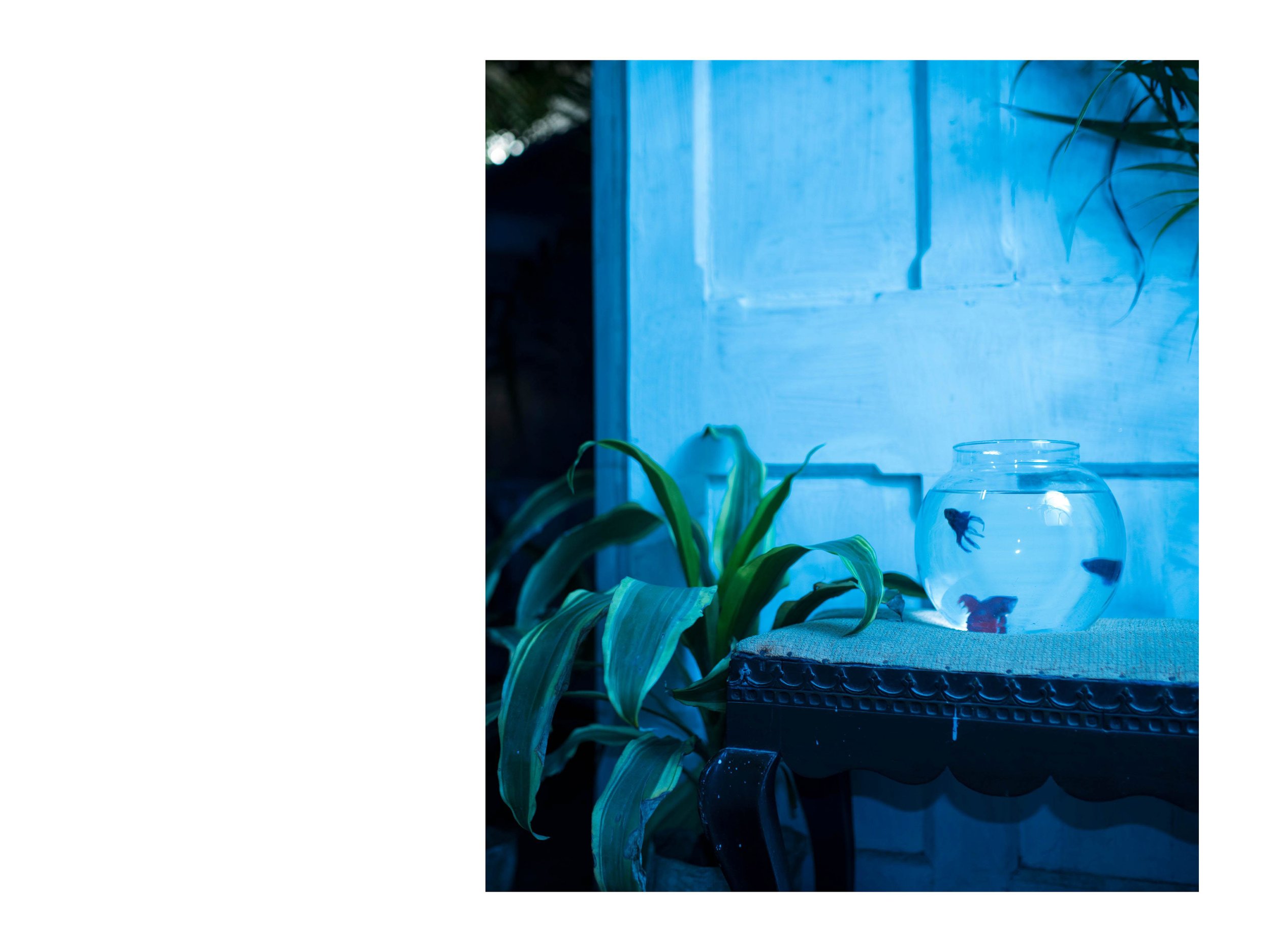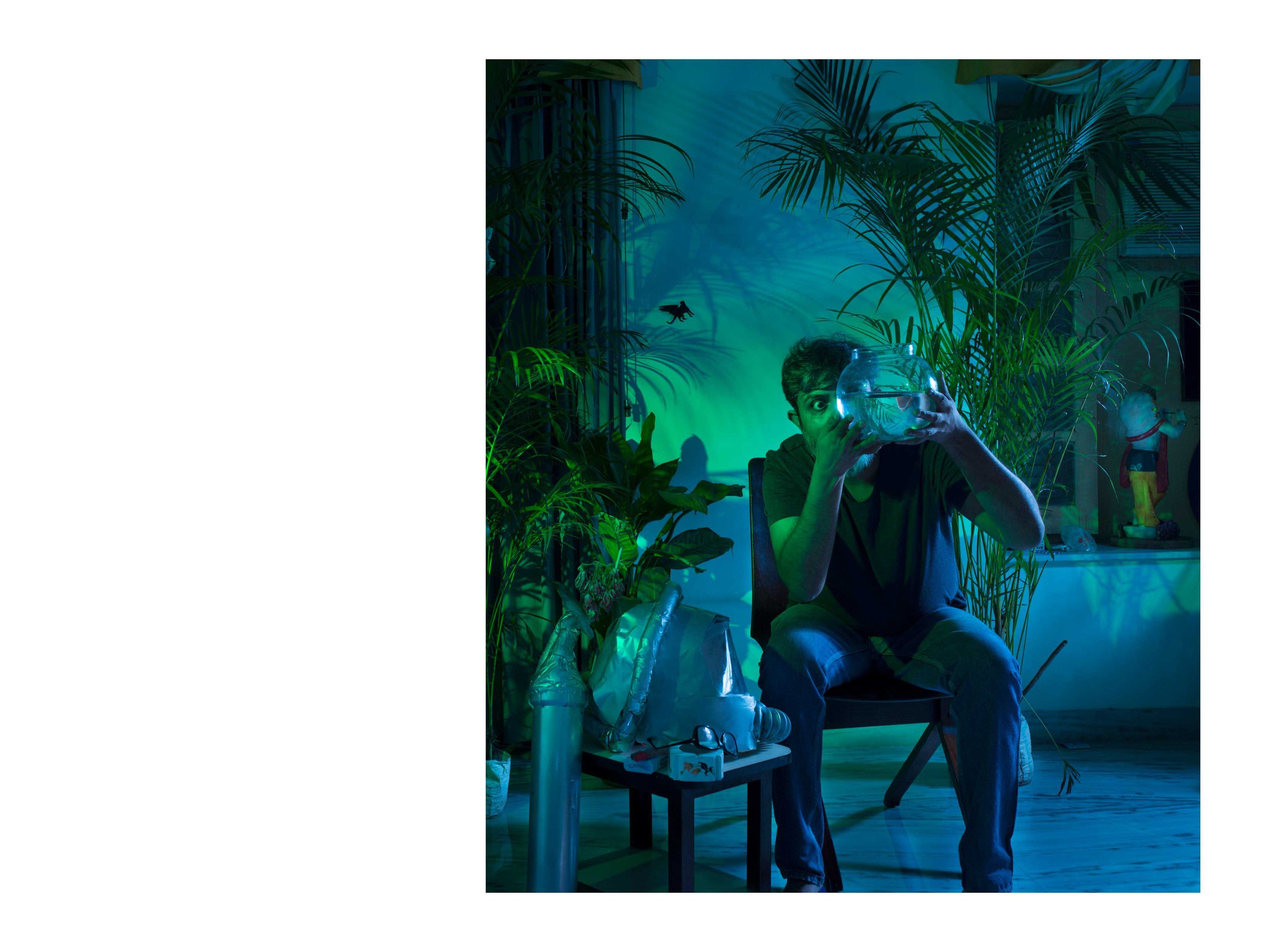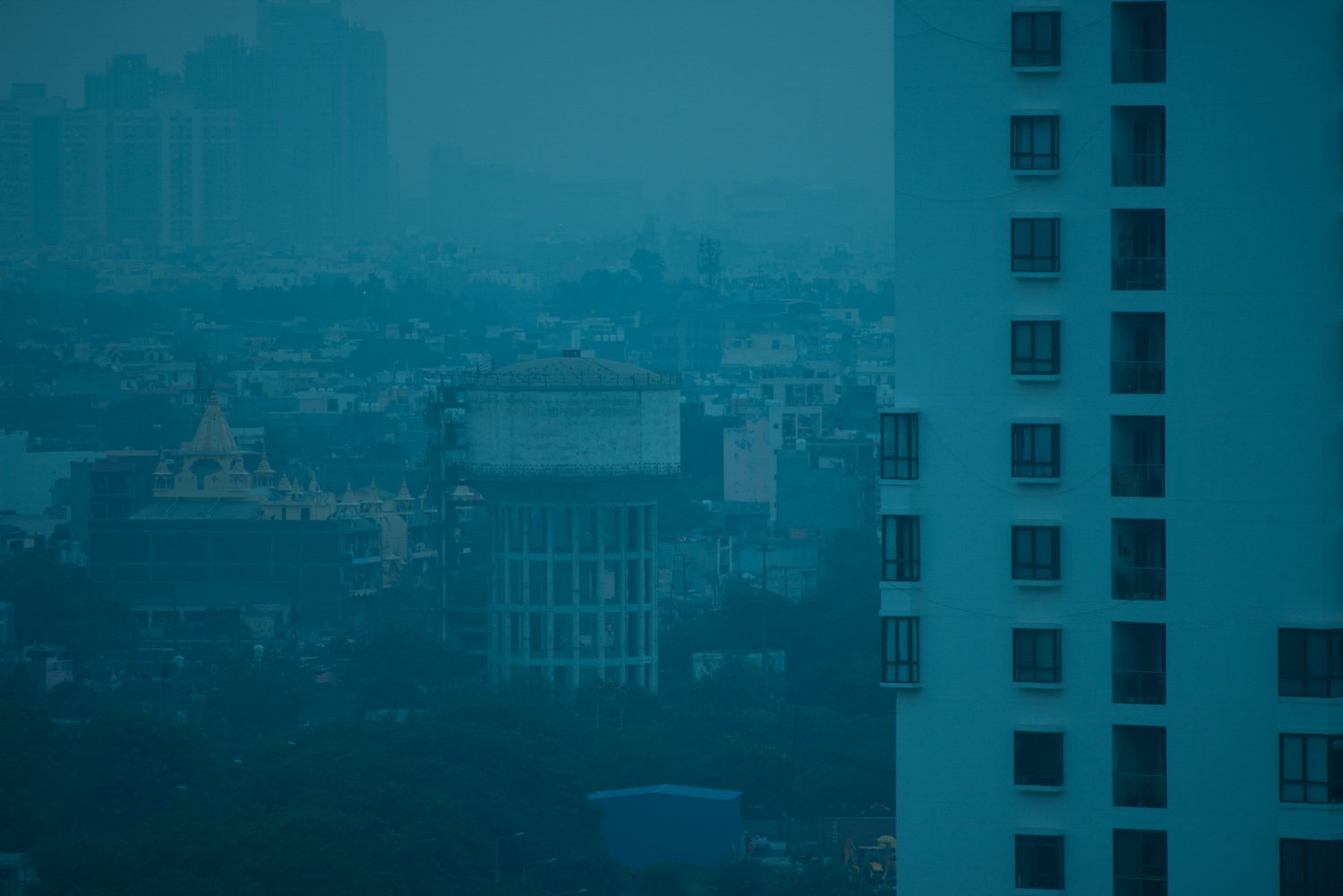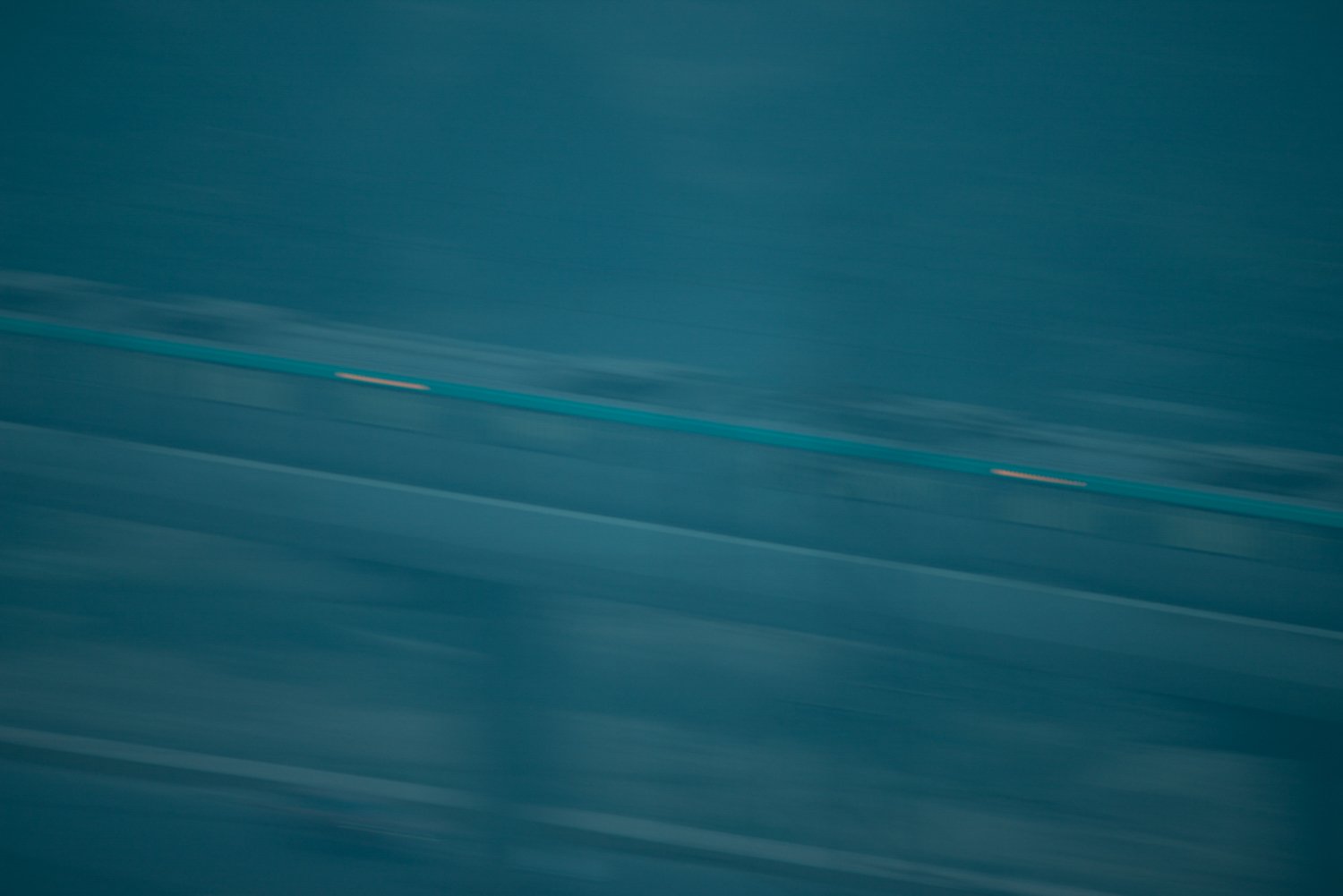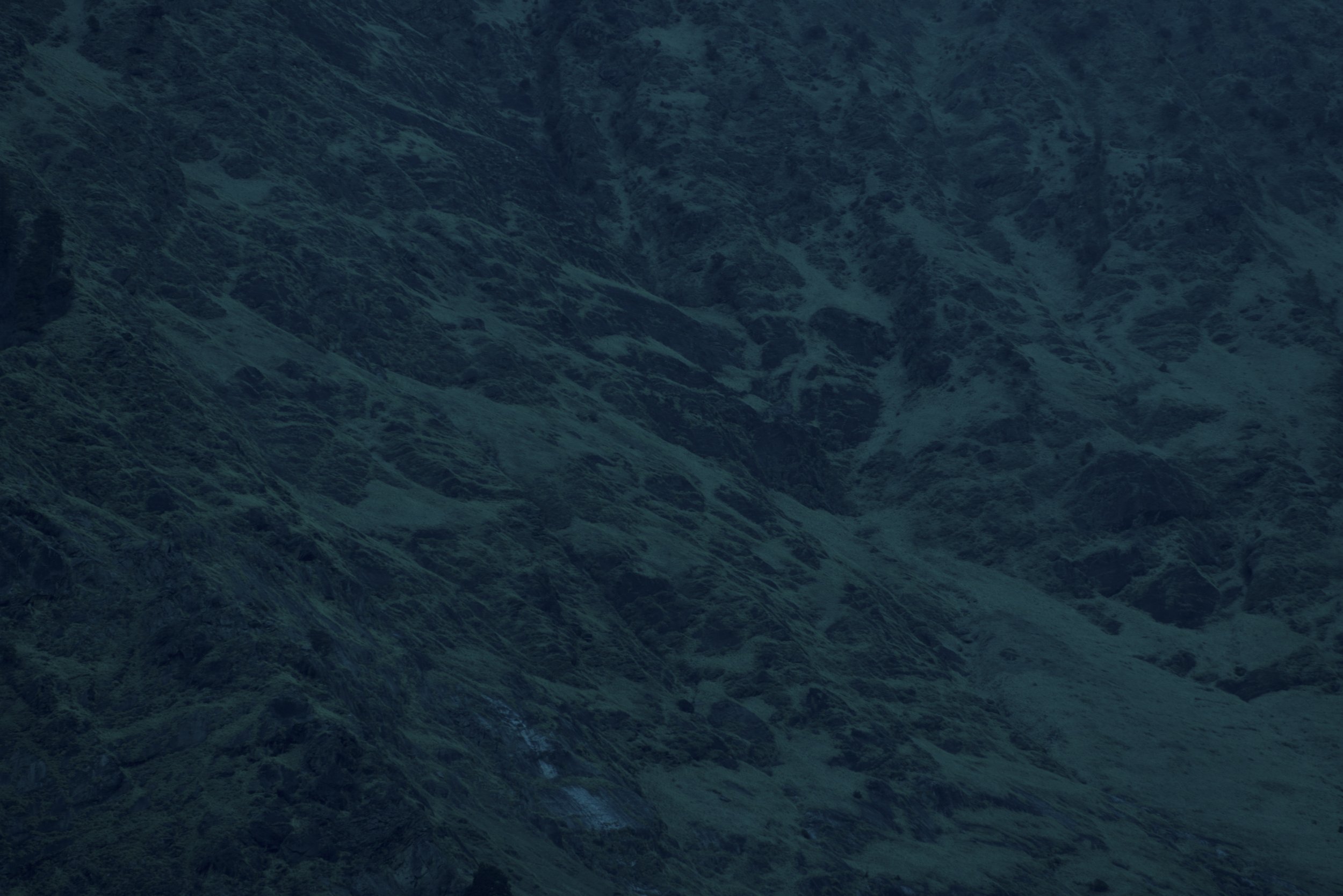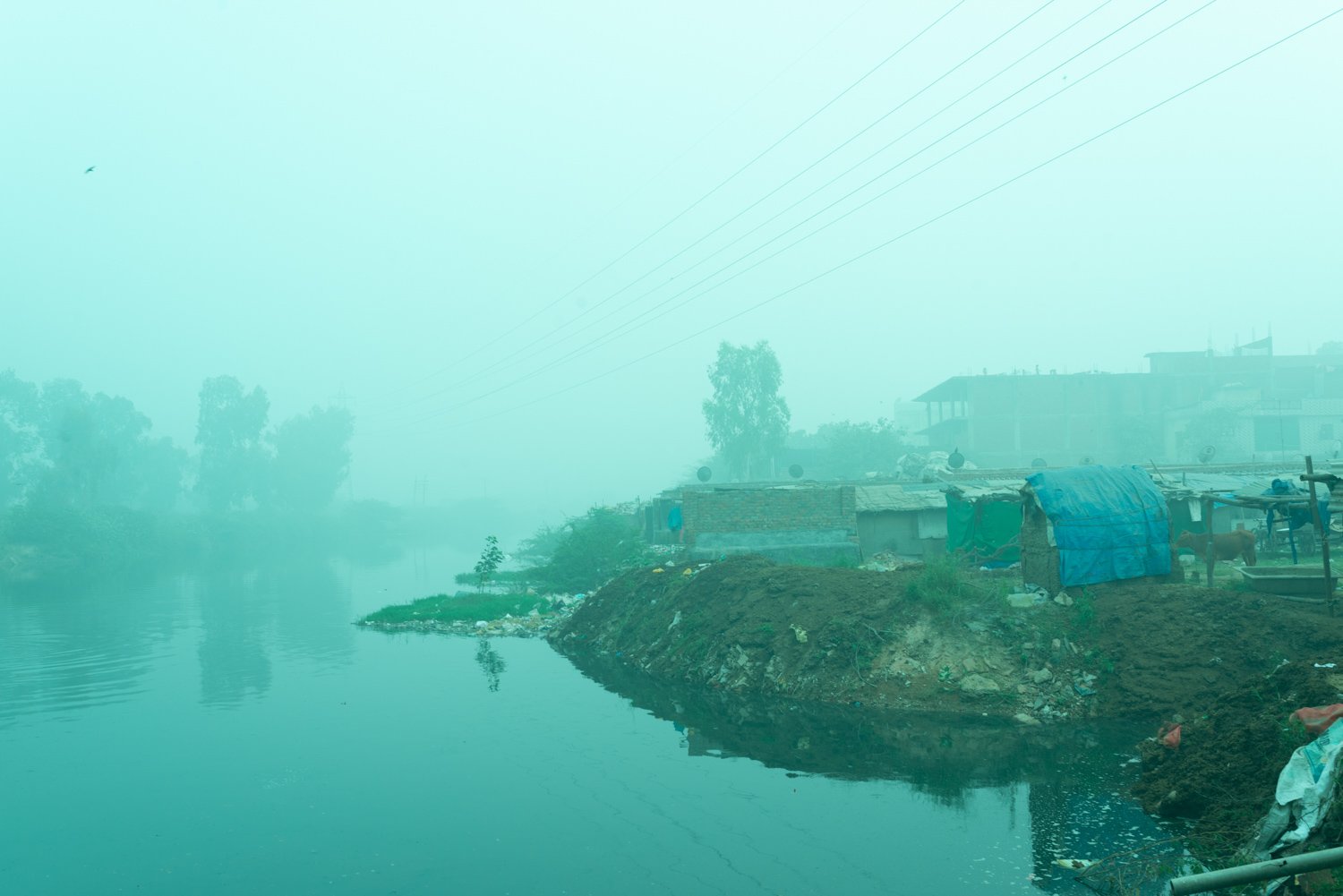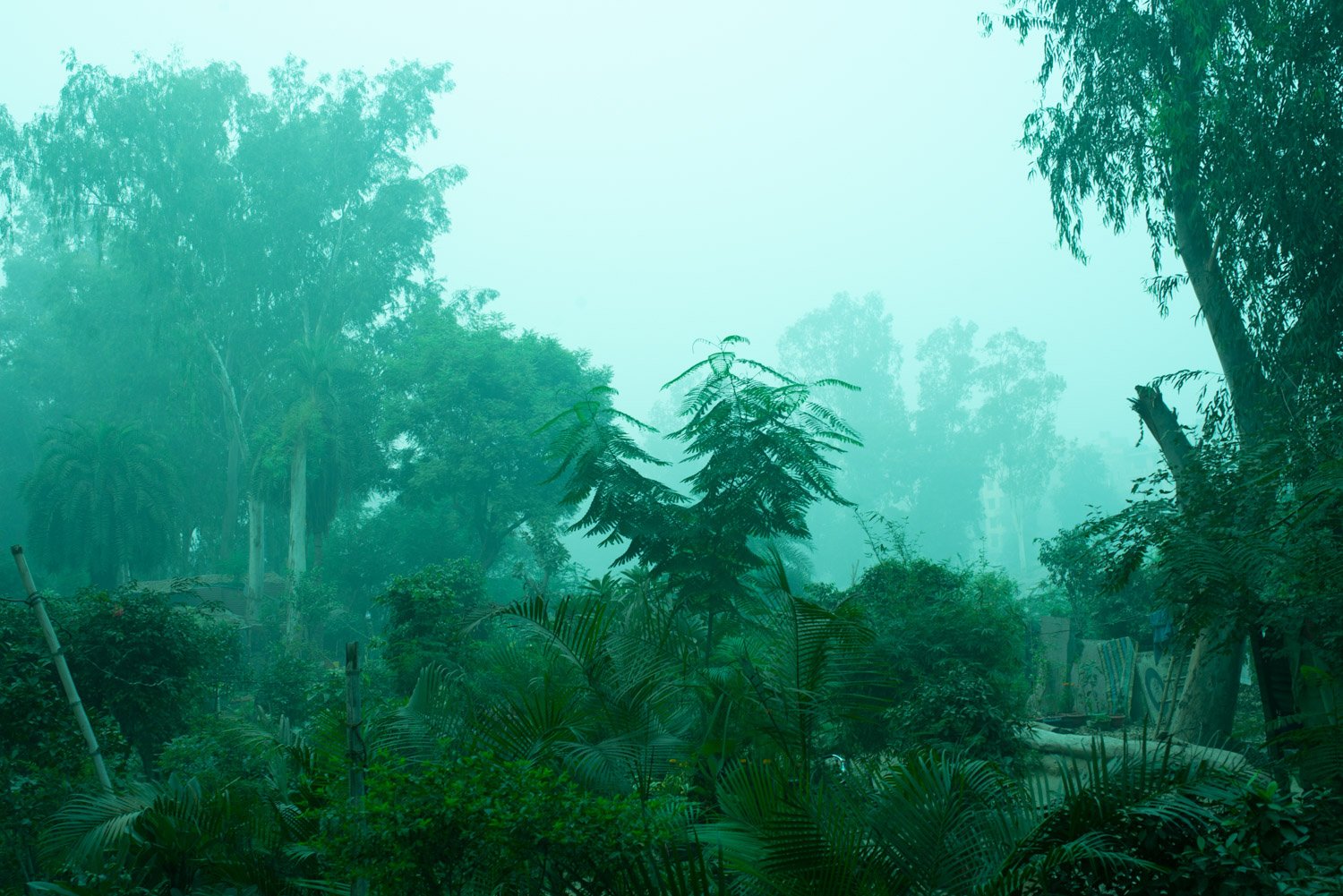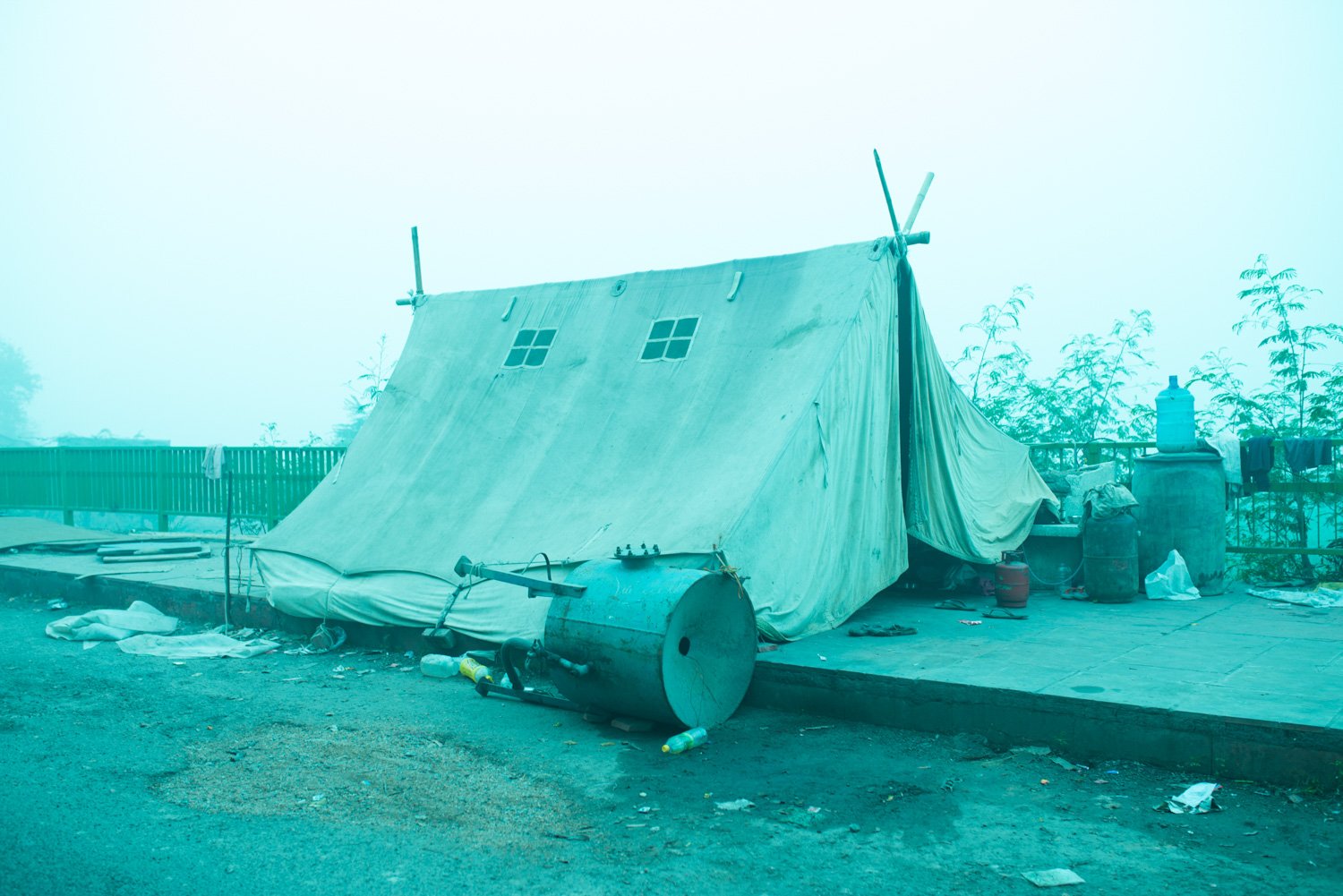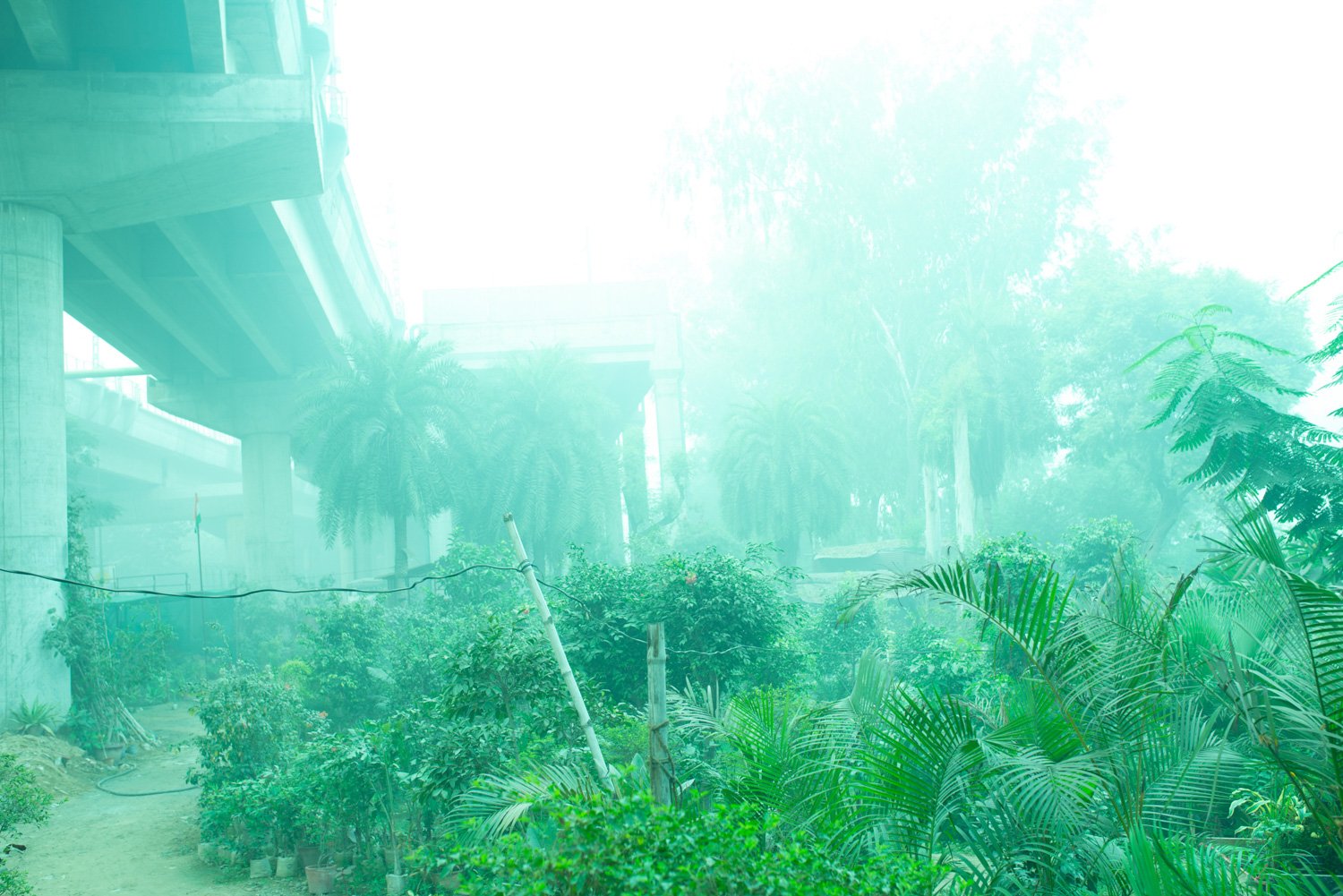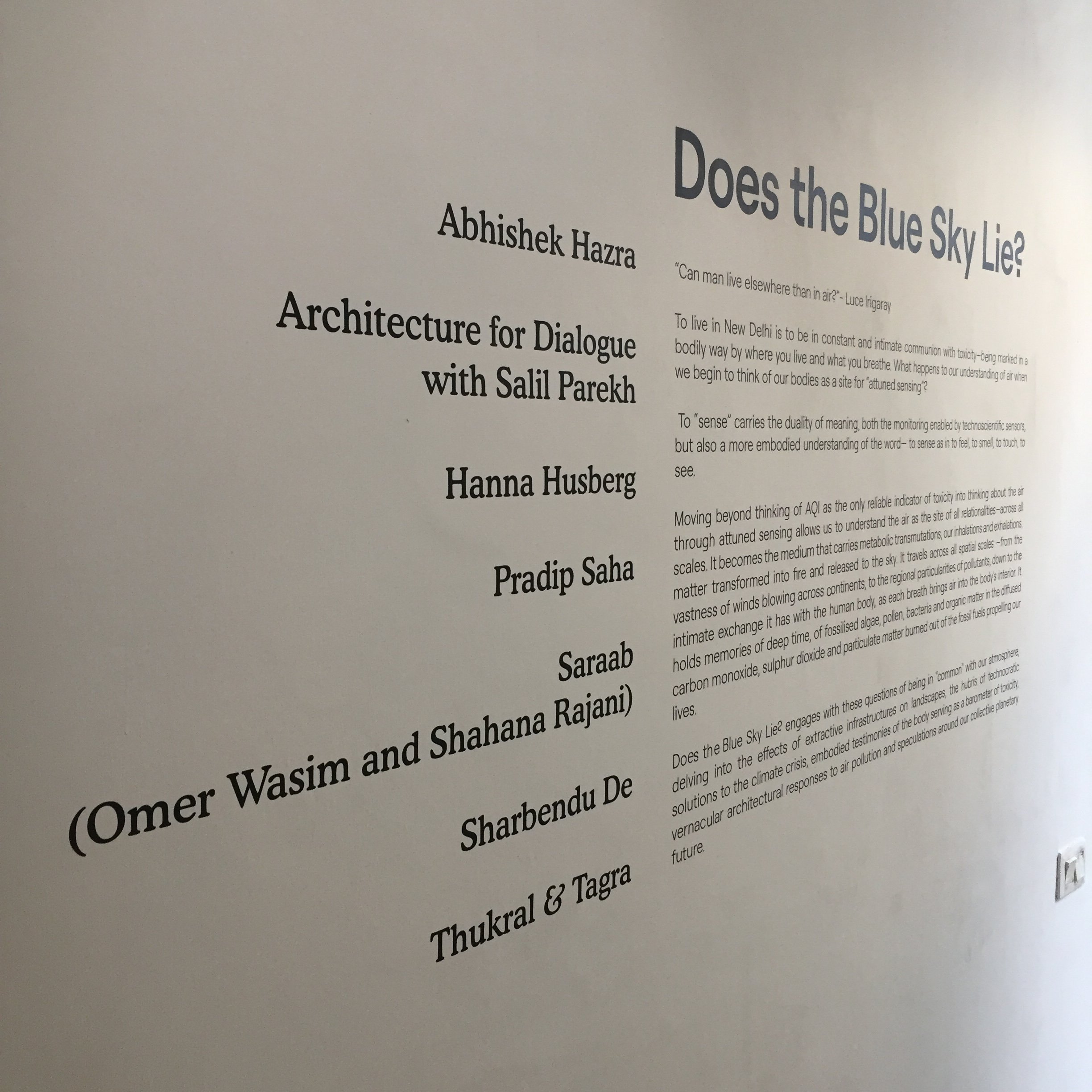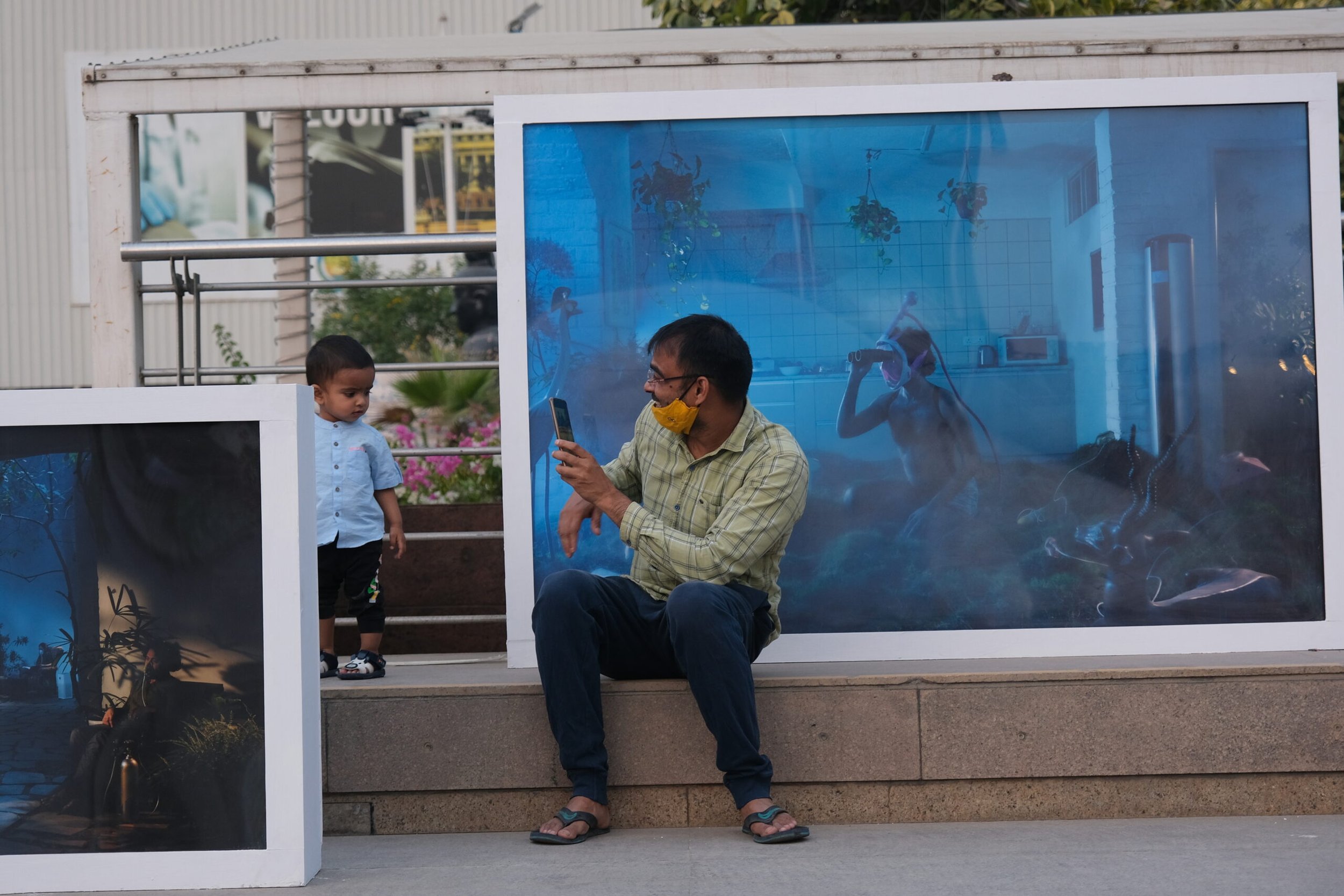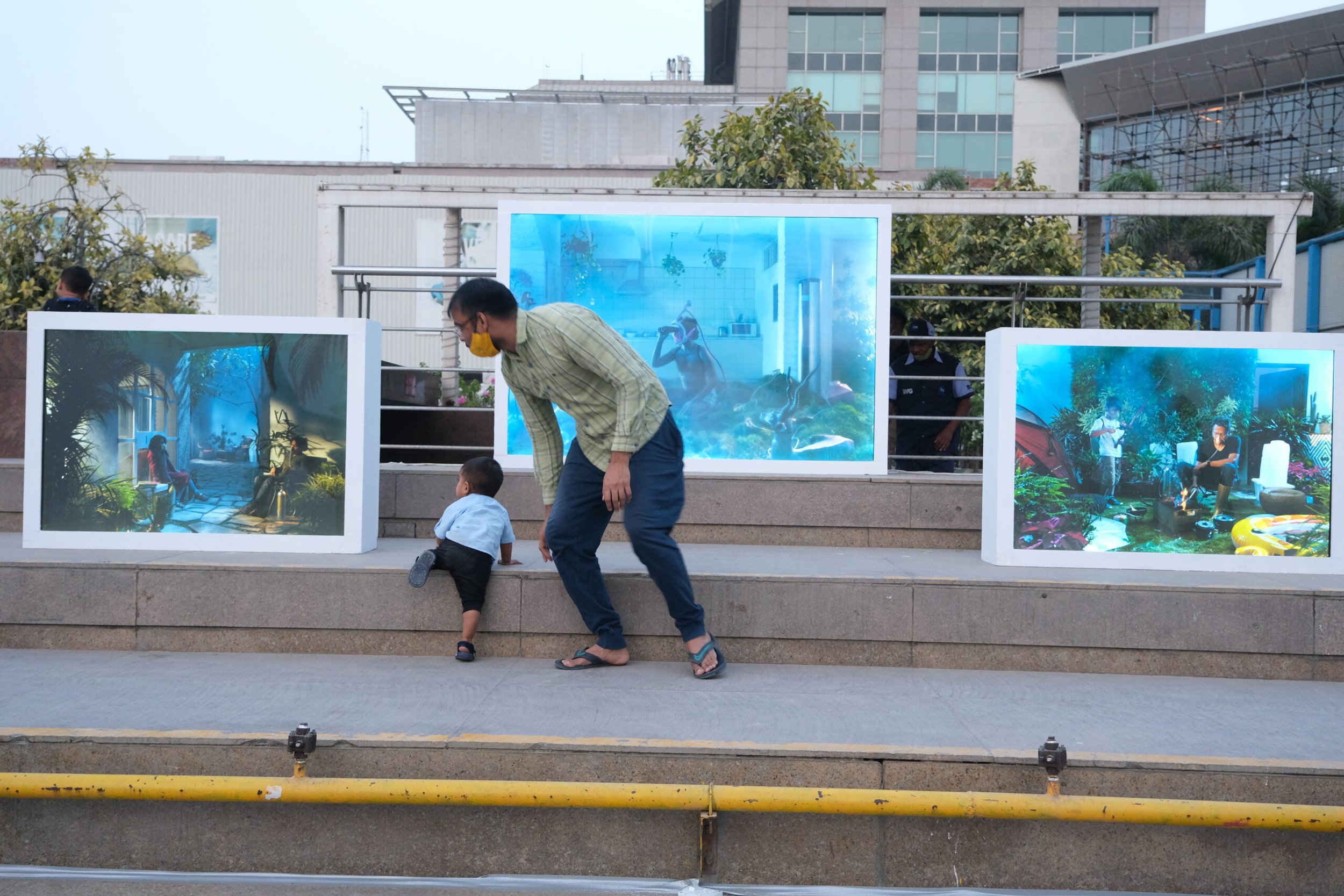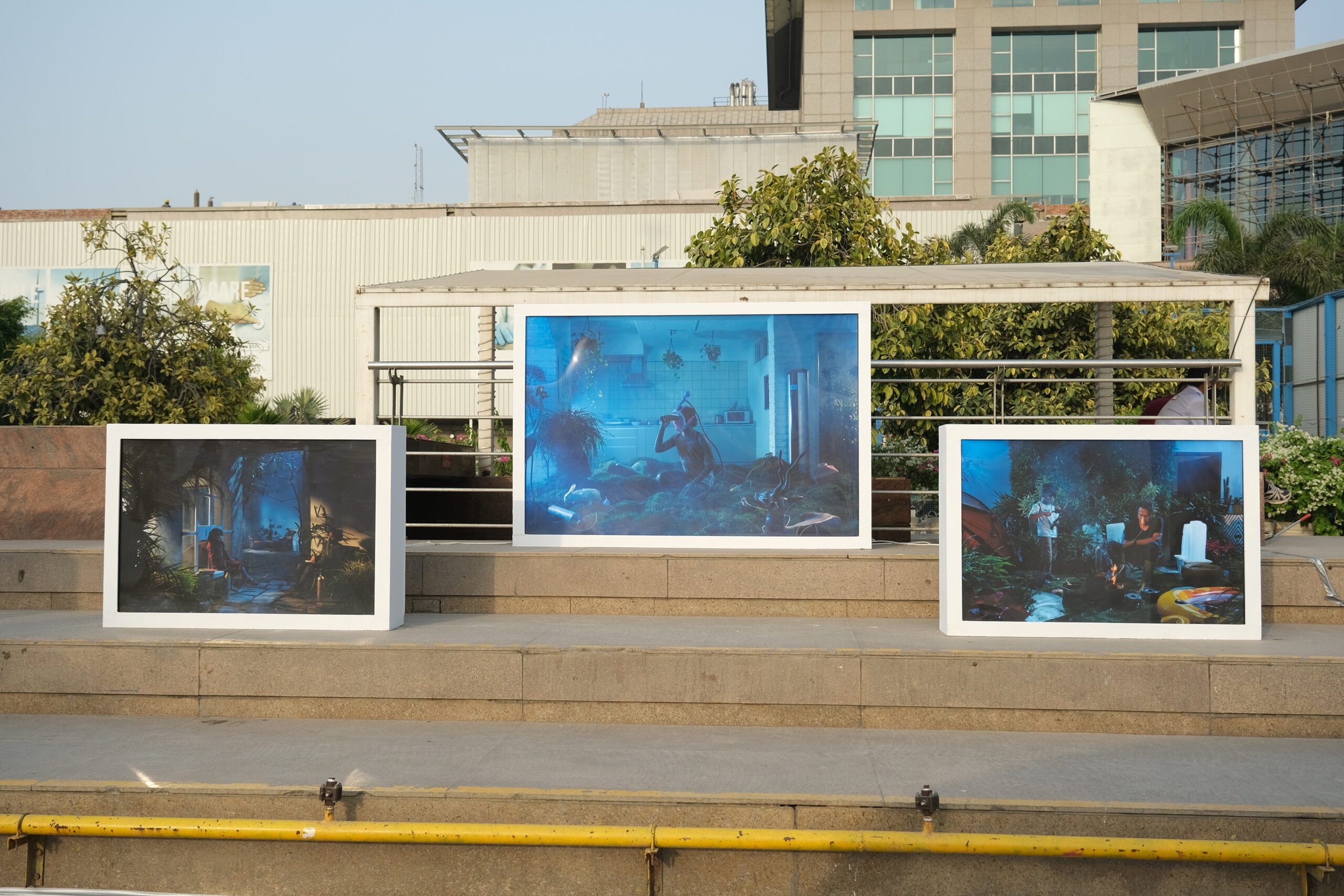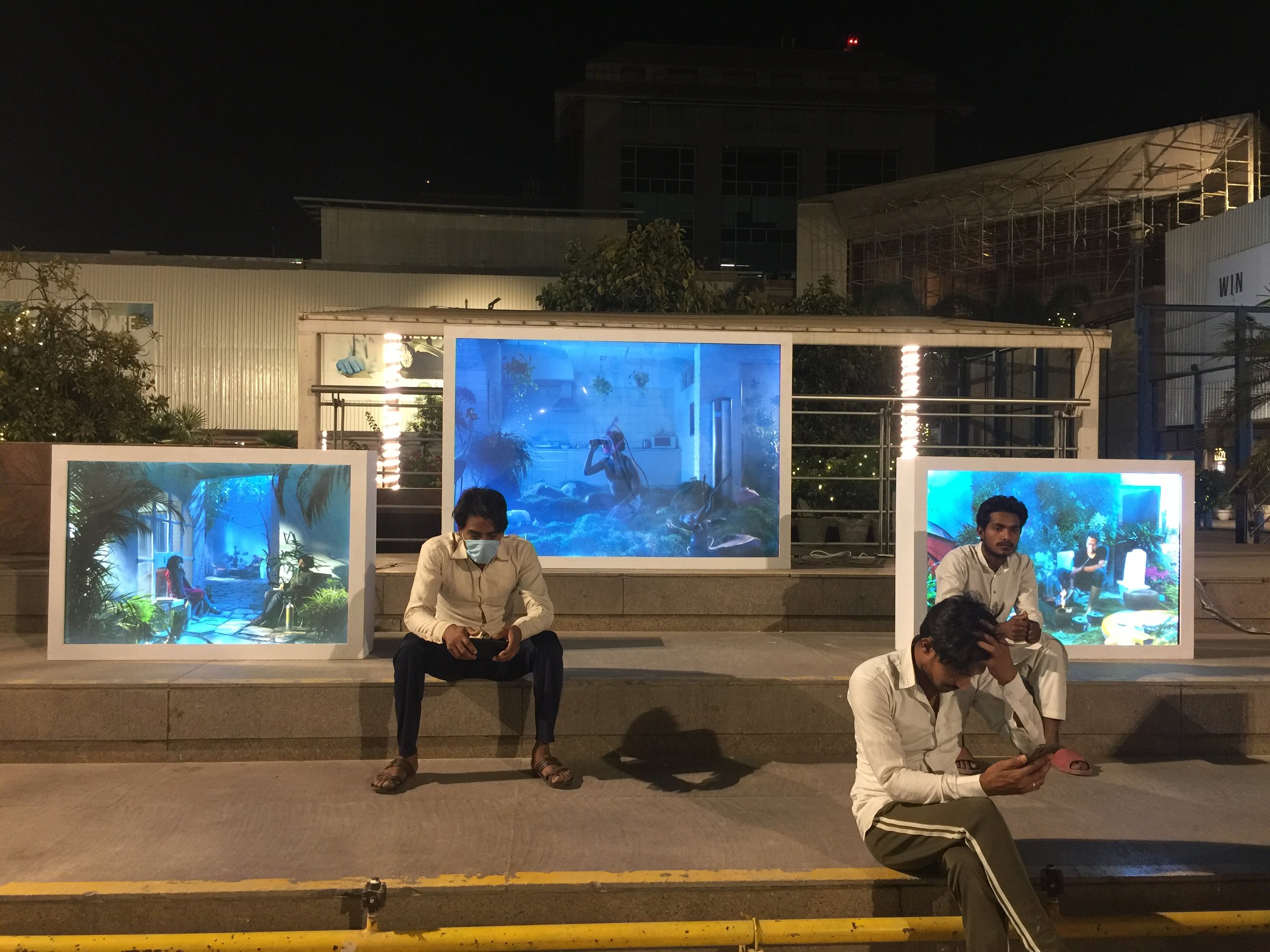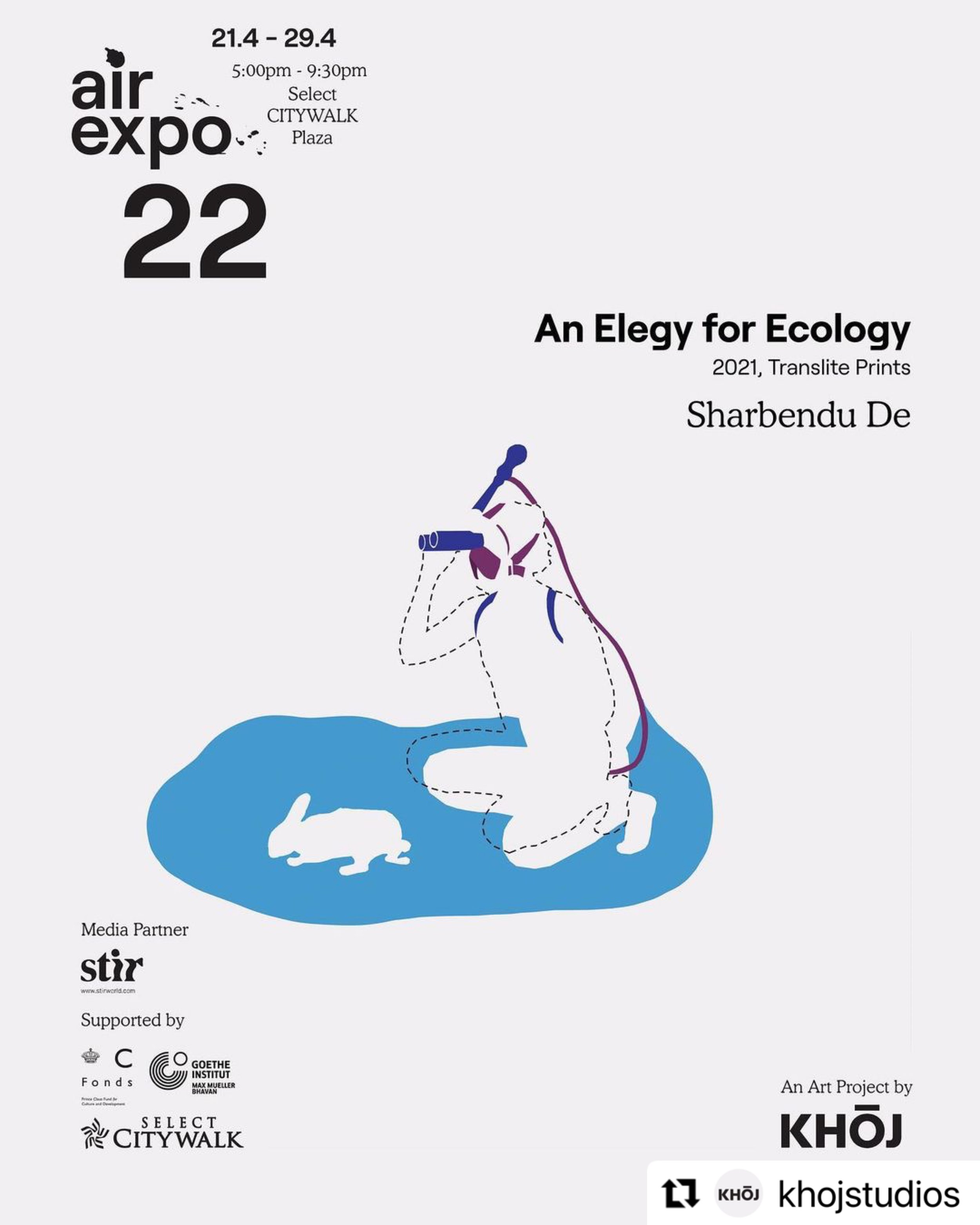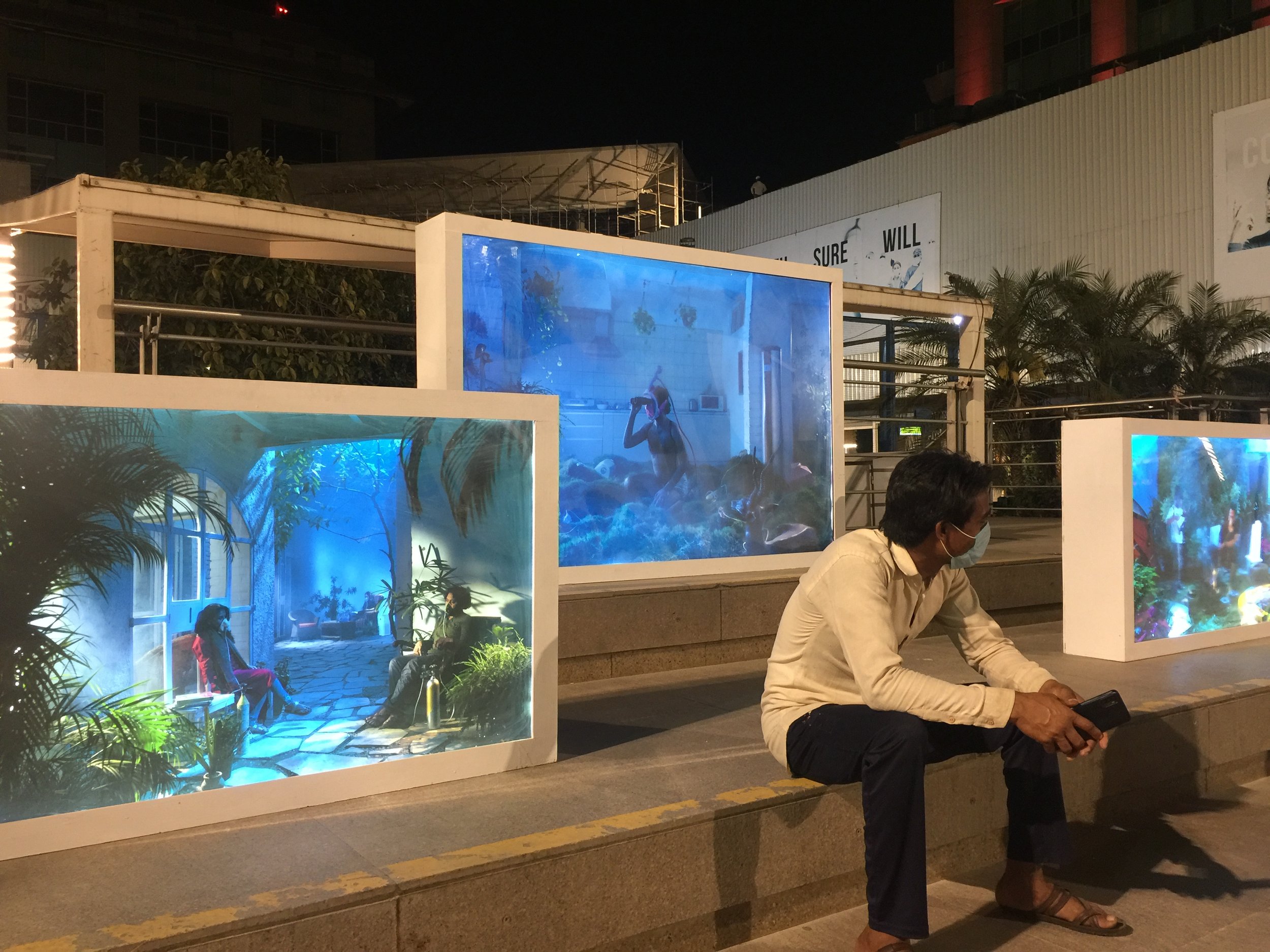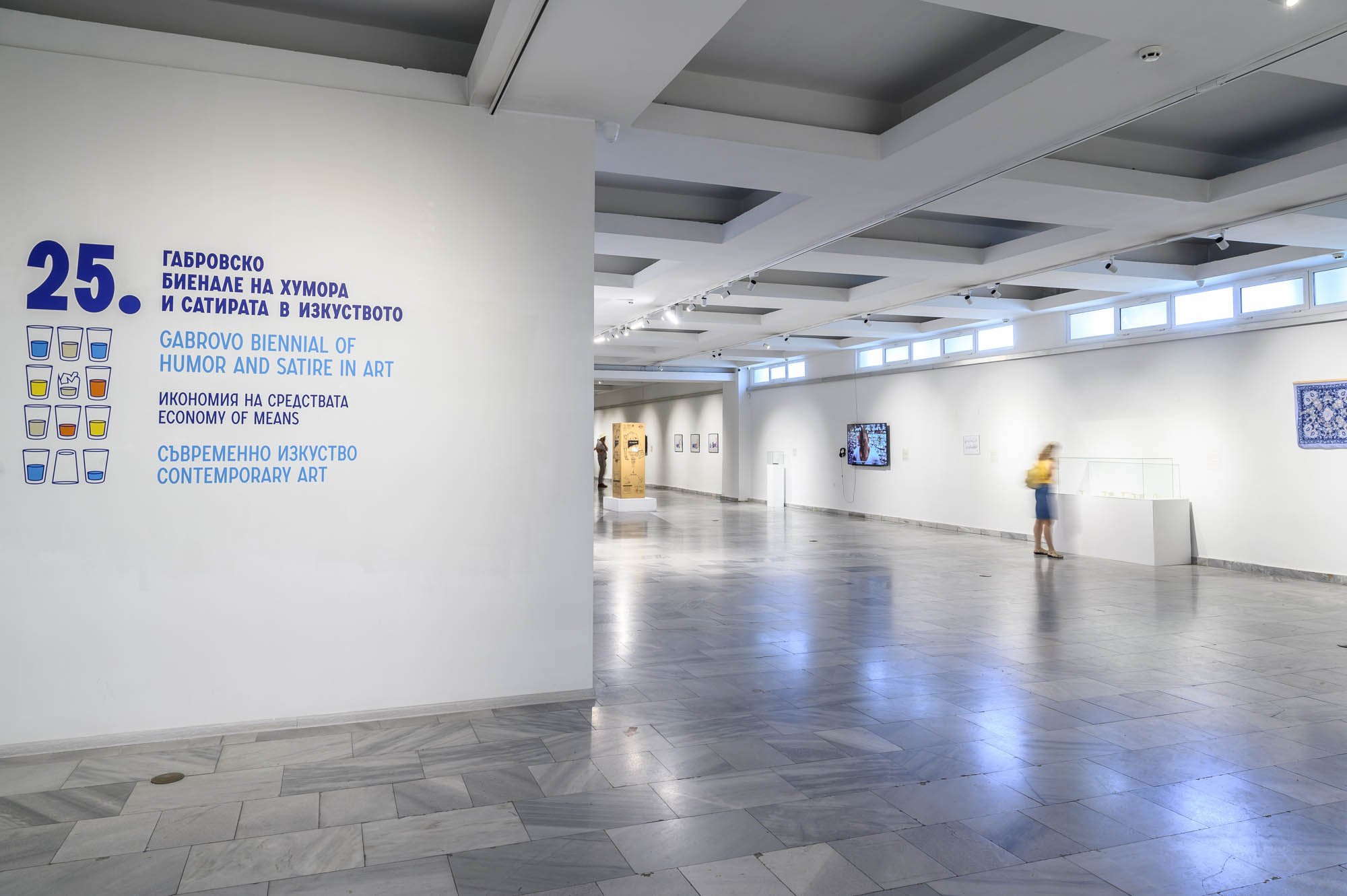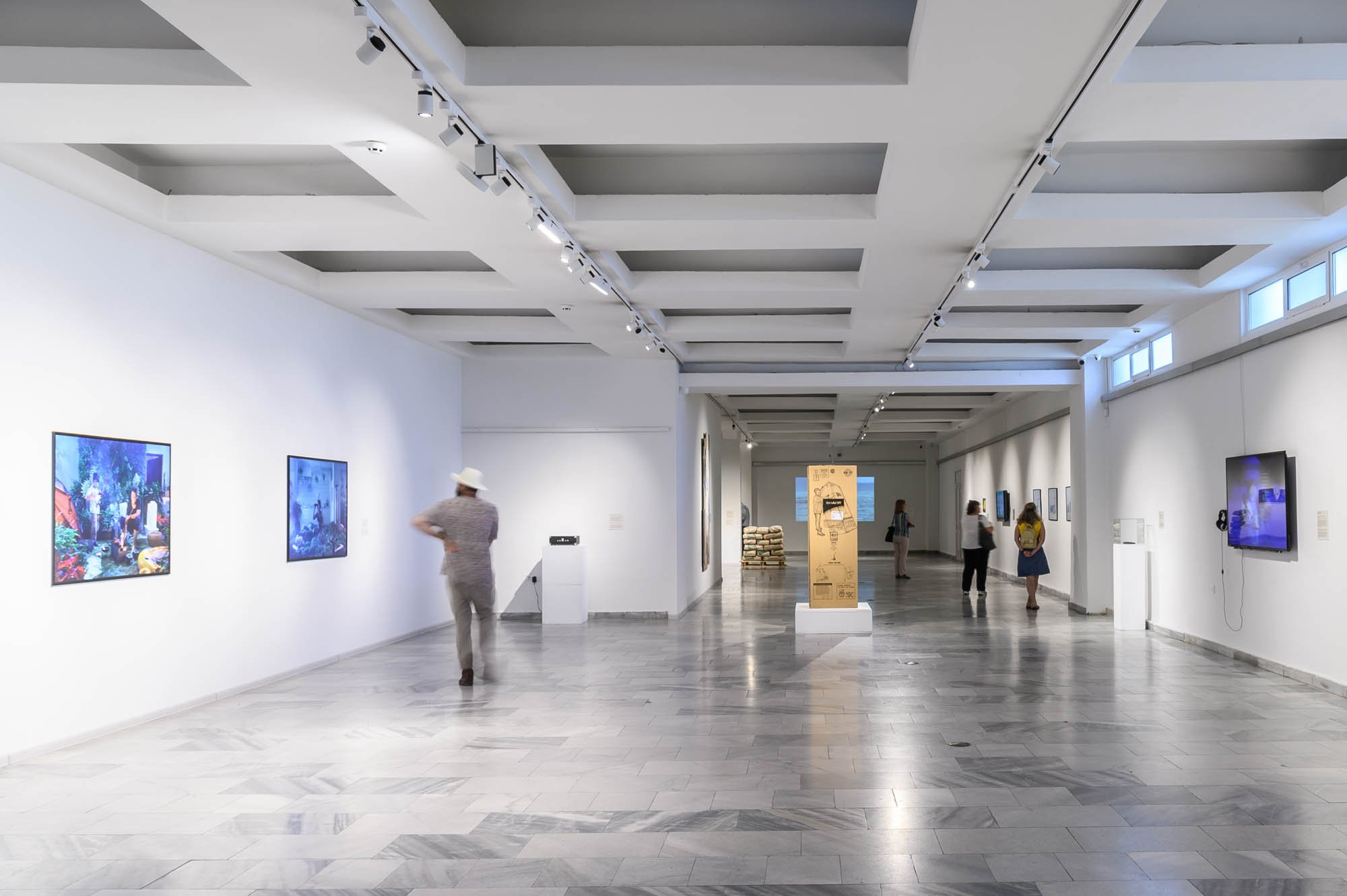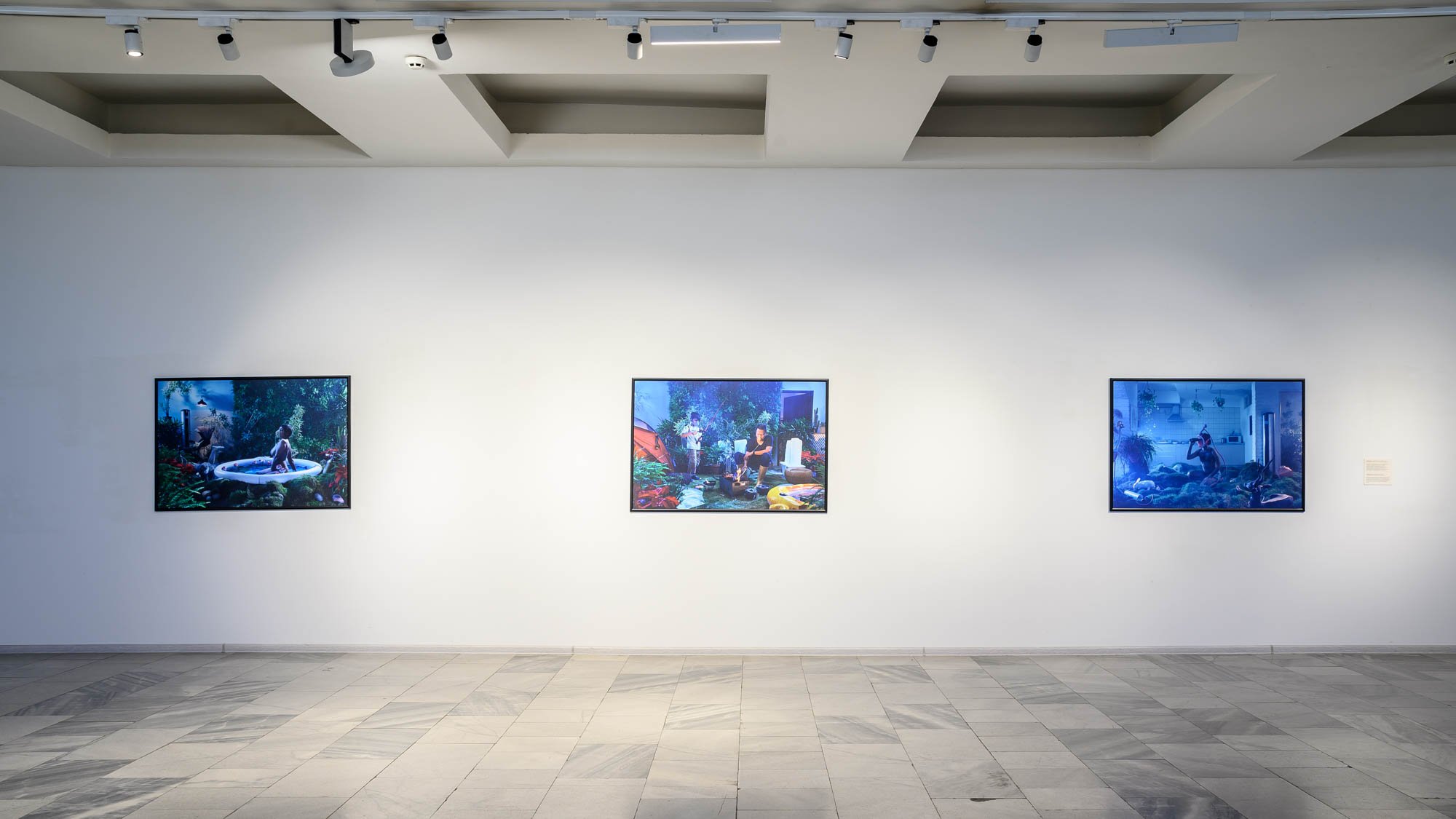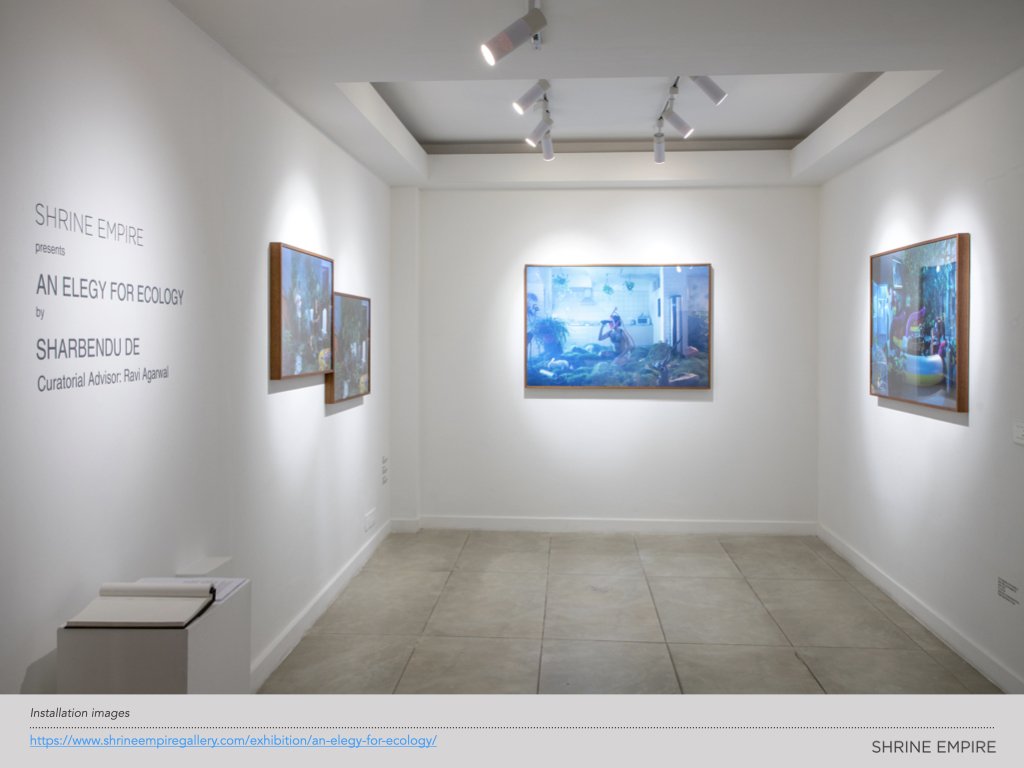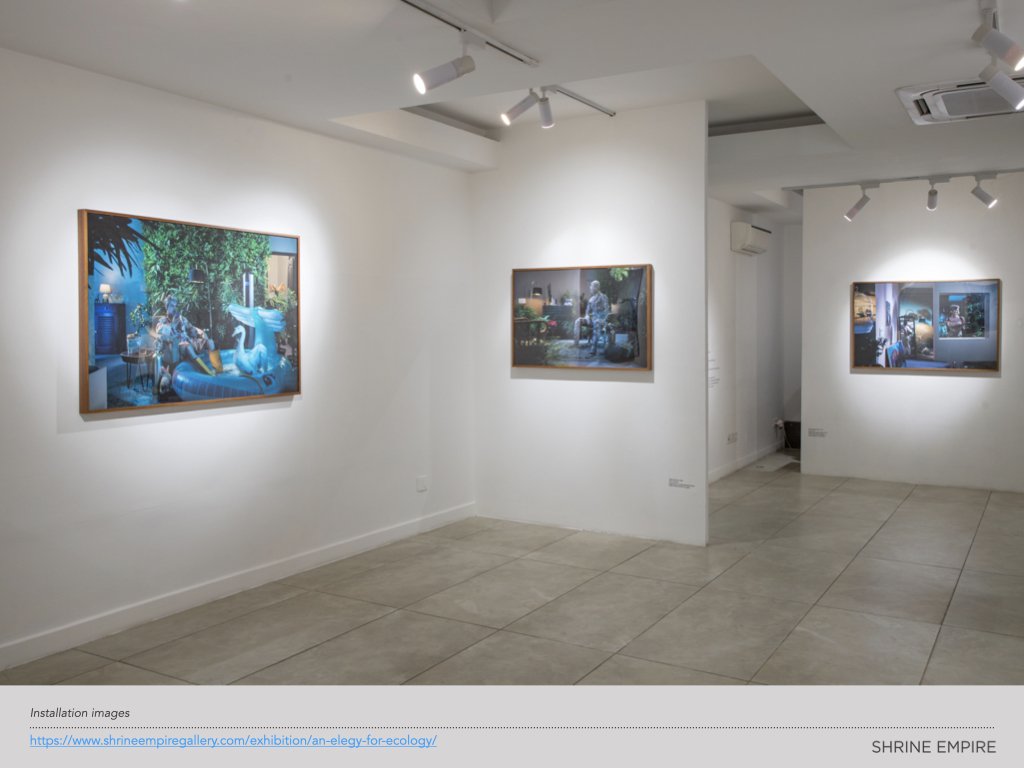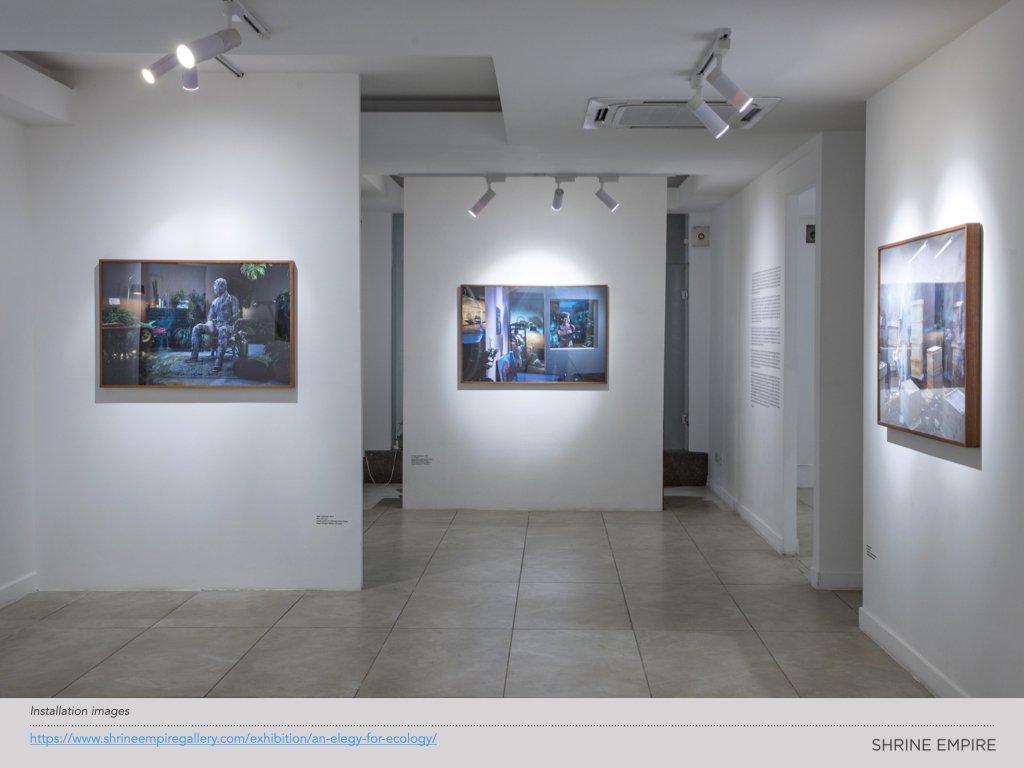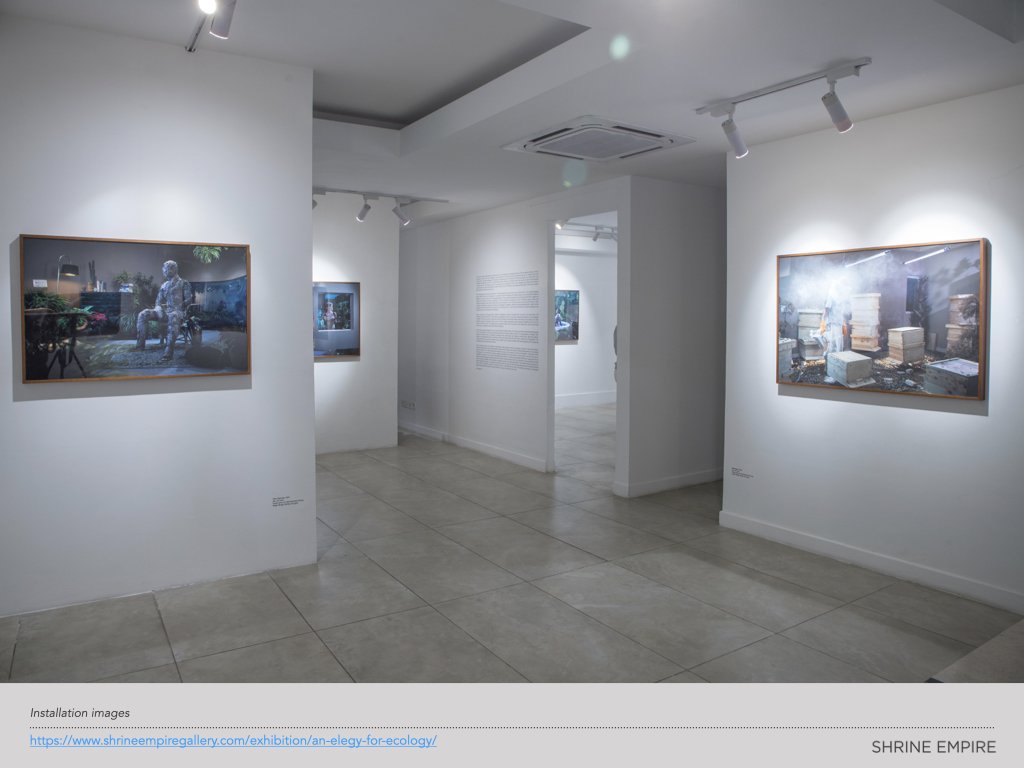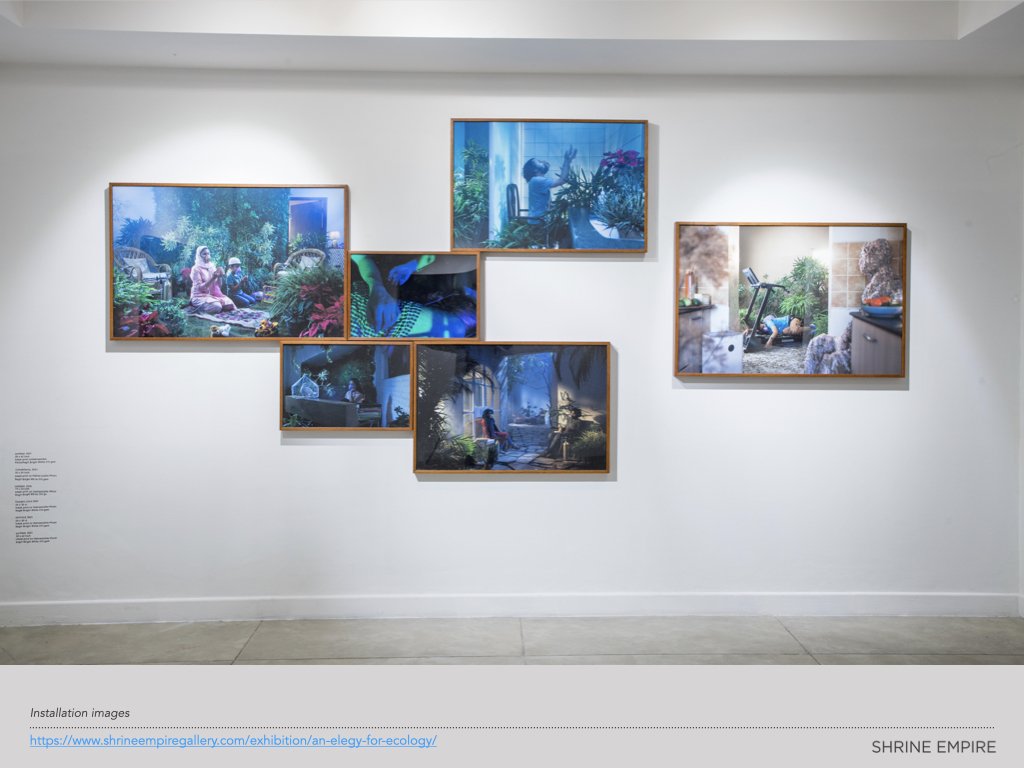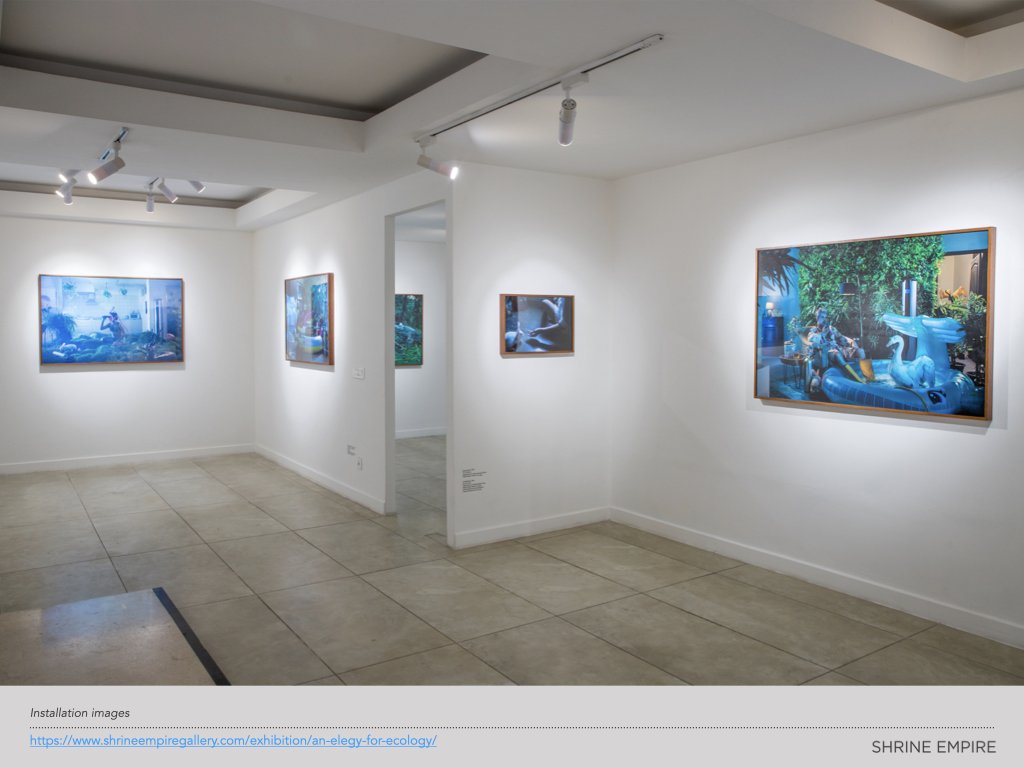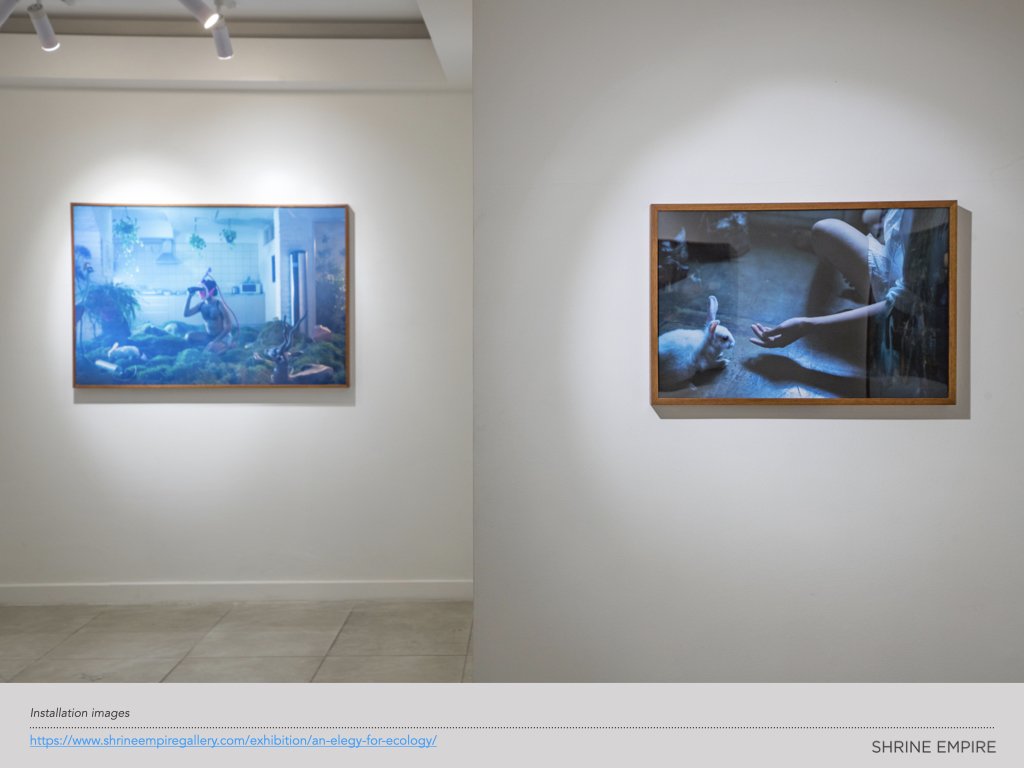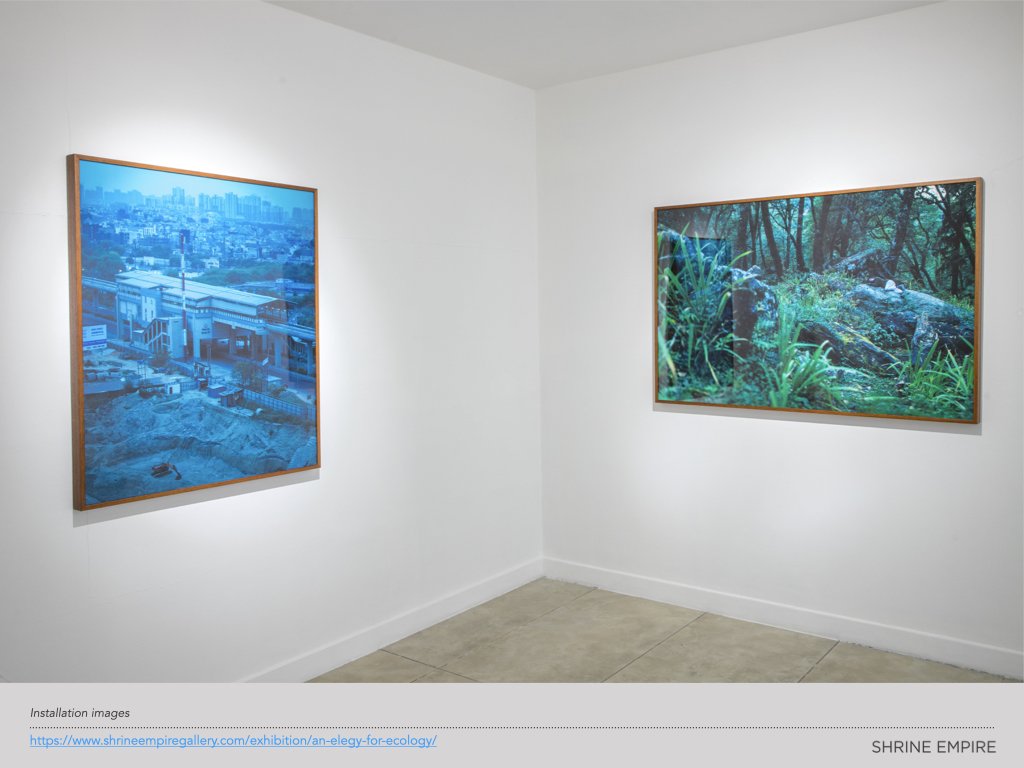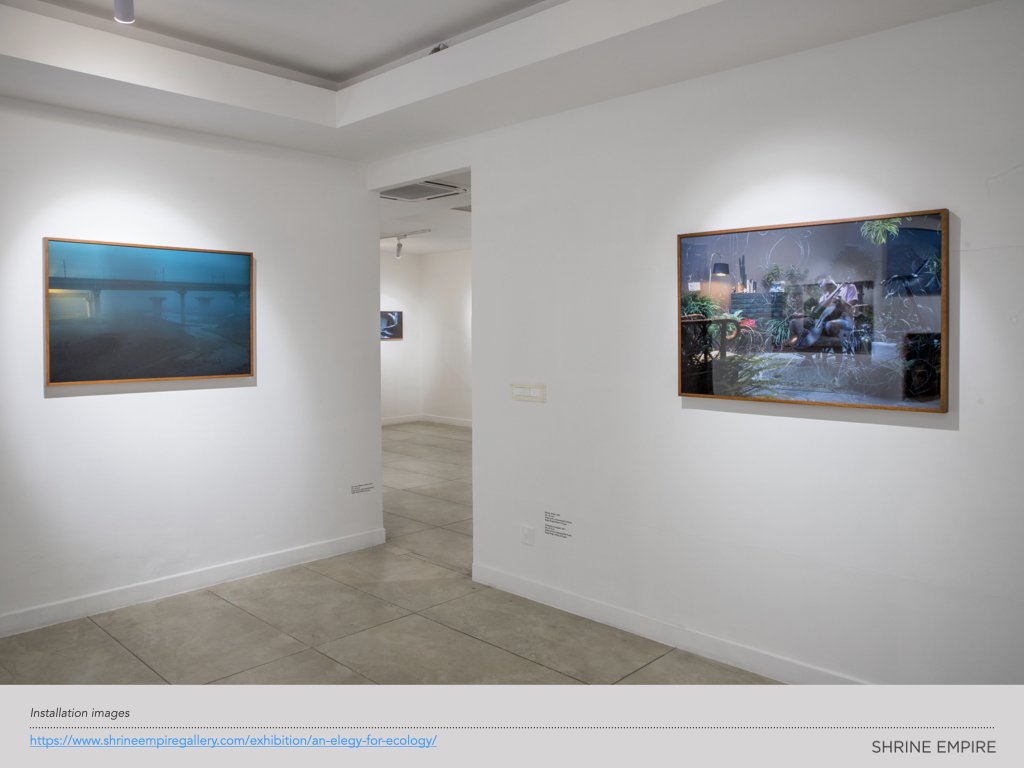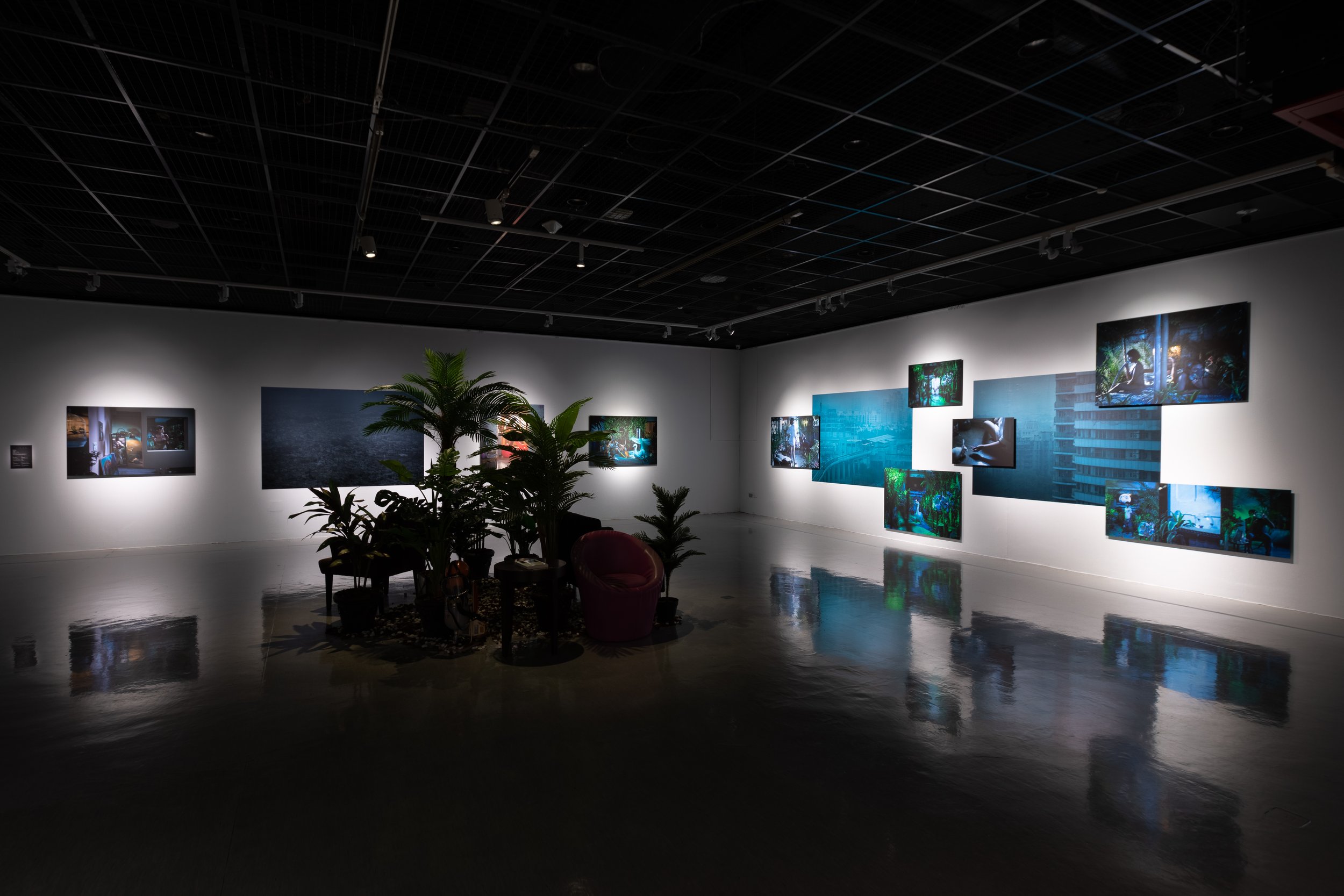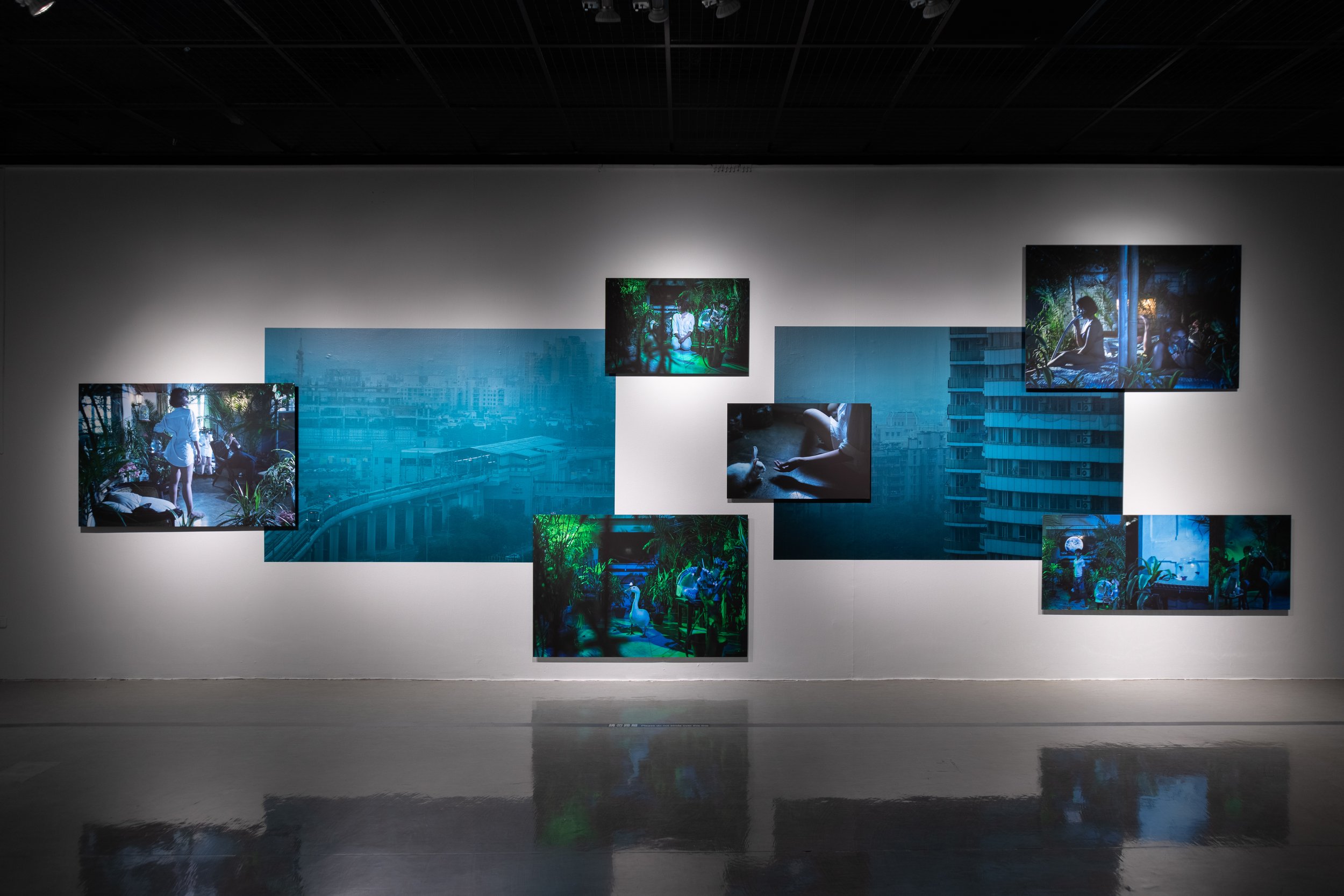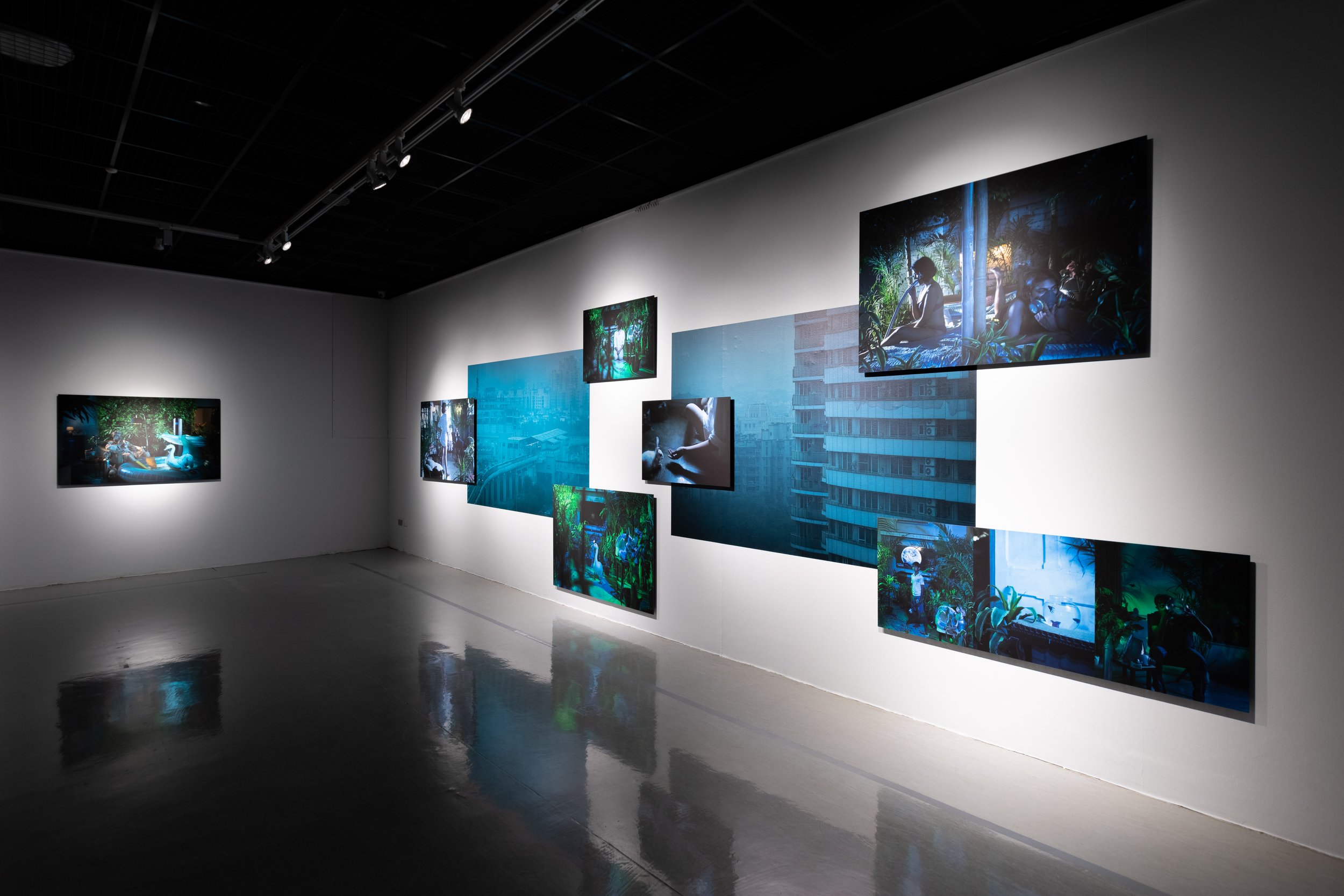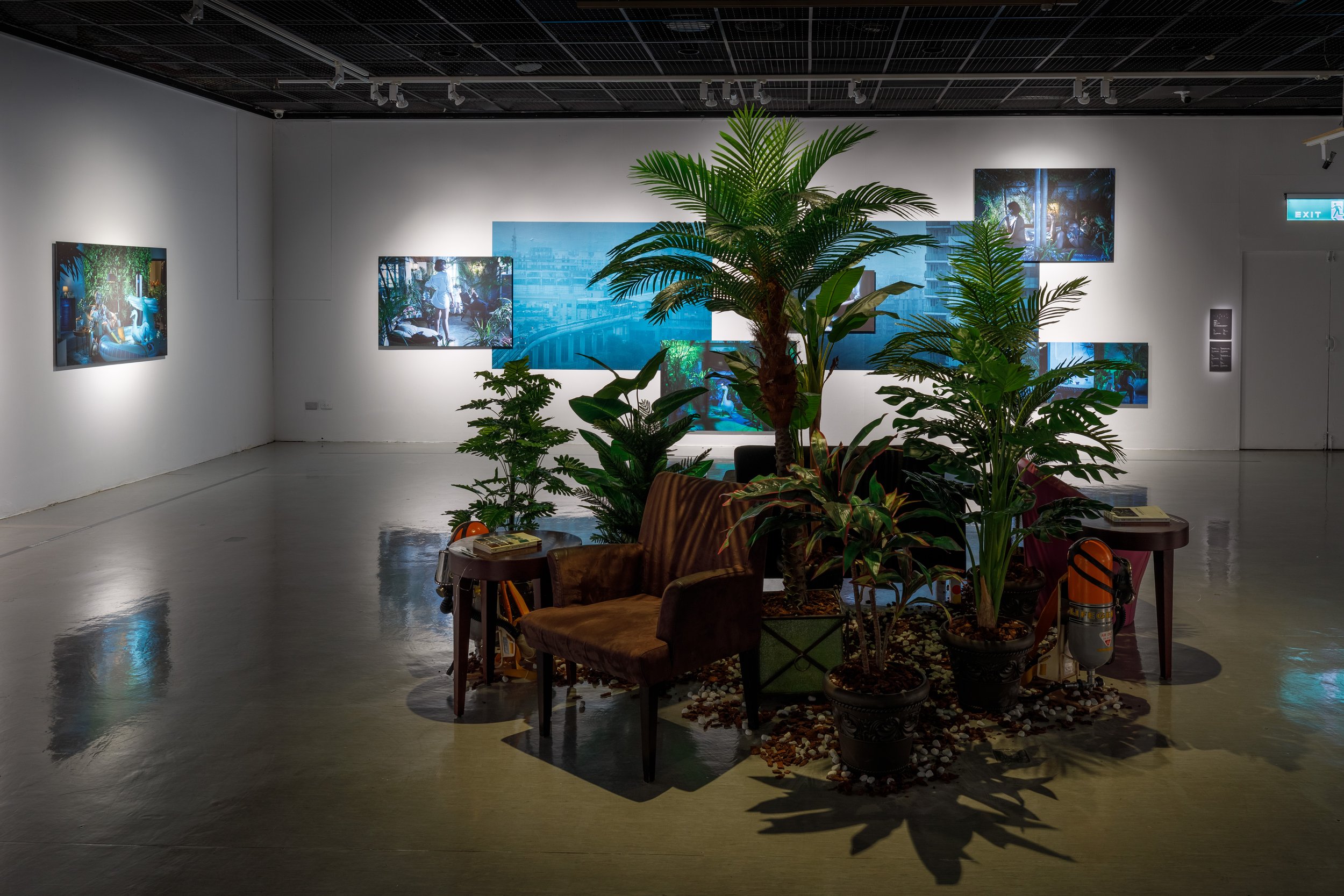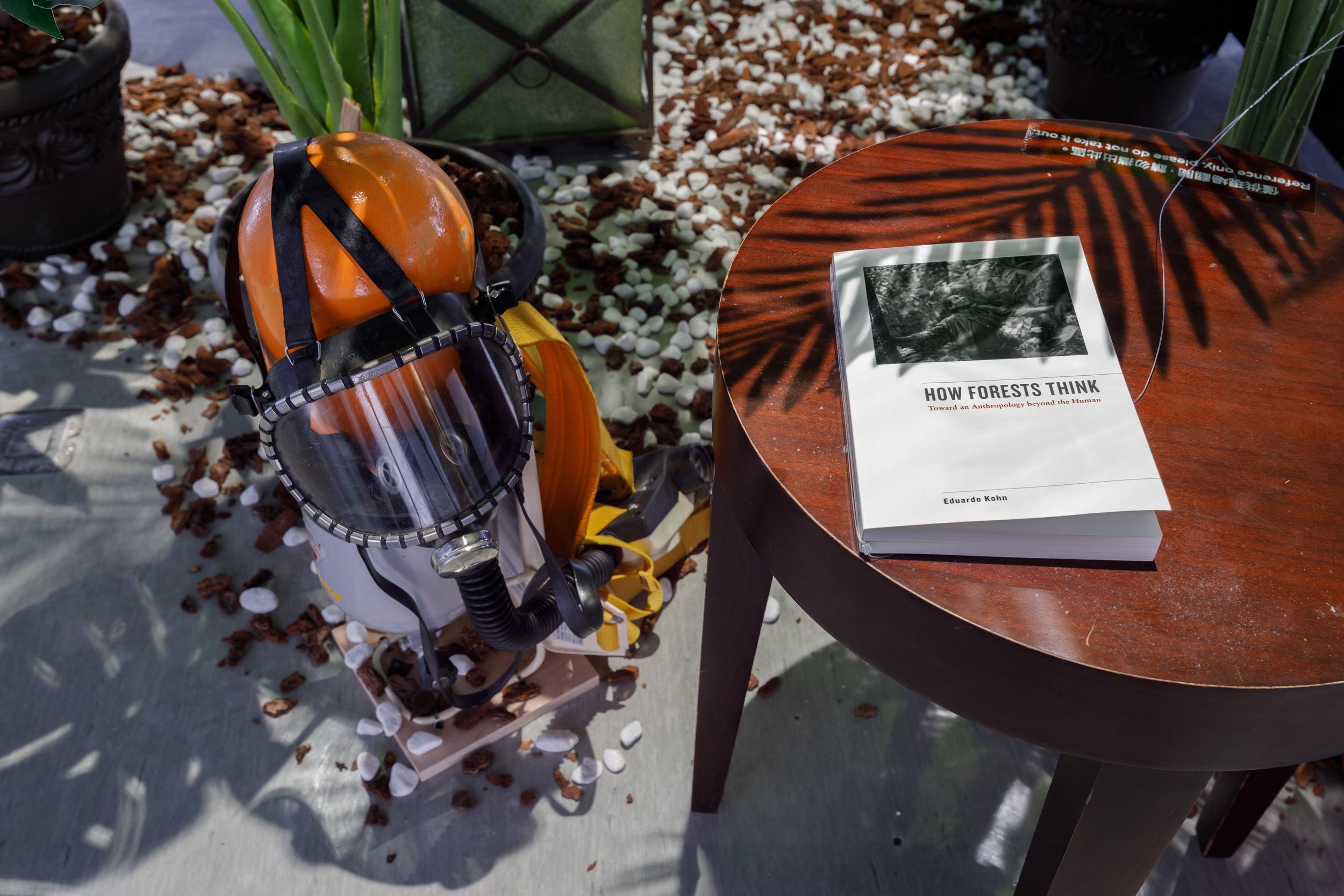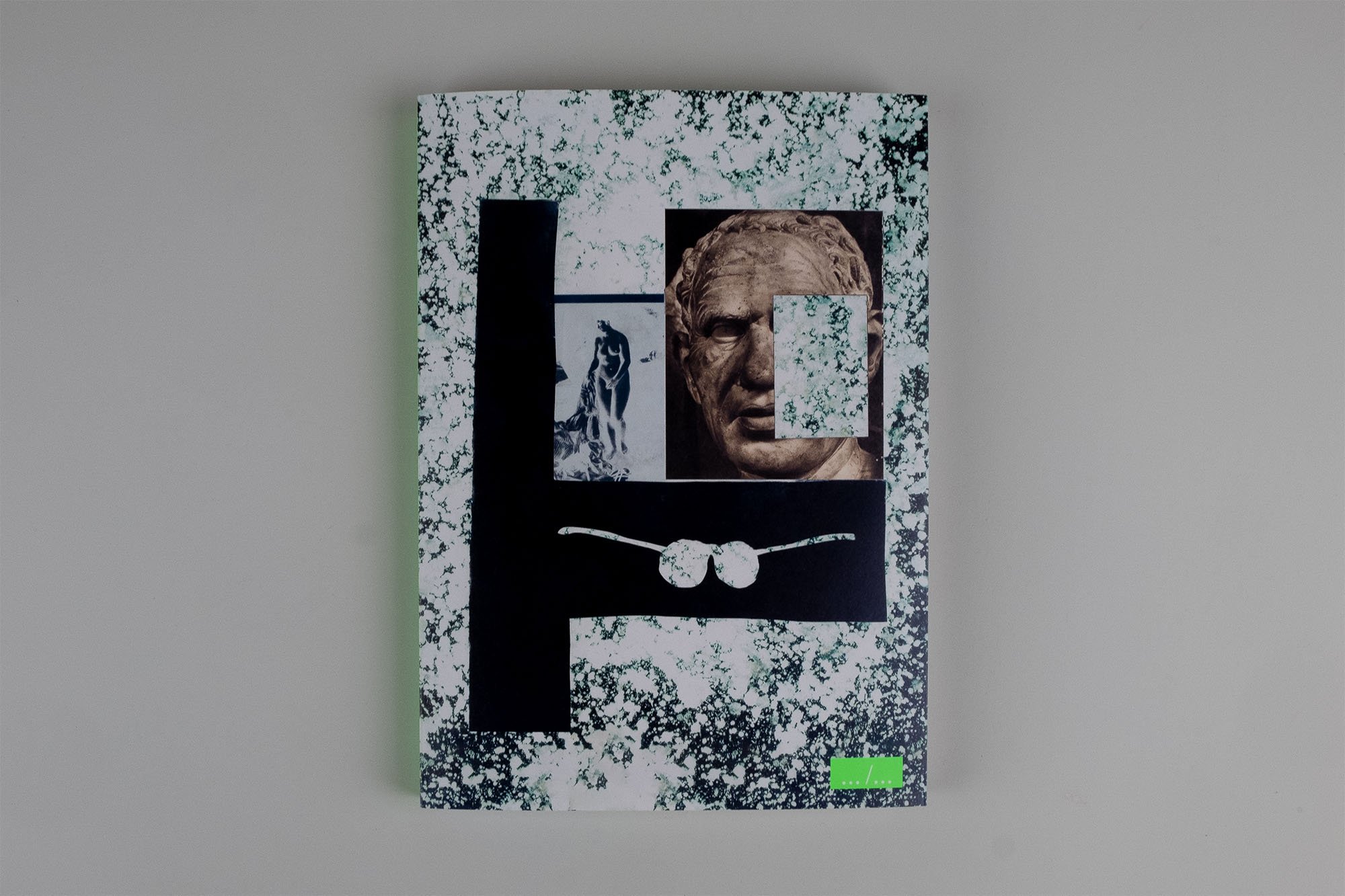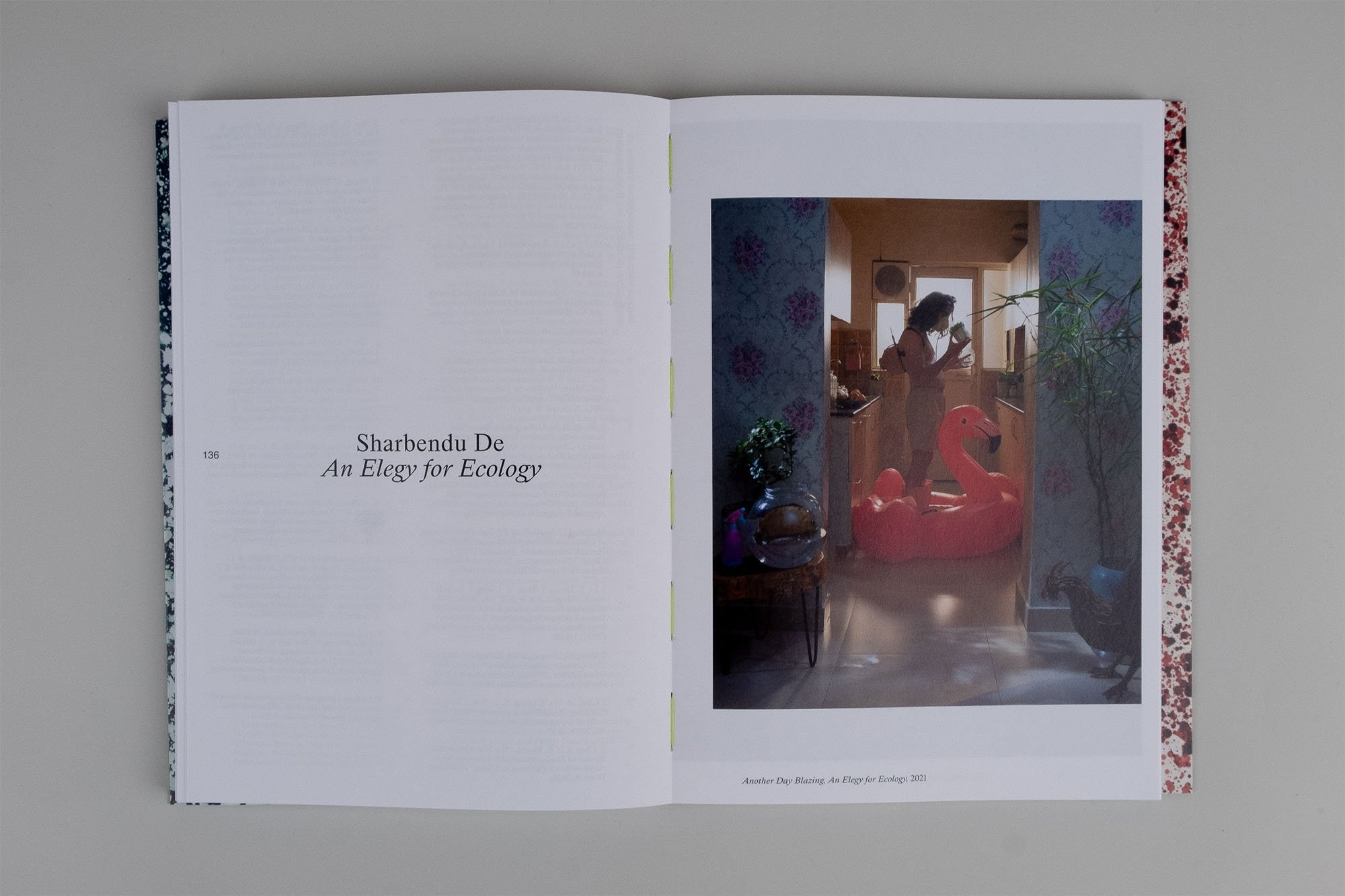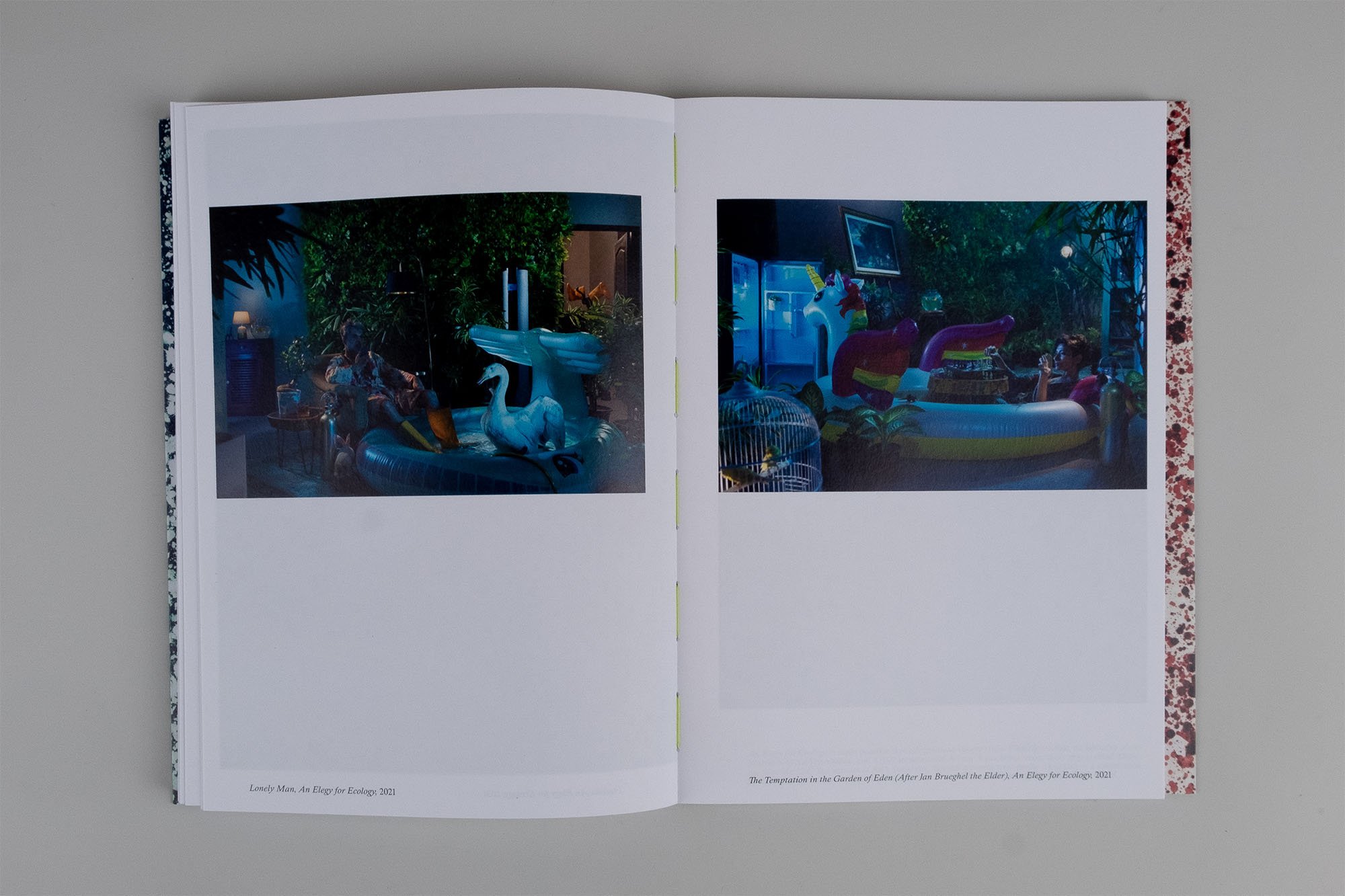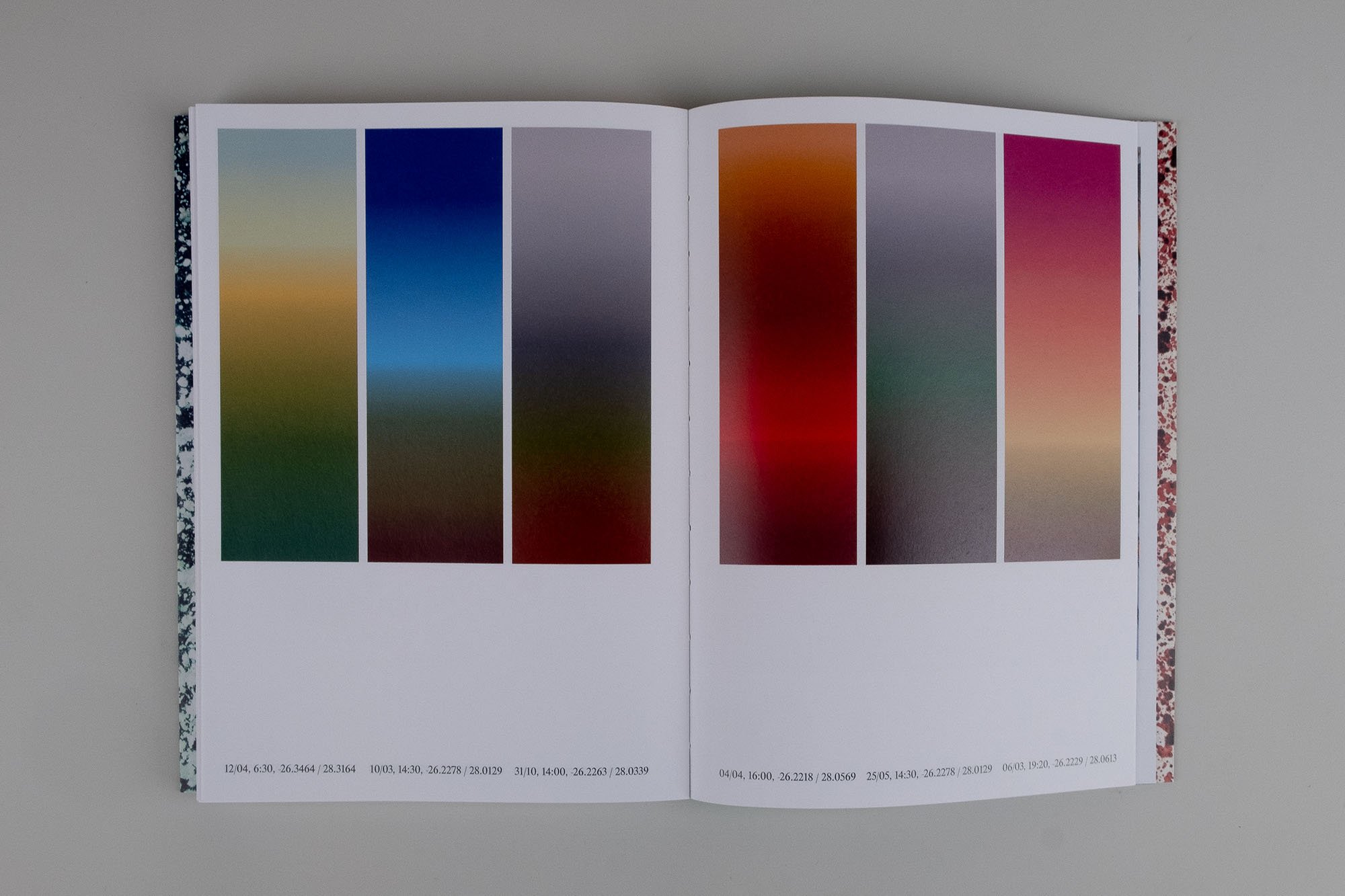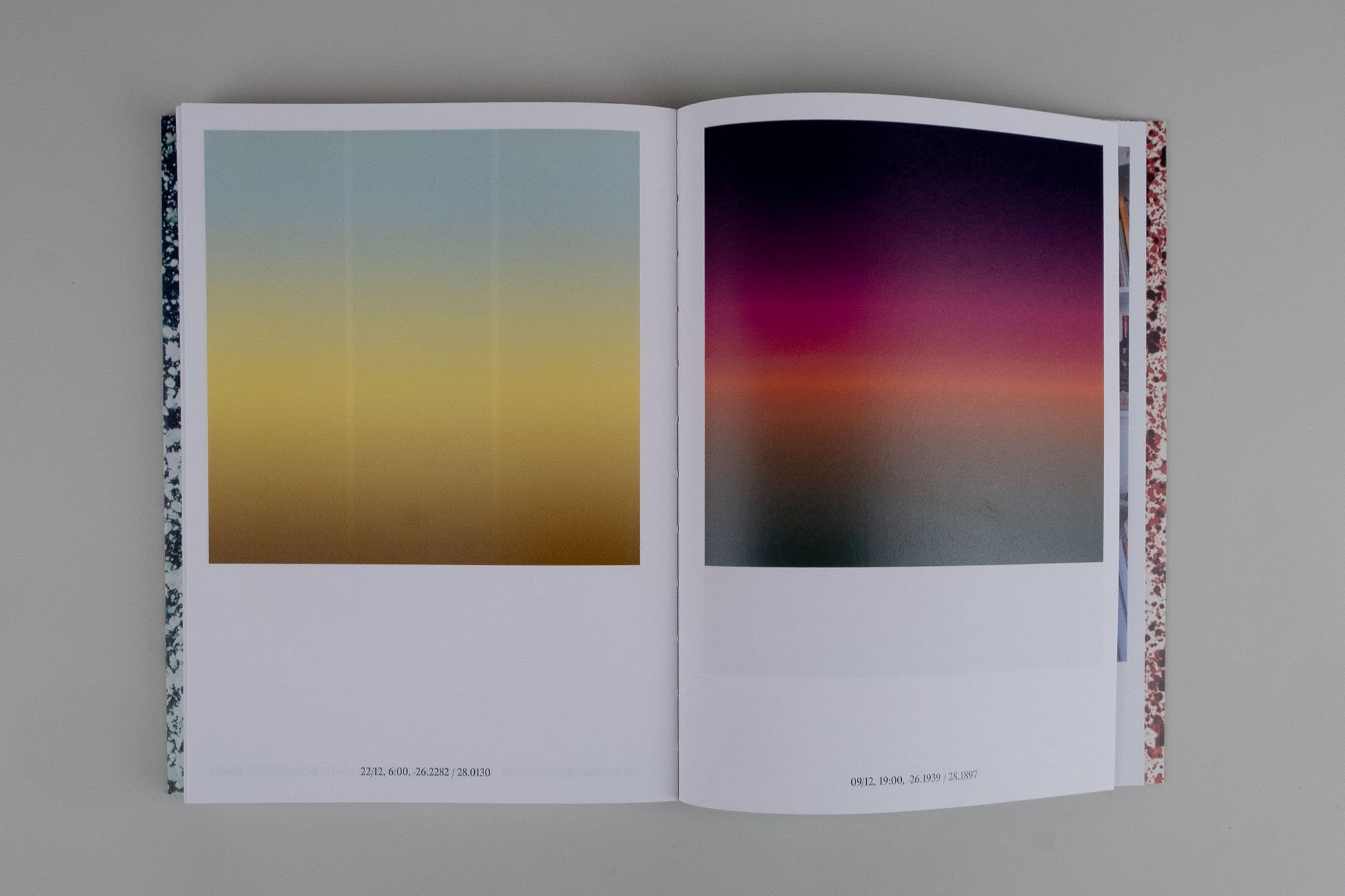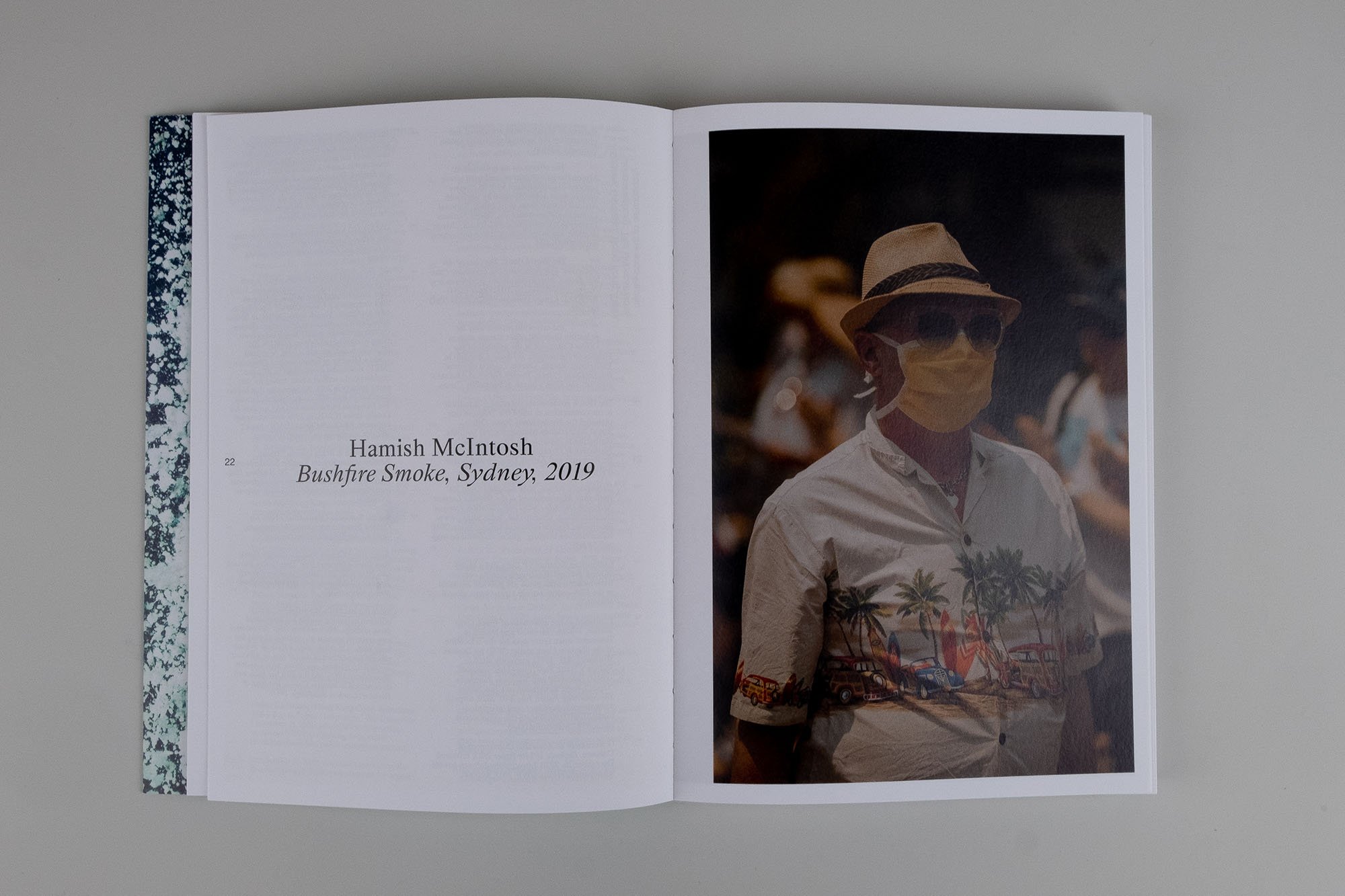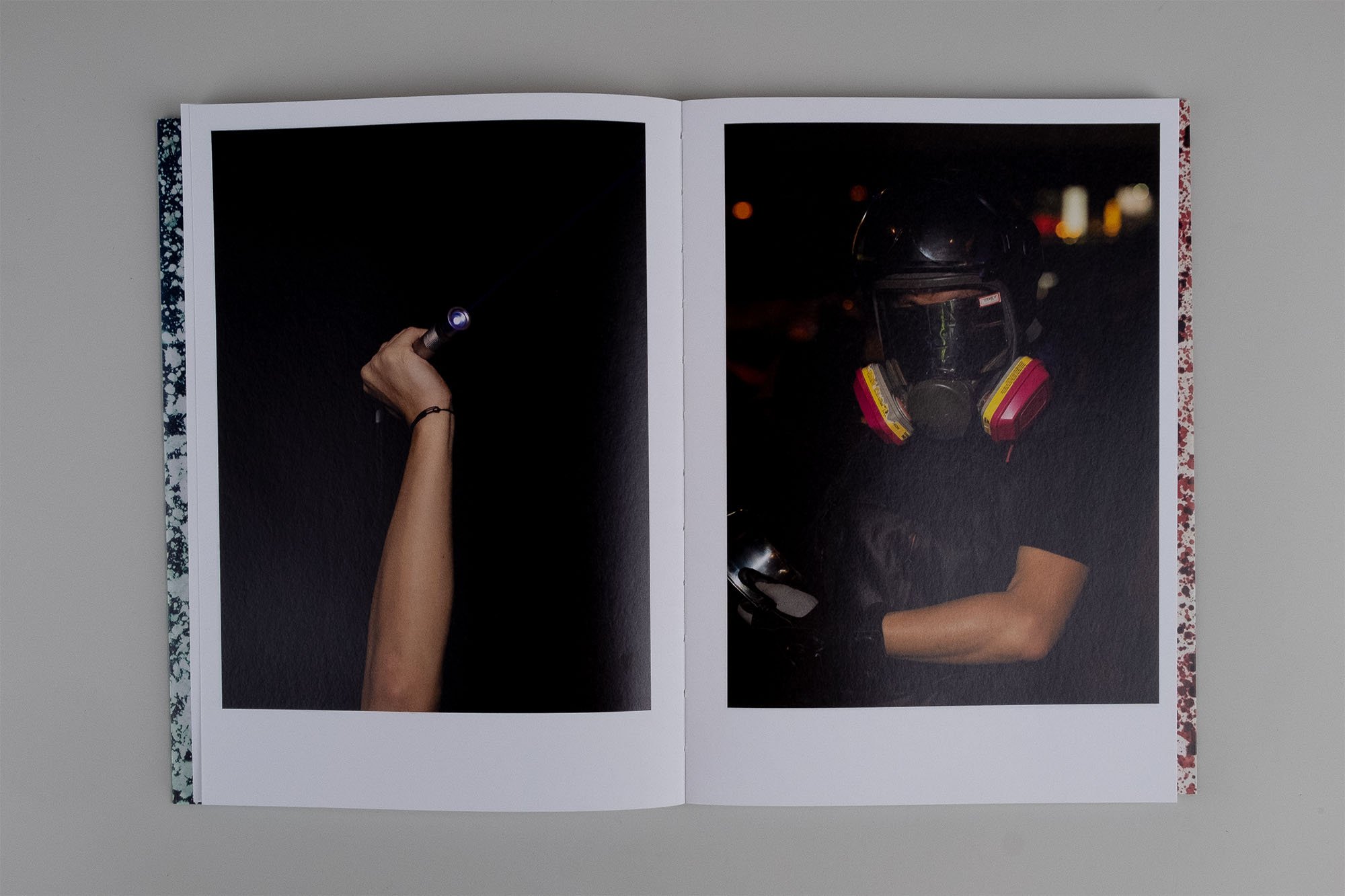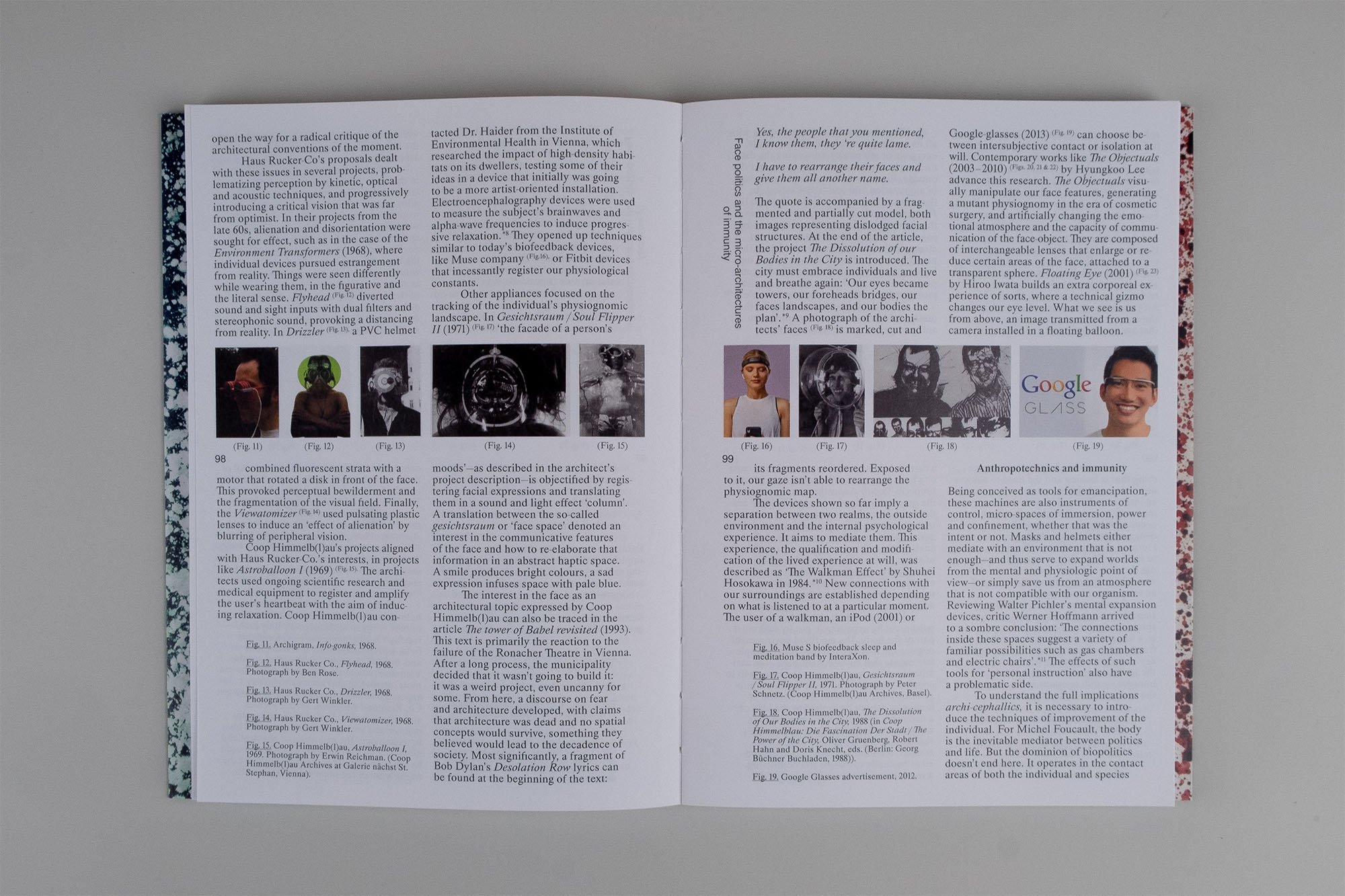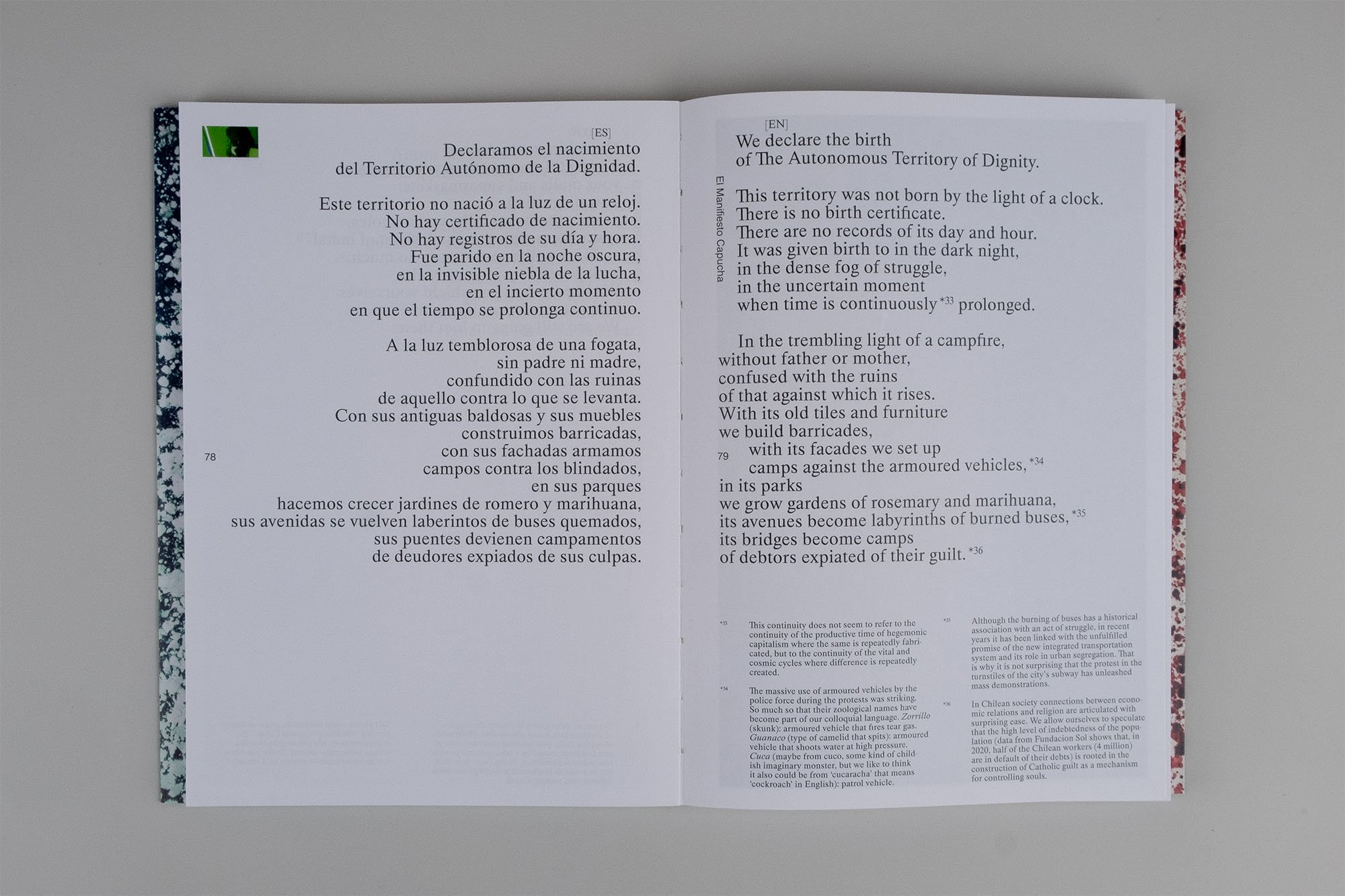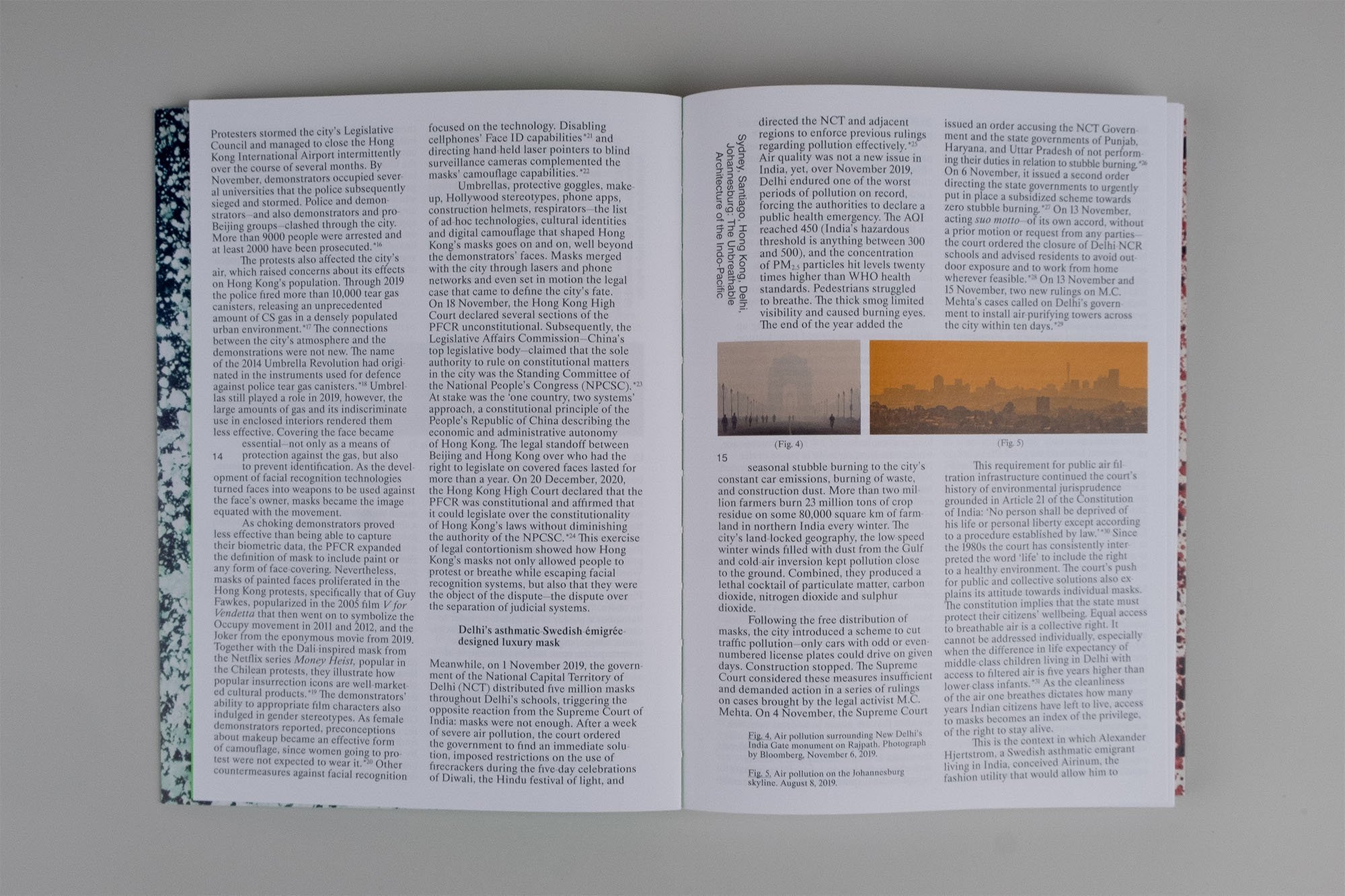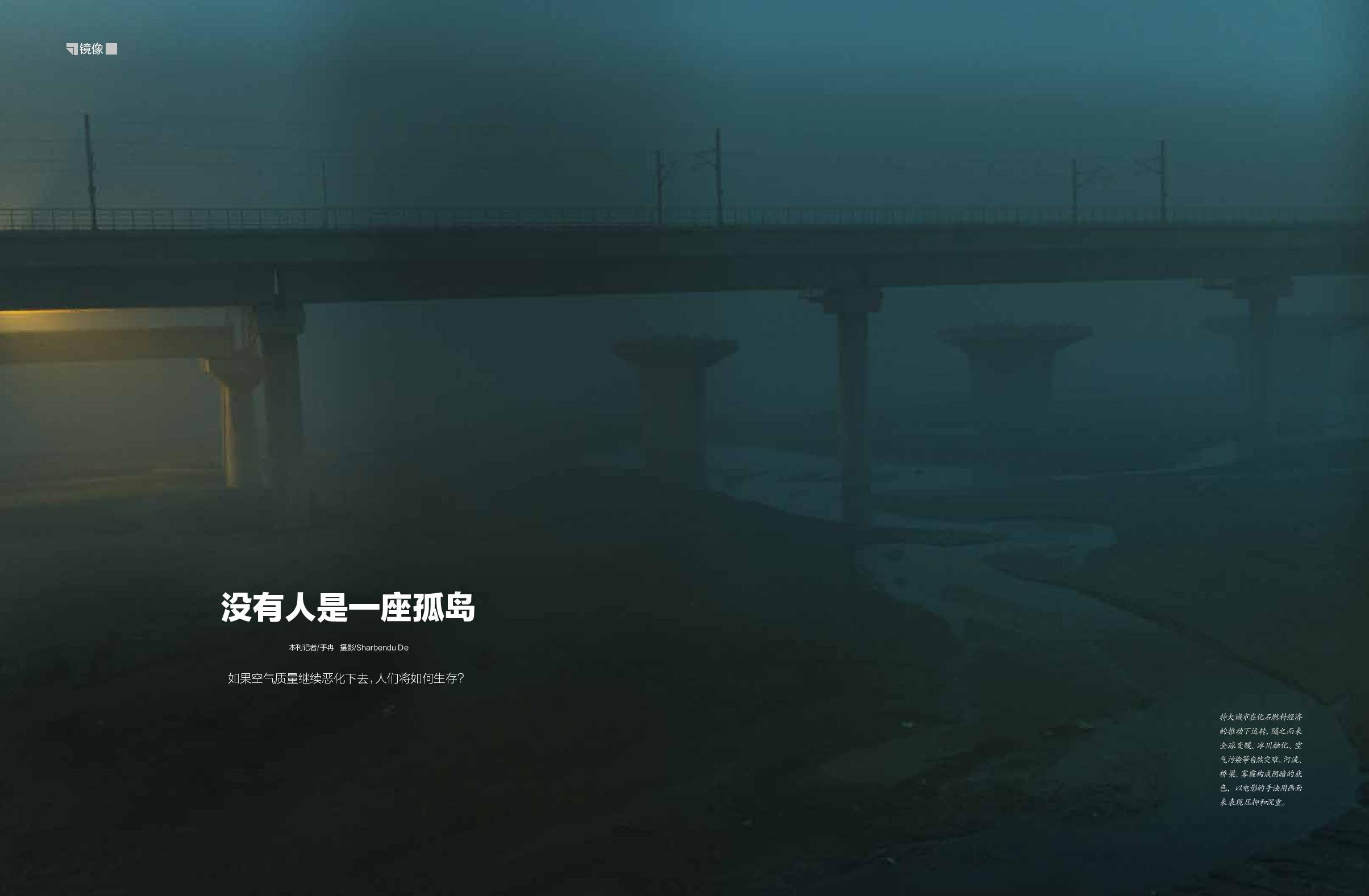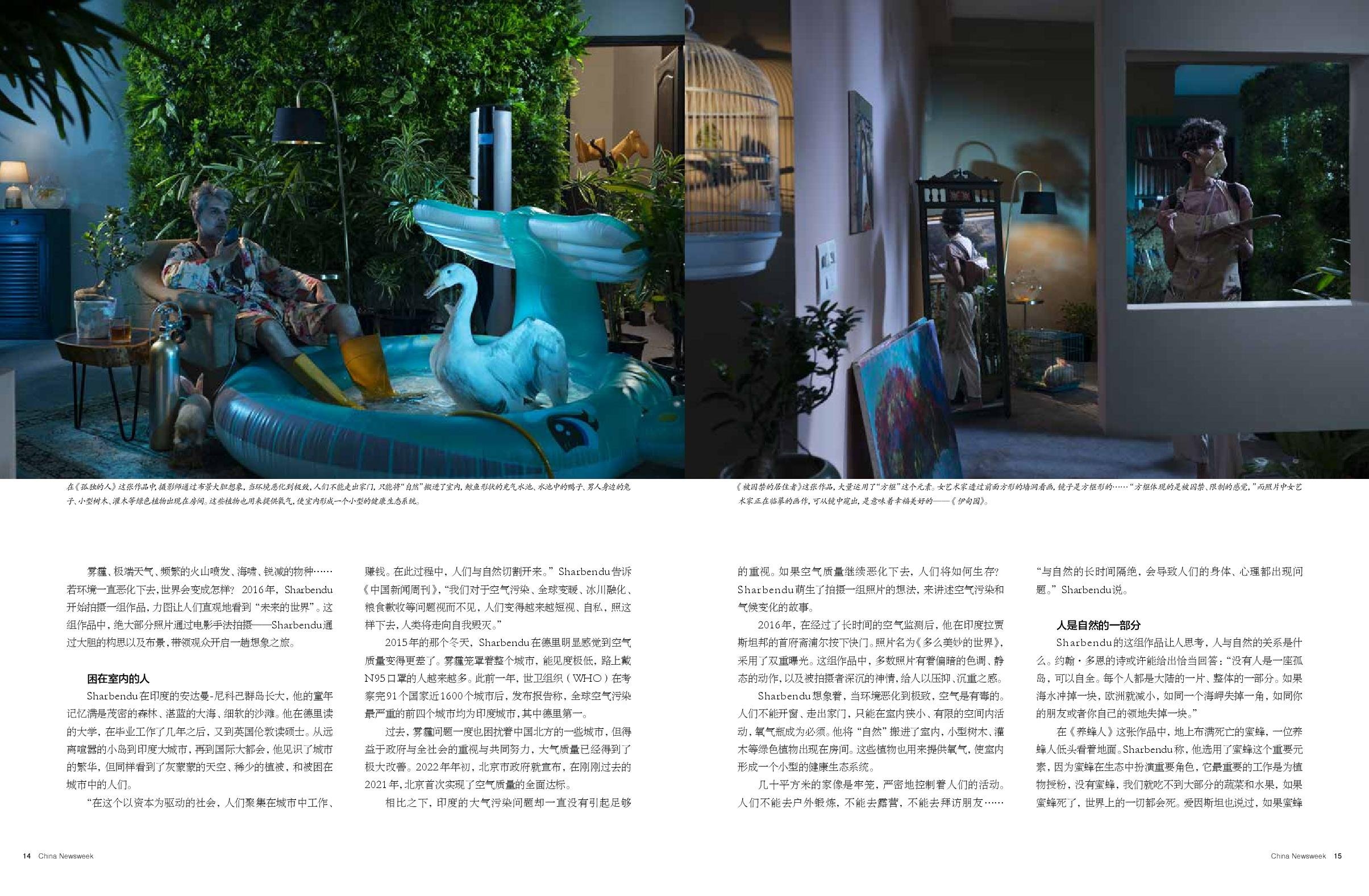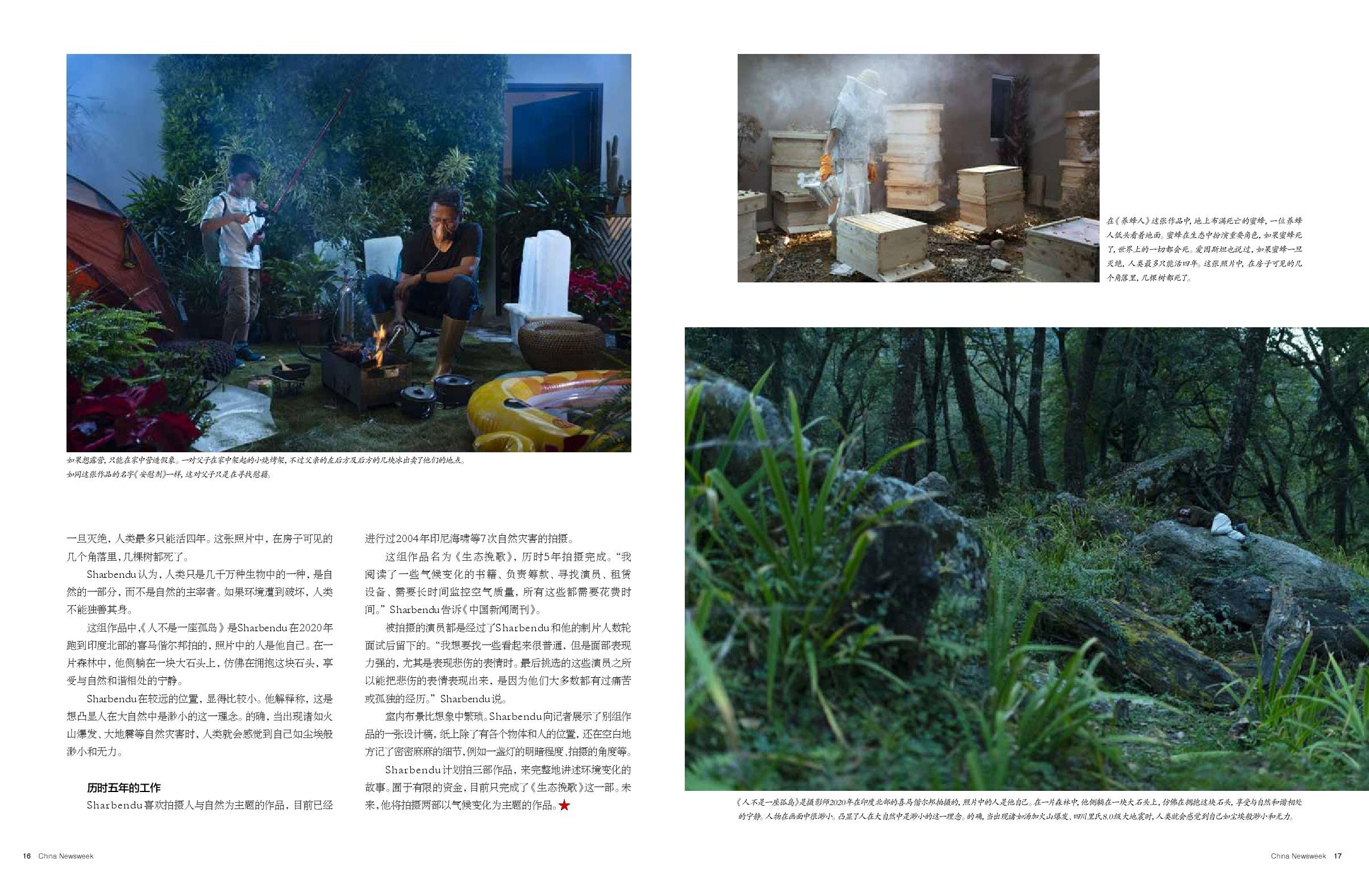“The ‘Solastalgia’ these current works allude to - “the homesickness you have when you are still at home,” is not a state of faraway places, distant times or sci-fi alienations- it is present in almost immediate and relatable spaces, as environmental conditions deteriorate. They act to jolt one out of complacent denials. The dystopian landscapes depict impending times when “oxygen has entered the commerce of human relationships.” The dark, dreamlike photographs are set in domestic spaces, where lone individuals struggle for their survival, refraining from human company, to avoid sharing the scarcest resource of all– clean air. They seemingly narcissistically pleasure themselves, accompanied by metaphoric objects and domesticated animals - rabbits, ducks and pigeons (with a disclaimer that none were hurt), as if seeking solace in multi-species relationships. Are these ontologies of new humans, made of loss, estrangement, and despair?
”
An Elegy for Ecology (2016-21)
Artist Statement:
The hyper capitalistic machinery of megacities, our myopic self-centrism and disregard for nature has made human extinction a fait accompli. Propelled by a fossil-fuel economy, which brought in its wake calamities like, global warming, glacial ice-melting, crop failures, air pollution etc., we are headed for an unsavoury ending. Millions of people in New Delhi and cities across the world suffer from the hazardous consequences of air pollution. Yet we carry on with business as usual until smog takes over our lungs and lives. The problem with air pollution is its lack of visuality—it can’t usually be seen, only felt.
Artistic responses to climate change (and thus our extinction) today has encountered a unique problem — one of disbelief. Amitav Ghosh in The Great Derangement offers a searing insight, ‘The problem of climate crisis despite being the biggest threat to human existence today is still not accepted as a reality when portrayed through cinema or literature’. Difficult to be accepted as reality, they are reduced to genres such as sci-fi and cli-fi, thus ‘othering’ climatic concerns.
How can we visualize issues like air pollution & global warming, something that not only unfolds over a prolonged duration, but also eludes visuality or easy categorizations without resorting to sensationalism? Can our artistic responses create sensorial experiences to aid in forging a deeper understanding of climate change and its adverse effects?
Ruminating over air pollution, global warming, defilement of nature and alienation of the ‘self’ from it, led to the genesis of An Elegy for Ecology in 2016 (completed in 2021). I followed a cinematic approach and worked with a production team comprising lighting designers, set & prop designers, actors, gaffers, light boys etc. Envisioned as a trilogy, in the first part, I speculate a future where heat waves and air toxicity has accelerated extinction of floral and faunal species and confined us indoors. Estrangement from nature has amplified loneliness and solastalgia. Trees and animals have entered private spaces, and clean oxygen has entered the commerce of human relationships. Through this ongoing series of mise-en-scènes using symbolic motifs like animal-shaped inflatable pools and caged animals, the series alludes towards a future we seem to be headed.
———————-
Note 1: Several image titles reference prominent books alluding towards the compelling arguments these authors make in favour of climate change, environmental and ecological concerns.
Note 2: The image titled Dzukou Valley, 2021, references a landscape from the borders of Nagaland and Manipur in Northeast India. In local Angami dialect, Dzüko means 'Soulless and Dull'. Since unfavourable weather conditions did not permit the local indigenous Angami communities to make homes and harvest crops, it led them to say "the valley is very beautiful but is dull and soulless”. https://en.wikipedia.org/wiki/Dzüko_Valley
Note 3: Each mise-en-scène was created on location. No animals were hurt during the making of the series.
Curatorial Essay by Ravi Agarwal
The human-nature relationship has become central to the contemporary ecological discourse. The boundaries of what is ‘human’ and what is ‘nature’ are also in question. The long isolation of nature from the social contract has led to unhealthy lives, and technocentric ravaged landscapes. The histories of separations and of treating the “planet as capital” has culminated in new emergent emergencies, as Covid -19, climate change, sixth extinction, air pollution, which only help accentuate the ever-present interdependencies. Post these crises, the human species may biologically survive, but its emergent psychological and physical embodiments may leave it transformed into another ‘being.’ It is in the interstices of possible potential futures of the human condition that Sharbendu De locates his practice in.
The ‘Solastalgia’ these current works allude to - "the homesickness you have when you are still at home," is not a state of faraway places, distant times or sci-fi alienations- it is present in almost immediate and relatable spaces, as environmental conditions deteriorate. They act to jolt one out of complacent denials. The dystopian landscapes depict impending times when “oxygen has entered the commerce of human relationships.” The dark, dreamlike photographs are set in domestic spaces, where lone individuals struggle for their survival, refraining from human company, to avoid sharing the scarcest resource of all– clean air. They seemingly narcissistically pleasure themselves, accompanied by metaphoric objects and domesticated animals - rabbits, ducks and pigeons (with a disclaimer that none were hurt), as if seeking solace in multi-species relationships. Are these ontologies of new humans, made of loss, estrangement, and despair?
Such a meticulous and engaged artistic endeavor underpins an in-depth consideration for the state of the environment. The multitude of literary references it holds, reflects an engagement with the vast growing contemporary literature on the ecological condition. The artist’s pursuits as a researcher as well as professor of lens-based media is also evident. He has taken us on other important journeys of imagination earlier as well. The set of staged photographic series Imagined Homeland had led us to the borders of Northeast India. The images were an outcome of seven years of interaction and collaboration with the local forest community to co-imagine the futures they want for themselves.
Constructed or staged photographs have a long and illustrious tradition starting from the early seventies. Releasing the photograph from its ‘documentary’ moorings they became documents of an artist’s deeper enquiries. The photographer as imaginer, also became a storyboard creator, set designer, and director. Here, each image is pre-imagined, carefully setup, with props, lighting, models, in pre-determined locations, as in a film-set. They invite a reflection into the artist’s intent, motivations, and imagination. The images unravel time, not as linear narratives, but as complex cyclic resurgent visualities which keeps appearing and re-appearing long after one’s physical encounter with them.
Today, all global is local. The immediate is everywhere. These images can be from everyplace, anywhere. They are not directly political but testimonies of lived human conditions, yet they hold the politics of the moment in their layered presence. As the global and local intermesh, the indeterminable flows between the past and the present, the here and elsewhere – all markers of the Anthropocene, an era where many previous planetary boundaries are being broken by human agency and what we know is unsettling and uncertain. Like air, this moment diffuses and circulates, in an ether of past-present and futures, merging them into a continuum which challenges all simple causality and linearity. Airborne pollutants are not just particles, but are centuries of mined earth, excavated by millions of human desires in desperate pursuits of an elusive happiness. They reflect the broken promise of a techno-capitalistic trajectory. A young Marx had written about the body of the fish becoming alienated from its extended body – water, when it is polluted by industry. This body of work is a reminder that we need to reconfigure and repair our estranged relationships with nature if we are to have any hope for our futures. It may be the Zen of life.
About: Ravi Agarwal is an interdisciplinary artist, photographer, environmental campaigner, writer and curator. Bridging the divide between art and activism, he addresses the entangled questions of nature and its futures using photography, video, text and installation. He was the curator of Imagined Documents at the Rencontres d’Arles 2022, Arles, ‘New Natures; A Terrible Beauty is Born,’ organised by the Goethe Institute Mumbai (Feb 2022) and was the photography curator for the Serendipity Arts Festival (2018 and 2019). https://www.raviagarwal.com
Acknowledgments: An Elegy for Ecology (2016-21), part of a trilogy, is made possible through generous supports from PhotoSouthAsia, an initiative of MurthyNAYAK Foundation and KHOJ International Artists’ Association, New Delhi under their project Does the Blue Sky Lie? Testimonies of Air's Toxicities. It was commissioned by the National Taiwan Museum of Fine Arts, Taiwan, and premiered at Phantasmopolis at the 2021 Asian Art Biennale, Taiwan.
Installation images:
Publications:
Folk Costumes, Indo-Pacific Air, Ed. Urtzi Grau & Guillermo Fernández-Abascal, Art Paper Editions (APE), Belgium, 2022; 17 × 24 cm, 192 p, open spine selfcover, dustjacket
ISBN 9789493146921
With contributions by Dean Cross, Hamish McIntosh, Peter McNeil, Hélène Frichot, La Escuela Nunca y Otros Futuros, Lidia Morawska, Juan Elvira, Matthew Connors, Ricarda Bigolin, Peter Irga and Fraser Torpy, Sharbendu De, Enoch Cheng, Samaneh Moafi, Sumayya Vally, Matteo Dal Vera, and Achille Mbembe.
Editorial:
China Newsweek, 2022:
Press Reviews:
Interviews:
Further reading: Climate Change and its Intersections with Photography: Examining Photography through a lens of Planetary Justice by Sharbendu De commissioned by PhotoSouthAsia.

